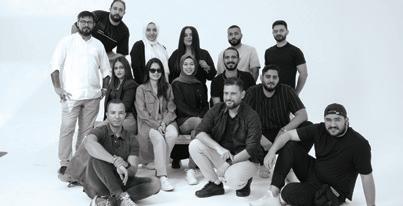
















































































Campaign Middle East recognises ace marketers who have raised the bar across brand and business outcomes.






MSome of the region’s most influential digital professionals share their take on the latest developments and innovations.

NEWS & WORK
12 BRIDGE THE GAP
Unilever’s Anila Gopal discusses why brands need to move from intention to action and lead consumers to a sustainable future.
19 INDUSTRY FORUM
Has the industry found the balance between performance marketing and brand?
Motivate Media Group

Read in-depth coverage from Athar Festival, Saudi Arabia’s largest gathering of the creative marketing industry, which returned to Riyadh with its second edition.
34 GLOBAL VS LOCAL CampaignMiddleEast referees a ‘boxing match’ between Boopin’s Razmik Kalaidjian and TBWA\RAAD’s Dan Leach.
58 WHEN CREATIVITY MET DATA
Google’s Najeeb Jarrar speaks to Campaign Middle East about bringing creativity and AI-driven data together.
92 MATTER OF FACT
Cicero & Bernay’s MD Tariq Al Sharabi presents news, views and trends across the spectrum.
97 APPOINTMENTS
Top movements including new roles and promotions in the region.
98 THE SPIN Mishaps in the world of communications.

Head Office: 34th Floor, Media One Tower, Dubai Media City, Dubai, UAE. Tel: +971 4 427 3000, Fax: +971 4 428 2266. Email: motivate@motivate.ae Dubai Media City: SD 2-94, 2nd Floor, Building 2, Dubai, UAE. Tel: +971 4 390 3550, Fax: +971 4 390 4845 Abu Dhabi: Motivate Advertising, Marketing & Publishing, PO Box 43072, Abu Dhabi, UAE. Tel: +971 2 677 2005, Fax: +97126573401, Email: motivate-adh@motivate.ae
Saudi Arabia: Regus Offices No. 455 - 456, 4th Floor, Hamad Tower, King Fahad Road, Al Olaya, Riyadh, KSA. Tel: +966 11 834 3595 / +966 11 834 3596. Email: motivate@motivate.ae London: Motivate Publishing Ltd, Acre House, 11/15 William Road, London NW1 3ER. Email: motivateuk@motivate.ae www.motivatemedia.com
EDITORIAL: Motivate Media Group Editor-in-Chief Obaid Humaid Al Tayer | Managing Partner and Group Editor Ian Fairservice Campaign Middle East Editor Anup Oommen | Reporter Ishwari Khatu | Junior Reporter Shantelle Nagarajan | Junior Reporter Hiba Faisal
DESIGN: Senior Designer Thokchom Remy
ADVERTISING ENQUIRIES: Chief Commercial Officer Anthony Milne | Publisher Nadeem Ahmed Quraishi (nadeem@motivate.ae) Sales Manager Tarun Gangwani (tarun.gangwani@motivate.ae)
PRODUCTION: General Manager S. Sunil Kumar | Production Manager Binu Purandaran | Production Supervisor Venita Pinto
HAYMARKET MEDIA GROUP: Chairman Kevin Costello | Managing Director Jane Macken
and may not be appropriate for the readers’ particular circumstances. The ownership of trademarks is acknowledged. No part of this publication or any part of the contents thereof may be reproduced, stored in a retrieval system or transmitted in any form without the permission of the publishers in writing. An exemption is hereby granted for extracts used for the purpose of fair review. CampaignMiddleEastincludes material reproduced from the UK Edition (and other editions) of Campaign which is the copyright of Haymarket. Campaignis a trademark of Haymarket and is used under licence. The views and opinions expressed within this magazine are not necessarily those of Haymarket Magazines Limited or those of its contributors.
“THE BIGGEST ELEPHANT IN THE ROOM IS STILL PROCUREMENT.’’
arketers assemble. This iteration of the magazine focuses on Marketing Game changers: leaders who have been given the mandate to build sustainable brands and shape profitable businesses. The search for our Marketing Game changers was not easy, especially given the caveat that we don’t repeat faces and names that we’ve featured over the past few years. We spent days and nights poring through submissions from client-side marketers who are responsible for not only award-winning, but also highly effective campaigns. These are CMOs, heads of brand and directors of marketing who come highly recommended by their peers in the industry, who are raising the bar for creativity with a culturally sensitive lens, bringing innovative strategies to life and leaving an indelible mark on the industry through their contributions to ethical marketing efforts. Through the month, we offered CMOs the opportunity to open up about what marketers need to do ‘to stay sane’ in an industry where it’s easy to get lost in echo chambers or drown in the daily doldrums of KPIs. A few themes stood out in these conversations: community, collaboration, insights and inspiration. CMOs stated that the time has come to move out of the work-home bubble and shared a desire for more “informal policy circles” such as CMO roundtables and sector-agnostic conversations with fellow marketers. They also opened up about the biggest elephant in the room: procurement. Pricing structures and payments remain a pain point, while deadlines and margins are getting tighter. They emphasised that marketing needs to go beyond merely selling things to find purpose, propagate brand values, solve problems, and narrate relatable stories. They also discussed the need to find the balance between strategy and sales; brand and performance; and brand and business outcomes.
Authenticity starts from within, they added, sharing the need for self-awareness and for marketers to therapeutically find their own values and voice within their organisations. Working with brands that resonate with their personal values can create a domino effect of effectiveness inside organisations and across campaigns. In terms of data, marketers called for better data integrity, clearer data strategies and clearer success metrics to be evaluated based on more transparent measurement.
Above all, marketers voiced the need to shift from getting things done faster to going further together, and from working in silos to participating in more knowledge-sharing exercises such as roundtables. So, ending right where we started: Marketers assemble!

The MediaVantage Group has launched The GreenVantage, a new subsidiary led by Managing Director Robin Phillips, to promote sustainable practices across the advertising industry.
The GreenVantage aims to assist clients in reducing their carbon footprints and implementing effective, eco-friendly practices in both digital and physical media channels. Manoj Khimji, Managing Director of The MediaVantage Group, said, “The GreenVantage expands our commitment to making sustainability a core aspect of our industry and, with Robin Phillips at the helm, we are equipped to guide clients in achieving these critical goals while maximising their reach and impact.”
As part of its services, the new agency will provide clients with ESG training and sustainable ad packages.
The Kantar BrandZ Most Valuable Emirati and Saudi Brands report was released this month, revealing the top 10 most valuable brands in the UAE and Saudi Arabia. The report also lists the top brands in the two nations in terms of brand positioning and how fast they are rising in the rankings.
The report strives to provide an understanding of not just how big a company is in terms of physical assets or sales, but also the monetary worth of its brand’s influence and customer perception. The result is a dollar value assigned to brands based on their intangible value perceptions from the opinions of more than 50,000 people about 600 brands across 40 categories.
Amol Ghate, Managing Director MENAP, Insights Division at Kantar, said, “Brands all over the world can look to Saudi and Emirati brands as exemplifying what can be achieved by those businesses that are relentless in their pursuit of brand growth and follow a clear blueprint.”
Telecom company e& (Etisalat) retains its top position as the most valuable brand in the UAE, topping the list for the second consecutive year. Kantar BrandZ assigns the telecom giant a brand value of $7.3bn.
Kantar attributes this valuation to the brand’s worldwide recognition for sponsoring the Manchester City football club. It also credits e& for
providing its Emirati users with some of the fastest 5G speeds globally and for becoming a major player in enterprise artificial intelligence (AI) and customer experience (CX) support solutions.
In Saudi Arabia, locally-based Al Rajhi Bank takes the top spot at a brand value of $14bn with an 11 per cent growth.
Kantar claims the domestic bank exemplifies the spirit of transformation that is driving the Saudi economy. Kantar further credits the bank’s high value to the efforts it has taken to expand its digital footprint.
According to the report, Al Rajhi Bank has embraced new forms of marketing and has recently become the first Saudi bank to have an active TikTok account.
The Kantar BrandZ Most Valuable Emirati and Saudi Brands report reveals that brands in the UAE and Saudi Arabia have collectively grown their brand value by 93 per cent over the last five years and are collectively worth $97bn today.
“Yet, more than 60 per cent of brands in the region still have low meaning amongst their consumers and are not seen as different,” said Ghate. “Brands that can better understand consumer needs and connect their brands in relevant and unique ways will find growth.”
According to the report, Emirati and Saudi brands have successfully leveraged critical brand levers, including being meaningful and different, diversifying into new spaces, and encouraging more people to buy at the right price.
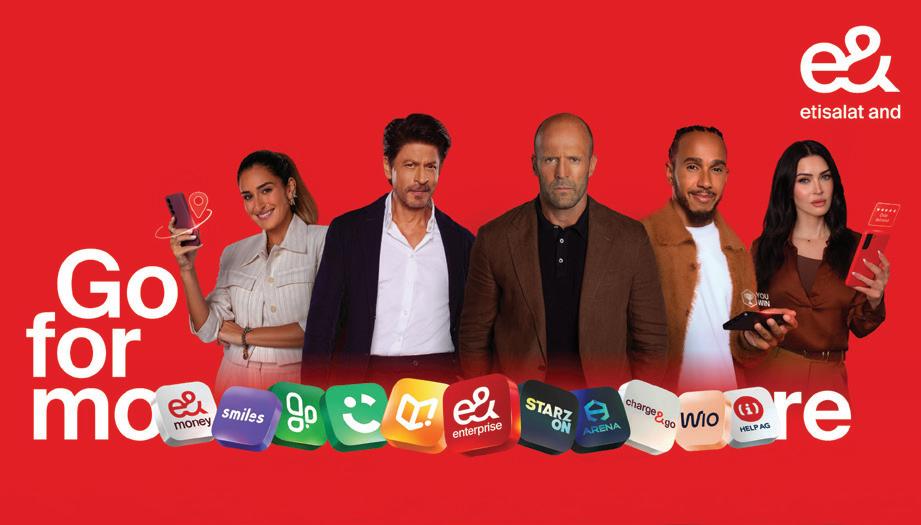

Use

ROSHN Group, the Kingdom of Saudi Arabia’s multi-asset-class real estate developer and a Public Investment Fund (PIF) company, has introduced a new identity and strategic focus that expands its remit to include asset classes beyond its core residential offering.
This transformation into a multi-asset developer, coupled with a complete rebrand, aims to cement ROSHN’s status as a leader in the
Kingdom’s real estate sector and sets the stage for an innovative approach to developing mixed-use projects and multi-asset destinations.
The launch of the Group’s fresh visual identity is also a milestone in its commitment to broadening its real estate portfolio and establishing integrated destinations that cater to society’s diverse needs. The Group’s new portfolio will encompass its core asset classes of 200 million square
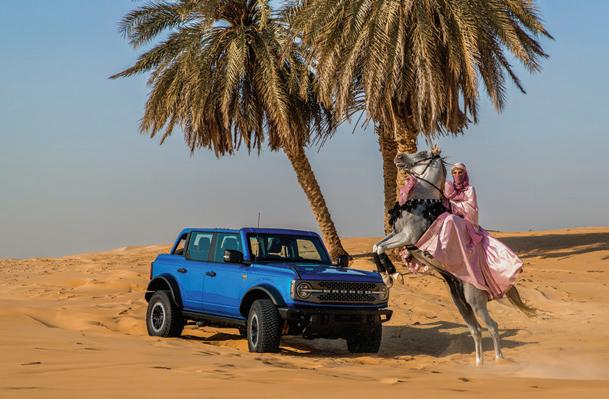

Featuring Saudi equestrian Nora Al-Jabr, the campaign aims to embody the strength and resilience that define the women of Saudi Arabia. According to Ford Mohamed Yousuf Naghi Motors (MYNM), these qualities include being bold, remarkable and unstoppable. Therefore, the campaign draws a parallel to the power of the Ford Bronco. Unfazed by the powerful roar of the Ford Bronco racing alongside her, al-Jabr takes on the off-road champion in a striking piece of content that blends tradition with modernity, paying symbolic tribute to the strength and perseverance of all women. She races the Ford Bronco through the visually stunning landscape of Saudi Arabia.
Creative agency Socialeyez has announced its entry into the Saudi market, supporting the Kingdom’s changing brand landscape with a strategic communications and digital-first approach.
The expansion marks the agency’s commitment to developing brand presence across Saudi Arabia with its ‘Create No Matter What’ philosophy and aims to align with Saudi Vision 2030 through targeted communications solutions.
The agency’s services range from social media management and influencer marketing to digital content creation across sectors including government, energy and lifestyle, customising strategies to meet local needs.
metres of residential property alongside over four million square metres of gross leasable area retail, commercial, and hospitality; its enabling assets of education, mosques, and healthcare; and its opportunity assets of transport and logistics, including warehouses, industrial parks, and knowledge hubs, and leisure and entertainment, ranging from entertainment centres to fitness hubs.
Ahmed Dahduli, General Manager of Socialeyez KSA, said, “We are excited to expand Socialeyez’s footprint into Saudi Arabia, a country rich with opportunities and a thriving market for strategic growth.
With this move, the creative agncy aims to establish long-term partnerships with Saudi brands and strengthen its market positioning and brand platforms through expertly and specifically tailored, culturally resonant campaigns.


Through creative storytelling crafted to work across all earned, owned and paid touchpoints from digital ads, OOH, social media posts, and traditional media to the Property Finder website and mobile application, and even its office elevators, this campaign aims to reiterate the real estate marketplace portal’s purpose to help homeseekers find their perfect home, whatever their lifestyle. The campaign aims to promote the brand’s deep understanding of the emotional journey people go through at different life stages, from first-time homebuyers to families upgrading or downsizing or those looking for the extraordinary at home. Agencies Koto Studio (UK), Mindshare, Weber

Following the footsteps of luxury capitals Paris, Milan and Geneva, Snapchat hosted its first ‘Crafted for Luxury’ event in Dubai, collaborating with The Business of Fashion (BoF), which brought its expertise to the UAE for the first time. The event explored the rapid growth of the luxury market in the region, with GCC locals leading the way. According to insights shared at the event, fewer than 15 per cent of local luxury buyers feel represented in current advertising and 73 per cent of luxury consumers in the region believe brands should better reflect the society they live in.
Hala Zgeib, Head of Luxury at Snap, said, “To resonate with luxury shoppers in the GCC, understanding the cultural context is essential. Culture is the catalyst for growth, innovation and influencing purchase. Snapchat has been ingrained in the lives of GCC locals for over a decade, offering brands the chance to build cultural credibility and genuine connections.”
GCC locals form the foundation of the luxury market growth, as they are 1.6 times more likely to be luxury shoppers compared with expats, so brands that understand and engage with the


This ‘zero-cost’ campaign was developed by a Dubai-based creative agency, for an audience in the UK to drive tourism to the Comoro Islands for its client VisitComoros.org. The team was inspired to offer UK residents an alternative to the bleak weather reports the UK witnessed over the summer, by offering a vacation to the sunny sands of the Comoro Islands. It did this by displaying screenshots of Comoro Islands’ warm and sunny temperatures with enticingly witty copy across it in an effort to play to UK residents’ common disappointment at missing out on having a ‘real summer’. The campaign reported a 15 per cent increase in enquiries and bookings on hotel sites linked to the creatives.
Agency VICE Arabia
unique identities and traditions of the GCC are well-positioned to thrive.
During the event, BoF reinforced the critical need for luxury brands to adopt a hyperlocal approach when engaging with GCC shoppers. In the State Of Fashion 2024 report from BoF and McKinsey, which surveyed fashion executives, the Middle East was believed to be the frontrunner as the most promising market, with 51 per cent net intent. In comparison, North America and China recorded 8 per cent and 3 per cent respectively, while Western Europe was negative 11 per cent.
Olfa Messaoudi, Chief Digital and Marketing officer, L’Oréal Middle East, said, “With Vision 2030 reshaping lifestyles and consumer behavior, the insights emphasised how brands need to decode the unique cultural context to stay relevant. The growing spending power, particularly among dual-income households and women, along with the exponential rise of e-commerce, presents significant opportunities.”
Ramit Harisinghani, General Manager Luxury Tech, Chalhoub Group, said, “It’s clear that while progress is being made, the emphasis remains on connecting with the ‘inner circle’, the close community that influences cultural trends. The discussion highlighted the need for luxury brands to adapt and innovate continuously to maintain relevance in this competitive landscape.”
Miglena Zivkovic, General Manager, Make Up For Ever Middle East, LVMH, who spoke on the importance of ‘Crafted for Luxury’, said, “We are living in one of the most exciting, diverse, and dynamic regions of the world.”
Zivkovic added, “In the GCC, the importance of heritage and the inner circle cross trajectories with fast technological progress and societal advancement, and it is up to us, the global brands, to find the sweet spot of communication and dialogue with our ever-so-glocal consumers of the region. With the help of our trusted partners at Snap, we are equipped with the right knowledge and understanding of the desires and needs of our GCC audience, and the evolving meaning of luxury for them.”


A new sonic identity is part of a complete rebrand for Banque Saudi Fransi (BSF), which aims to become the most modern, innovative and experience-focused bank in the Middle East. The sonic signature blends BSF’s long, local heritage with the bank’s new approach towards innovation and digital transformation. Applying an evolutionary approach, MassiveMusic retained familiar elements of BSF’s previous brand while adding a new, re-energised sense of purpose. Traditional instruments like the oud, which evoke Saudi heritage, are complemented by modern electronic musical production to convey BSF’s forward-thinking, digital approach to banking.

Pixis’ Neel



Pandya shares why AI is not just a technological shift, but rather an opportunity to redefine what’s possible.
“AI is one of the most important things humanity is working on. It is more profound than, I don’t know, electricity or fire.” This statement by Sundar Pichai captures the essence of the seismic shift AI is causing in every aspect of our lives. I agree with this, as it speaks to AI’s far-reaching impact – its potential to fundamentally alter the way we think, work, and solve problems, heralding a new era where global markets are redefined. In this environment, businesses must adapt, or risk being left behind.
AI AS A CATALYST FOR MARKET EXPANSION AND ECONOMIC GROWTH
AI, once an emerging technology now serves as a cornerstone of the global economy and has transformed industries setting new standards in innovation. PwC predicts that incorporating this technology across sectors could boost the world economy by $15.7tn by 2030. Notably, the technology and marketing sectors have experienced the most significant shifts where AI is no longer optional but essential to create adaptive solutions that meet changing consumer demands.



India, Kenya, and Brazil are emerging as key players in AI-driven growth, with their governments working to create environments that welcome AI. Kenya’s ‘AI for Development’ programme aims to use AI in farming to increase crop yields, whereas India is applying AI to precision agriculture to increase productivity. These programmes are giving rise to new economic centres drawing both homegrown talent and international investments. I believe nations that embrace AI not only strengthen their economies but also open up fresh marketing avenues. These new ventures will redefine what’s possible for marketers, opening doors to fresh, purposedriven campaigns that resonate with emerging global values.

AI is reshaping how brands connect with global audiences by enabling a deeper understanding and respect for local customs, traditions, and preferences. Beyond traditional localisation – like translating languages and adjusting visuals, it helps brands adapt their messaging and creative solutions to fit regional cultural norms in ways that feel more authentic.
It plays a crucial role in helping brands navigate the regulatory complexities of global markets as well. In regions where advertising regulations require specific language, imagery, or cultural representation, it acts as a bridge, guiding brands across cultural divides and paving the way for deeper, more meaningful connections.


For example, in markets with strict ad content regulations, it can ensure compliance with government rules around language, symbols, and portrayals. I’m excited to see how the technology will continue to help brands avoid costly mistakes and show genuine cultural respect in the future.
In today’s interconnected world, AI enables brands to break geographic boundaries and tailor their strategies to diverse international markets. By leveraging AI, companies can understand



local nuances and aspirations while scaling globally, hereby gaining relevance and competitiveness across countries.
One such example is global logistics powerhouse DHL Express, which deployed Pixis’ codeless AI to boost demand generation, achieving a 35 per cent increase in click-through rates. For organisations aiming to lead in the global market, AI-driven performance marketing is key to sustained success.
MENA is strategically positioned to leverage AI’s transformative potential, with forward-thinking initiatives like the UAE’s AI Strategy 2031 and Saudi Arabia’s Vision 2030 driving substantial investments. By appointing a Minister of State for AI, the UAE has set a powerful example of how leaders can integrate AI into national strategies, demonstrating a clear commitment to securing a dominant position in the global AI landscape. These proactive decisions not only shape the future of the region but also set the tone for a culture of AI adoption across sectors, fostering leadership and innovation. Saudi Arabia is making significant strides in building its AI foundation, underpinned by a multi-faceted approach that includes $10bn earmarked for ICT infrastructure in its 2024 budget. Alongside this, the government is creating an environment conducive to growth, with the private sector driving innovative solutions and attracting global expertise as well as partnerships. Saudi Arabia’s commitment to cultivating a skilled workforce is evident in its plans to train one million citizens in AI skills by 2030 through the SMAI initiative – an investment that ensures the workforce remains competitive on the global AI stage.






From my experience, MENA-based businesses embracing AI are transforming at an exponential rate. This shift is not just about modernisation – it’s positioning the region as a formidable global competitor, pushing the boundaries of what’s possible.

As AI reshapes the industry, today’s marketing leaders face an imperative to adapt and master new skills to tap into its transformative potential. Leaders who embrace AI don’t just raise the bar on precision and strategy; they drive new standards in creativity and global impact.

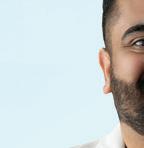

shape the future. Those bold

For those of us at the forefront, this isn’t just a technological shift – it’s an opportunity to redefine what’s possible and shape the future. Those bold enough to lead in this AI-driven era aren’t just keeping up –they’re setting the pace for a world where influence knows no bounds.






where influence knows no bounds.
By Neel Pandya, CEO of EMEA & APAC, Pixis











Case study: To mark Emirati Women’s Day, the Yango Ads team unveiled a project that transformed the exploration of the UAE’s vibrant streets, sharing the journeys of Emirati women after whom many of Dubai’s popular streets have been named.
In celebration of Emirati Women’s Day on August 28, the Yango Ads team transformed people’s journeys through the streets of the UAE, converting an engaging narrative into an experience and highlighting streets named after the UAE’s iconic women.
New ad formats in Yango Maps were leveraged for a collaborative advertising project between AI-Futtaim Toyota and Memac Ogilvy. This campaign honoured the remarkable contributions of the influential women of the UAE, while also highlighting the versatile advertising capabilities of the Yango ecosystem.
Titled ‘Journey into Herstory’, this thematic initiative was designed to facilitate an exploration of the UAE’s streets, showcasing the impactful stories of Emirati women. Yango Maps acted as the tool that enhanced the experience, enabling users to engage with the narratives of the notable women after whom various streets are named in real-time. By integrating storytelling into navigation, the initiative fostered a deeper connection in users for both the brands, as well as the rich cultural background of the UAE. At the core of this campaign was a

comprehensive branded guide that cultivates emotional engagement through strategically developed advertising tools, directing users to audio narratives. The use of branded banners allowed for key messages to be presented clearly and effectively, aligning with the campaign’s overarching theme.
User engagement was achieved by introducing the message, “We know the streets. We know the names. But what of the women behind them?”
Furthermore, 3D objects served as visually appealing markers highlighting specific streets relevant to the campaign, while simultaneously increasing brand visibility within the urban landscape.
The multifunctional use of interactive elements guided users toward a deeper engagement with both the initiative and participating brands.
Commenting on the campaign, Saad Abdullah, General Manager of Marketing and Communications at Al-Futtaim Toyota, said, “Our legacy in the UAE is deep-rooted, and for Emirati Women’s Day, we aimed to spotlight the remarkable stories of those iconic

individuals who have paved the way for women in the UAE today. Their contributions have significantly shaped the nation and empowered others. We believe that celebrating these women by raising public awareness of their lives and achievements is the most fitting tribute.”
“We are excited to be part of this project delivered in collaboration with our partners and the client. Yango Ads welcomes businesses who are interested in developing out-of-the-box campaigns. This project has shown our ability to provide unique placements for brand awareness and drive offline visits to specific locations through Yango Maps. We look forward to bringing more such projects to life”, commented Yulia Kim, Head of Business Development, Yango Ads MEA.
“We’re thrilled to build innovative solutions with our partners and clients. Yango Ads is committed to delivering unique, impactful campaigns that drive offline engagement through Yango Maps. We look forward to bringing more ground-breaking projects to life”, said Bassem Yousri, Head of Agency Partnership at Yango Ads MEA.

SAE Dubai’s Hiba Hassan explains how podcasts are solidifying their spot in the marketing mix.
In a time when trust in traditional media has dwindled, and the hype of social media influencers is fading, a not-so-new medium – the podcast – has found its voice in the marketing world. Podcasts have been around since 2004, initially introduced by Apple and popularised by the iPod, long before social media impressions and influencer marketing.
The platform had a tough start with the complexities of subscribing to podcasts. In the early days, listeners had to manually subscribe by downloading episodes through platforms like iTunes, or subscribing to RSS feeds, compared with today’s one-click subscription methods on Spotify, Apple Podcasts, and other apps.
Globally, 39 per cent of people listen to podcasts monthly, as reported by Edison Research. However, the region – including Saudi Arabia (68 per cent), UAE (62 per cent), and Egypt (59 per cent) – surpasses the global average, according to YouGov’s 2024 report.
This is largely due to the youthful population in the region; for instance, 60 per cent of the population in the UAE is under 30 years old. This younger demographic tends to appreciate content that focuses on self-growth and entertainment, reflected by the popularity of shows like Fnjan, The Dukkan Show, and Seera among others, which align with the Arab culture’s storytelling tradition.
There is an increasing lack of trust in traditional media, with 69 per cent of people finding ads very intrusive on platforms like TV, as reported by the 2024 Spotify Podcast Trends report. In contrast, native sponsorship inserts in podcasts are more trusted due to the growing loyalty between listeners and podcasters. This loyalty makes podcast advertising significantly more effective.
It is such a powerful and intimate connection, since podcasts make listeners feel involved in the conversation. And with podcasters finding new ways to engage listeners, from basic feedback requests to involving the listeners in devising future episodes, this medium is here to stay.
While most podcast content globally remains audio-only, in the Middle East there is a strong trend towards video-based podcasts. This is largely due to the limited infrastructure for podcast discoverability. While search engine optimisation (SEO) has been widely adopted on social media platforms and integrated into Google search, it’s still in its early stages in the podcast space, making discoverability a challenge for many shows.
This drives creators to produce video content that can be promoted on social media platforms like Instagram, TikTok and YouTube. This enhances a podcast’s visibility through Google search and leads audiences back to podcasting platforms. Not to mention that many listeners appreciate the flexibility of being able to switch between listening and watching – for example, listening while driving, and watching while relaxing or eating – giving more value to filmed podcasts.
The most successful platforms globally are Apple Podcasts and Spotify, but the region has introduced its own platforms such as Anghami, Podeo, and Sowt. These local platforms are growing in popularity, driven by the regionally relevant content they produce, achieving wider engagement rates in comparison.

With the average person encountering an estimated 6,000 to 10,000 ads per day fighting for our shrinking attention span, podcasts offer a sanctuary. Podcast episodes tend to average at 40 minutes, ranging from 15 minutes to over 3 hours. Close to 70 per cent of listeners tune in to new episodes within 48 hours of their release, as reported by Edison Research, showing the commitment and loyalty that podcasts inspire.
Efforts to shed light on the regional podcast industry in general include Dubai’s PodFest fourth edition that took place in September. With specific mixed media adverts promoting
“PODCASTS HAVE BECOME A TRUSTED MEDIUM, ALLOWING ADVERTISERS TO REACH ENGAGED AUDIENCES.”
specific podcasts, the popularity of this medium will keep soaring. But more importantly, word of mouth remains the most effective way to grow a podcast audience locally and globally.
It’s expected that by the end of 2024 more than 500 million listeners will be tuning in, with the global podcast advertising market projected to reach $4bn, as reported by eMarketer. Podcasts have become a trusted medium, allowing advertisers to reach engaged audiences. Listeners are 63 per cent more likely to act on a recommendation from their favourite podcaster compared with traditional media, as reported by the 2024 Spotify Podcast Trends report.
Podcasts are solidifying their place in the marketing mix, and with AI-driven technologies such as SoundStack and Barometer making their way to the MENA region through platforms like Next Broadcast Media, advertisers can now target audiences more accurately and ensure brand safety.
By

‘OOH is changing, and so are we’
Talon MENA’s Chadi Farhat speaks to Campaign Middle East about the agency’s journey so far, its path forward, and how Talon focuses on data-led OOH planning strategies, technology, creative and executions.
By Anup Oommen
Global independent out-of-home (OOH) media agency Talon, which is internationally headquartered in London and is regionally based in Dubai, has been delivering strategic, data-driven creative and OOH planning for more than 11 years globally and two years regionally, since its inception in 2022.
Campaign Middle East recently sat down with Chadi Farhat, Managing Partner and Director of Talon MENA, to recap Talon’s journey to the present, its future ambitions, and the agency’s focus on data-led OOH planning strategies, technology, creative and executions.
“Where should I begin?” Farhat said, “Over the past few years, we have witnessed an increased focus on global advertising in general and on OOH advertising in specific, especially given the emerging visions of major GCC countries. Growing client interest in global investments has triggered the need for more strategic, targeted, and effective global OOH solutions and executions. We saw this as a unique opportunity to provide a score of services – as a specialist OOH agency – to deliver seamless, impactful results globally as well as locally.”
He added, “Two years in, we’re proud to say that our clients highly value Talon’s blend of offerings, including strategy, planning, creative, technology and execution, reinforcing our role as ‘global locals’. As our success in meeting this growing demand has become evident, it has also sparked a wave of interest from competitors looking to follow suit.”
Looking to the future, Farhat opined that the ever-evolving OOH industry will only continue to claim a larger and more integral share of the media and marketing mix, especially as we drive progressively into an ROI and data-driven world.
Speaking about Talon’s critical role in such a world, Farhat said, “Clients today are increasingly sophisticated, results-driven, and focused on outcome-based investments. At Talon, we understand that achieving measurable results is crucial, and we know the key strategies to deliver those results effectively. By leveraging the right technology, data, and creative insights, we ensure that brands connect with audiences in the most impactful way maximising ROI and driving success.”
He added, “As this trend keeps growing, Talon’s role is growing right along with it. Our expertise, powered by the latest technology, allows us to create highly effective results that align with our clients’ objectives across all stages of the funnel. Whether it’s a global brand or a local initiative, we are committed to helping clients achieve real, measurable outcomes.”
Appreciating the potential of Saudi Arabia, he said, “Saudi Arabia is a key market for Talon’s growth. With the country’s rapid development and growing infrastructure investments, we believe now is the perfect time to establish a stronger presence there. In addition to our existing office in Dubai, having a local presence in Saudi Arabia, will help us better understand the clients’ dynamics and provide more tailored services. We are excited about the opportunities in Saudi Arabia and the added value Talon can bring there. It all starts with ‘thinking outside’.”
Picking up on this phrase of ‘thinking outside’, we asked Farhat about his take on creative. He said, “We create and craft brand stories, fit for audiences, mindsets, moments and the OOH medium. OOH advertising is not just about placing ads, it’s about creating experiences that engage and resonate with audiences. We approach every campaign with a mindset of creative problem-solving, focusing on how we can deliver value through experiential and immersive content.”
He went on to explain how the creative process at Talon extends beyond design; how the agency focuses on thinking strategically
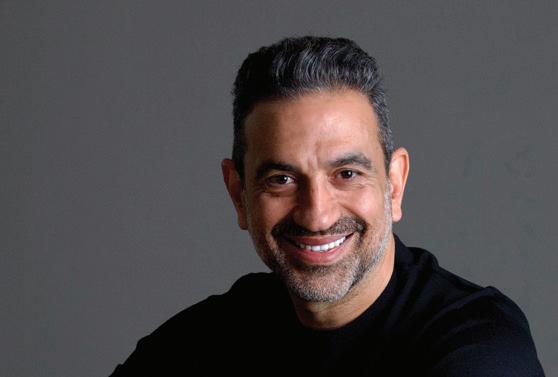

about how to communicate the brand message in a way that captivates audiences.
“This includes everything from the placement and timing of the ad to how it interacts with the environment and the local culture,” he said.
Sharing his pride in the creative campaigns that Talon has executed, many of which have garnered international recognition, Farhat added, “Our approach is to push boundaries, and our award-winning campaigns are a testament to the talent and creative capabilities of our team. We believe the region has immense potential for creative growth, and Talon is excited to be playing a pivotal role in elevating the sophistication of OOH advertising here.”
Discussing the sophistication of OOH, Campaign Middle East also asked Farhat about Talon’s proprietary technology platforms that are built specifically for the sector.
“When you step back and look at the trend, you see that OOH is changing fast, and so are we. Our proprietary technology platforms built specifically for OOH, help us plan, build, and deliver, faster more effective advertising campaigns; measurement is at the heart of every campaign strategy. Our set of tech tools is built to support each unique campaign need, creating a streamlined journey from concept to execution,” he said.
Delving into them a bit more in detail, Farhat added, “For creative testing, Canvas ensures messages resonate before they reach audiences – heatmaps, and eye-tracking technologies are used to identify the efficiency of the creative. For audience planning, Ada, our digital monitoring product (DMP), enables us to identify and understand target audiences with remarkable accuracy, providing a rich foundation in audience movement insights. Atlas, our demand-side platform (DSP), then leverages these insights for precise, efficient audience buying, delivering on the data processed through Ada.”
Talon has, thus, made audience-first planning in OOH easier than ever before through its advanced tech solutions.
“By integrating our different data sources such as travel patterns, mobile location data and social media insights, with robust audience measurement, we’re able to meet diverse campaign objectives across the full marketing funnel,” Farhat concluded.

Consumers hold incredible power in the fight against climate change. While governments and corporations play critical roles, individual choices and habits can additionally drive meaningful impact.
The concept of the ‘conscious consumer’ has been heralded as a beacon of hope for a more sustainable future as changes in consumer behaviour could significantly cut greenhouse gas emissions – something increasingly recognised by reports from the Intergovernmental Panel on Climate Change (IPCC).
In its latest report, IPCC identifies that demand-side strategies can reduce emissions by 40 per cent to 70 per cent globally by 2050. Companies with a proven track record in sustainability, such as Unilever play an essential role by breaking down barriers and creating opportunities for consumers to shift toward greener habits.
Whilst awareness of sustainability is increasing, a persistent gap remains between consumers’ stated intentions and their actual actions. The Kantar Sustainability Sector Index (2022) found that while 97 per cent of people globally express a desire to live more sustainably, only 13 per cent actively change their behaviours. This gap is particularly evident in everyday shopping, where decisions are often made on price or convenience.
Some consumers lack sufficient information about sustainable choices, while others fear they might compromise on quality, price or convenience. In the UAE, the Ipsos Views of Sustainability study (2023) report states that 57 per cent of consumers say they’re willing to pay more for eco-friendly products, though many hesitate if they perceive a drop in quality or usability.
Unilever’s Anila Gopal discusses why brands need to move from intention to action and lead consumers down the path to a sustainable future.
Sustainable products are just the start: A lot is happening behind the scenes to make sustainable choices simpler and accessible for everyone. Today’s products are becoming both greener and better quality as companies work to cut down emissions, reduce waste in packaging, and use eco-friendly materials. From how products are made to how they reach us, everything is being rethought to make it easy to choose sustainably without giving up on quality or value.
Going beyond product and education alone to drive choices: For consumer brands, driving sustainable behaviour change requires more than just raising awareness; it involves creating motivation and reinforcement through compelling communication and aspirational experiences. A tried-and-tested approach that has proven effective for over a decade leverages five key strategies: make it understood; make it easy; make it desirable; make it rewarding; and make it a habit. Each principle is crafted to help consumers adopt sustainable behaviours as a natural part of their daily routines. Education is a critical first step but is not enough on its own. Brands, as specialists in behaviour change, use direct and indirect rewards to make sustainable choices not only accessible but also rewarding. High-quality, sustainable products that are good value encourage consumers to adjust their everyday shopping habits with confidence. By making sustainable actions socially recognised and impactful, brands assure consumers that their choices benefit both themselves and the planet – driving positive, lasting shifts in society.
A local example: sustainable choices and mangrove restoration: An upcoming campaign by Unilever and its partners,
“CONSUMERS ARE KEEN TO MAKE A DIFFERENCE, BUT THEY NEED MORE SUPPORT.”
Mastercard, Lulu Retail and Emirates Nature WWF, provides a locally relevant example of how brands can inspire sustainable action. Mangroves are a vital climate solution, and with the UAE committed to planting 100 million by 2030, mangrove restoration taps into a powerful regional priority.
This initiative educates consumers on the environmental impact of mangroves and enables them to participate directly. The purchase of sustainable products contributes to mangrove restoration through Mastercard’s Priceless Planet Coalition, giving consumers a meaningful way to support climate action.
Research from IPCC shows that people are more likely to make eco-friendly choices when it’s easy and when there are rewards involved. Using strategies like simple choices, clear labels and social incentives, brands can help people pick greener options without much effort. This campaign emphasises the benefits of choosing sustainable products and looks to encourage lasting change in behaviour, making it easier and more rewarding for everyone to care for the planet.
The data is clear: consumers are keen to make a difference, but they need more information and support to do so. Companies, brands and retailers play a large role in ensuring that consumers are better informed so that they can align their purchasing habits with their values.
The journey towards sustainable consumption is not easy, but promising. By offering consumers great sustainable products at good value, we can bridge the gap between intention and action and ensure that every consumer choice contributes to a more sustainable future.
By Anila Gopal, Global Sustainability Head, Brands & Middle East Advocacy, Unilever


SEC Newgate Middle East’s Elena Gramatica shares data on consumer perceptions of ESG priorities and how they feel governments and organisations are performing.
Environmental, social, and governance (ESG) has been under intense scrutiny over the last 12 months. With geopolitical tensions, economic weaknesses and cost of living increases in some parts of the world, the investment needed and costs associated with a global transition to net zero carbon emissions have put businesses under pressure. Here in the UAE, the fourth edition of SEC Newgate’s annual ESG Monitor report found there is a strong understanding of ESG amongst residents and high expectations for businesses to improve their performance and prioritise setting and meeting ESG goals.
Respondents in the UAE are very familiar with the term ‘ESG’, being the third most likely to say they had a good understanding of it (39 per cent), behind only Singapore (41 per cent) and Hong Kong (43 per cent). A core of about 6 in 10 people in the UAE remains very highly interested in ESG issues, slightly up on 2023.
This greater understanding could be in part due to Cop28, the 28th annual UN climate meeting that was held in Dubai less than 12 months ago, which put the UAE and its climate ambitions in front of a global audience.
With the UAE firmly positioned as a global hub and growth engine for sustainability (along with technology, business, commerce and tourism), the country is uniquely positioned to accelerate inclusive climate progress. In addition, the UAE has committed to reducing carbon emissions as part of its Net Zero 2050 strategy, with some industries early leaders, adopting policies and regulations to support the government in reaching this target.
Of those asked, 90 per cent of UAE participants gave an importance rating of 7 or more out of 10 for large corporations

“82 PER CENT OF PEOPLE IN THE UAE SAID THAT COMPANIES SHOULD PLAY A MORE ACTIVE ROLE IN SOCIETY.”
to conduct business responsibly, and a similar rating (88 per cent) for small to medium businesses. Globally, perceived importance is lower with only 81 per cent saying the same for large businesses and 75 per cent for small to medium businesses.
More than four in five people (82 per cent) in the UAE said that companies should play a more active role in society.
A similar percentage of people (83 per cent) hold a strong belief that performing well on ESG responsibilities doesn’t have to come at the expense of profitability.
When asked their opinion on top performing industries in the UAE, airlines came out on top, with 89 per cent giving a
performance rating of between 7 and 10 out of 10 for conducting business responsibly. Performance ratings are relatively strong across the board in the UAE, with four industries following closely behind, all receiving an 88 per cent performance rating: banking and financial services, transportation, supermarkets and grocery stores, and tourism.
People in the UAE care a lot about broader social and environmental issues, with 97 per cent saying the UAE is on the right track (putting the UAE in first place and much higher than the global average of 47 per cent), showing optimism is high across the country.
The UAE report also showed that 67 per cent of those asked think companies should act in the best interests of all stakeholders, rather than prioritising shareholders – with the majority of investors (64 per cent) also believing this.
There is confidence in the UAE, with people having a comprehensive understanding of what ESG means, and the positive role that the government is playing in supporting corporations to be more accountable.
Despite other pressing concerns of the public in their day-to-day lives, most still see ESG issues as important to address.
This is both a communication and operational challenge for businesses and governments, so there is still more work to be done when it comes to ESG.
Companies are under intense scrutiny on ESG issues, but failing to act ambitiously and failing to be transparent about their plans and achievements on ESG issues poses a significant reputational risk.
By Elena Gramatica, Founder and CEO, SEC Newgate Middle East
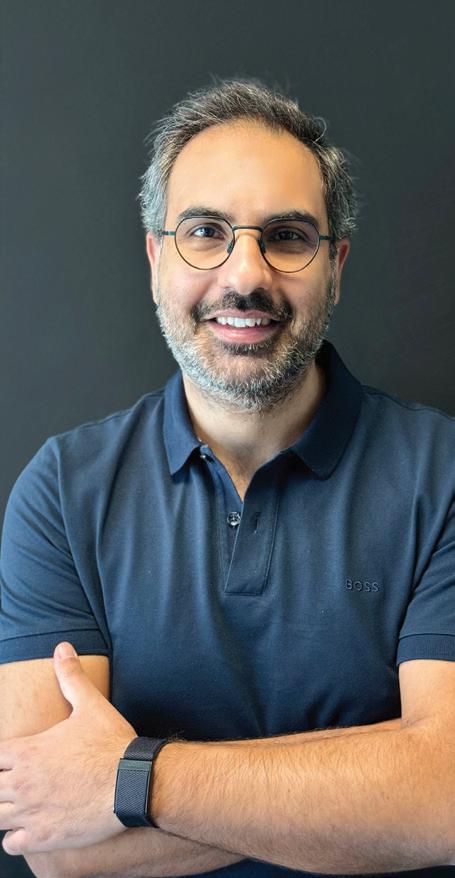
Impact BBDO’s Jad Rabahi discusses the need to redefine the client-agency relationship.
In recent years, the client-agency relationship has become increasingly transactional. Many collaborations have been reduced to task execution, with agencies often seen as service providers rather than strategic partners. This transactional approach may meet immediate goals but limits what brands and agencies can achieve together, especially in a dynamic region like the Middle East.
As audiences crave authenticity and brands seek deeper connections, it’s essential to reestablish the client-agency relationship as a true partnership. With shared vision and mutual respect, agencies and clients can create work that is bold, relevant and lasting. These partnerships enable brands to connect authentically with audiences, moving beyond one-off projects to create enduring impact and value.
At the core of any successful partnership is trust. True collaboration requires trust – it allows for honest feedback, open dialogue and smart risks that advance the brand. When trust is in place, agencies and clients can challenge each other’s ideas constructively, leading to unexpected solutions and innovative campaigns.
In the Middle East, where cultural understanding and authenticity are critical, trust becomes even more valuable. Campaigns developed in high-trust environments are 67 per cent more likely to meet or exceed key performance indicators (KPIs), according to Nielsen. For agencies, trust provides the freedom to push boundaries, while clients gain confidence that brands are represented with integrity. Building trust isn’t instantaneous – it requires consistent, transparent communication and a commitment to integrity. This includes sharing insights, respecting each other’s expertise, and listening to different perspectives. When both client and agency trust each other’s intentions, they establish a foundation for confidently tackling challenges together.
A shared purpose also streamlines the creative process. When both client and agency understand the ‘why’ behind a campaign, they can make faster, more aligned decisions, avoiding unnecessary revisions and ensuring the final output reflects the brand’s long-term goals. In a fast-evolving region, this clarity allows both sides to adapt to shifting conditions without losing sight of the brand’s core message.
Purpose-driven collaboration fosters a sense of ownership on both sides, where both parties are equally committed to seeing the campaign succeed. Our recent campaign with the UAE Government Media Office, Bring Your Impossible, illustrates the power of a trustful partnership. Voiced by Idris Elba, this campaign invited global innovators, entrepreneurs and visionaries to bring their boldest ideas to the UAE – a nation known for turning ambitious dreams into reality. The campaign was not just a call to action but an invitation to become part of the UAE’s story of progress and innovation.
“ALONGSIDE TRUST, A SHARED PURPOSE IS FUNDAMENTAL.”
In a competitive region like the Middle East, where audiences value authenticity, trust-driven campaigns resonate with consumers who appreciate transparency and cultural alignment.
Alongside trust, a shared purpose is fundamental. When clients and agencies align on broader goals beyond a single campaign, they achieve something more enduring. A purpose-driven approach ensures that every decision reflects the brand’s mission and values, creating cohesive and resonant work.
Research from Deloitte shows that brands with purpose-driven partnerships see brand value increase by an average of 15 per cent annually, proving that a united vision is a powerful strategic asset.
From the start, our partnership with the UAE Government Media Office was built on a shared purpose: to position the UAE as a hub of limitless potential, where bold ideas are welcomed and encouraged. This alignment allowed us to craft a globally resonant message, showcasing the UAE as a place where people can achieve the ‘impossible’.
The results speak for themselves.
In its first week, the campaign garnered more than 40 million views, sparking conversations across social media and capturing the attention of a diverse audience. This level of engagement highlights how purpose-driven partnerships not only amplify the message but elevate the brand by showcasing its values and aspirations.
As we look to the future, the client-agency relationship is at its best when it’s a true partnership. It’s time to move beyond traditional roles and embrace a model where both sides contribute equally, creating campaigns that connect deeply with audiences and stand the test of time.
In the Middle East, collaborative partnerships are no longer a luxury – they’re a necessity. When built on trust and shared vision, these partnerships don’t just produce exceptional work; they drive positive commercial outcomes for both client and agency. By investing in these kinds of relationships, agencies can elevate brands, inspire audiences, and bring ambitious ideas to life, all while achieving their own business goals.
By Jad Rabahi, Managing Director, Impact

Here are the facts: The Middle East region is witnessing an unprecedented boom in gaming and esports. The numbers speak for themselves. Publicly available data on the recent Esports World Cup (EWC) held in Saudi Arabia show that it garnered more than 250 million views across all platforms, with total viewership of approximately 500 million. More than 1,600 influencers jumped on the bandwagon, with more than 200 of them turning up on site at the event. EWC was covered extensively within more than 15,000 articles and video features across international and regional media outlets.
It’s no surprise that some of the most recognised brands in the region, including STC, Qiddiya, Sony, PepsiCo, Aramco, Nestlé, Amazon, Unilever, Mastercard, Adidas and Kraft Heinz, among many others, partnered with EWC through sponsorships, naming rights, activations, productions, booths, and campaigns and more.
The demand from brands echoes consumer sentiment. Recent reports indicate that in Saudi Arabia, almost 70 per cent of the population are gamers, approximately half of whom are women, highlighting how esports and gaming hold a particularly strong appeal. Couple these figures with 100 per cent internet penetration, 134 per cent mobile users in the Kingdom, and a dominant youth population – people under the age of 30 – who account for 63 per cent of Saudi Arabia’s overall population, and we’re left with little doubt about where consumers are spending the bulk of their time during the day.
In conversation with Campaign Middle East, Mohammed Alnimer, Sales Director at the Esports World Cup Foundation, says, “By throwing their hat into the esports and gaming ring, brands can tap into this vast and fastest-growing audience, increasing their visibility and reach, and forging connections in a way that has not been seen in any other industry.”
Campaign Middle East also speaks to leaders at Amazon, Adidas, Division, NES (Nesma Esports), and Jack Morton about how brands that are active within the esports and gaming sector are reaping benefits in terms of their long-term brand-building efforts, growing a loyal consumer base, and

improving business outcomes by accessing new revenue streams.
Division’s Founder and CEO, Nabil Moutran, says, “The great thing about the gaming and esports space is that it is purely centred on active engagement and entertainment where the audience and even the gamers themselves have an active role in the content itself. This presents an exceptional opportunity for brands to build lasting bonds with their customers. Building brand equity with one’s customers requires consistency and long-term thinking and consistency in activities. Brands that approach gaming and esports with the same methodology will enjoy a positive ROI.”
Several industry leaders also point to metrics proving the effectiveness of partnering with EWC through in-game advertising, branded virtual items and sponsored content on streaming platforms.
Commenting on the marketing benefits for Adidas, which is active on Roblox, Fortnite and Rocket League, Bilal Fares, SVP and General Manager at Adidas EMC, says, “The gaming industry has redefined marketing with immersive, personalised and community-centred strategies. Gaming initiatives allow us to connect with younger audiences in meaningful ways, providing a model for other sectors to innovate by blending digital and physical experiences to foster brand loyalty in an interactive, community-driven landscape.”
Fares adds, “Committing to the gaming space means participating in an innovative ecosystem that influences culture globally. For Adidas, partnerships in gaming allow us to build meaningful, lasting connections
Campaign Middle East speaks to leaders at the Esports World Cup Foundation, Amazon, Adidas, Division, NES and Jack Morton about tapping into the brand and marketing benefits of the booming esports and gaming sector in Saudi Arabia.
By Anup Oommen
with diverse communities by creating memorable experiences rather than simply showcasing products. True brand sustainability is about building genuine, enduring relationships that go beyond individual campaigns.”
The leaders even reflect on the impact that the sector has on brand perceptions by being part of a ‘cultural movement’.
Ahmed AlBrahim, Amazon.sa Retail Category Leader for KSA, says, “For us, this partnership was not just about sponsoring an event. It was about embedding ourselves within the fabric of the Saudi community. We were thrilled to support the passions of Saudi gamers and create a platform that resonated with the Kingdom’s vibrant cultural identity. By aligning with popular local initiatives like the Esports World Cup, we demonstrated our commitment to engaging deeply with Saudi society.”
Dan Lord, Jack Morton Dubai’s Executive Creative Director, says, “Community is everything in this world. Gaming historically has community-driven origins, built organically from the ground up. Brands need







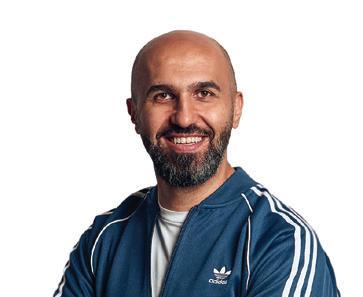

to think and act community-first. Games are designed around the behaviour of their players and communities – MENA brands effective in this space are putting the gamer at the heart of the narrative.”
Adidas’ Fares adds, “Community building turns brand recognition into long-term loyalty. By creating spaces for people to connect around shared interests, such as our partnerships with local artists and designers, we establish deeper, more memorable ties with consumers. These communities often go on to champion the brand within their own circles, which enhances organic reach and brand recall.”
The fact that gaming has become an intrinsic part of Middle East culture, particularly in Saudi Arabia, is well documented. Even the aspirational Vision 2030 goals, which promote a social-economic pivot, have positioned gaming and esports as a key area for investment as part of the Kingdom’s diversification strategies.
Amazon’s AlBrahim says, “The esports and gaming landscape has evolved from a niche interest to a vibrant and influential cultural phenomenon.”


He adds, “We embraced the Kingdom’s digital gaming wave, offering customers across the region an exceptional combined gaming and online shopping experience.”
Gaming and esports also has been heavily backed by the Saudi government. Launched by Saudi Arabia’s Crown Prince, Prime Minister, and Chairman of the Council of Economic and Development Affairs, HRH Prince Mohammed bin Salman bin Abdulaziz in 2022, The National Gaming and Esports Strategy aims to achieve economic impact by contributing approximately SAR 50bn directly and indirectly to the gross domestic product (GDP) and creating more than 39,000 new job opportunities by 2030.
The Kingdom has reportedly already invested more than $20bn in the gaming sector, with approximately $6bn spent on acquiring gaming companies. In 2022, Saudi Arabia’s Gamers8 festival featured a $45mn
prize pool, making it one of the richest esports tournaments globally at the time.
In 2024, the prize pool at the Esports World Cup held in Riyadh crossed the $60mn mark, making it one of the biggest gaming events globally.
“Brands in the Middle East are recognising the enormous potential of esports by combining digital and physical experiences and investing in content with creativity,” EWC’s Alnimer says. “Take STC, the Saudi telecom company, for example, which developed a full ecosystem around gaming and esports. They were not only the backbone of our event by providing essential connectivity, but also launched a full activation programme for casual players and fans with competitions and brand experiences.”

Amazon.sa and Amazon.ae, particularly among passionate gamers and fans of the esports and gaming industries. These targeted promotions not only elevated the shopping experience for our customers but also positioned Amazon as a destination for both entertainment and essential gaming gear.”
As with any rising trend within the creative, marketing and advertising sectors, esports and gaming are also facing growth pangs.
Each of the leaders that Campaign Middle East speaks to as part of this ongoing discussion also offer a word of advice on how to overcome challenges facing a lucrative sector.














Division’s Moutran says, “The main challenge is education, experience and confidence. Knowledge around what can be done in the gaming space and how that can complement the broader marketing strategy or even campaign objective is always the starting point.”





Division’s Moutran takes this a step further by highlighting three innovative marketing strategies that are emerging within the gaming and esports sector:
- In the game: This is any form of advertising message that does not disrupt the game play. It includes everything from deploying ads around the side of a football pitch in EA FC (as you would see in real life) all the way to the development of fully immersive experiences on game titles such as Fortnite, Roblox and Minecraft
- Around the game: This is more disruptive in nature and would take the gamer away from the actual game itself. It includes rewarded video, playable ads, banner ads and interstitial ads. This format is seen more in mobile games and, unless executed very well, can create a negative response from the user due to its disruptive nature.
- Away from the game: Sponsors, gaming content, events and activations fall under this category where association of a brand to a specific gamer, content creator or event enables the brands to build an impression with the audience.
“We have seen incredible results in this area, however the key here is to ensure that all executions are done with relevance and authenticity to complement the experience for the audience that is there in the first place,” Moutran says.
He adds, “As long as a brand is communicating with its audience in a manner that is entertaining and unintrusive then it will always have a positive response from its consumers. We are seeing incredible performance on the campaigns we are deploying for our clients and agency partners, with metrics that are unheard of in other mediums.”
Offering an example, Amazon’s AlBrahim says, “By providing exclusive deals on sports devices, gaming accessories, and electronics, we successfully increased engagement with
EWC’s Alnimer adds, “Brands need to understand the nuances of the gaming ecosystem and tailor their approach to appeal to this audience by speaking their language. Brands need to challenge themselves with creativity, being more playful and fun, and they need to plan for the long-term, to build loyalty over time with this next-generation audience.”
Adidas’ Fares says, “Brands need to be locally relevant yet globally resonant, which requires a fine balance. Additionally, there’s a need to constantly innovate to keep up with the rapid evolution in gaming trends and technologies.”
NES’ Co-founder and CEO Elie Honain echoed these thoughts, calling for brands to focus more on cultural sensitivity, trust, credibility and gamer preferences.
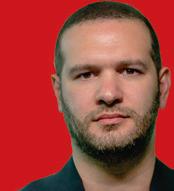





Honain offers a word of advice, saying, “Brands tend to copy and recreate successful campaigns. This is a big mistake as gamers can spot it from a mile away. Many gamers are sceptical of brands entering the gaming space, often viewing them as outsiders looking to profit. To build trust and credibility, brands must support local events and creators, sponsor esports teams, and create high-quality and engaging content.”
“The diverse cultural landscape in the Middle East means that brands must be mindful of local customs, values and sensitivities, which can vary significantly across the region. Brands should conduct thorough market research and engage local experts to tailor their messaging and campaigns, ensuring they resonate positively with different communities,” Honain concludes.


Has the industry found the balance between brand and performance marketing?
Adele Baxter
Client Services Director, JWI
It’s encouraging to see brands in the MEA region invest in brand-building. Yet, it’s premature to assume they’ve perfected the balance. One challenge brands face is the tendency to operate within siloed structures, which leads to fragmented campaigns and isolated channel management. Brands should adopt a holistic strategy, setting KPIs across the funnel and empowering teams to collaborate effectively. Given Gen Z’s growing spending power in the region and their strong emphasis on brand values, neglecting brand-building would be a critical oversight. Considering brandbuilding as part of any marketing strategy is essential to connect and build loyalty with this value-driven demographic.

Palak Mody Head of Marketing, Seagrass Boutique Hospitality Group
Achieving a balanced approach between performance marketing and brand-building is essential, particularly in the dynamic F&B sector. While industry trends still show fluctuations in funnel focus – either leaning towards conversion-focused performance at the bottom or awareness campaigns at the top – the balance is crucial for sustainable growth. In my experience with international brands and in the Middle East’s competitive F&B market, the best results come from a blend: brand-building drives long-term loyalty and differentiation, while performance tactics ensure immediate ROI. Brands need to flexibly integrate both, adapting to shifting market dynamics while staying true to their core identity.

Jeramie Jesalva
Global Marketing Director, Fine Hygienic Holding
The field recognises that to build brands that stand the test of time, marketers must employ evidence-based planning that strengthens both the brand and consumer connection. In my view, brand and performance marketing are inseparable; both are essential to success. It’s not a matter of choosing one over the other but integrating them to make strategic, impactful decisions that drive long-term growth. There’s no bias between the top and bottom of the funnel – the focus should be on aligning activities with consumer needs and expectations in ways that support brand and business objectives.


Jemma Starzecki Senior Vice President – Marketing, Al Ghurair Properties
With more than 17 years in marketing, I’ve witnessed the challenge of balancing brand and performance marketing, especially as performance marketing has surged in the last decade. While brand marketing is essential, its direct impact on performance is often hard to quantify, leading businesses to prioritise performance without adequate brand investment. However, with social media and new generations like Gen Z and Gen Alpha, brand storytelling is crucial –these audiences want a connection, not just ads. I advocate for strong brand marketing within an integrated, through-the-line plan, using brand efforts to elevate and amplify performance marketing outcomes.

Ribeiro Senior Marketing Manager, Viola Communications
Not yet. A key challenge for marketers is determining the right balance between short-term sales activities and long-term brand-building. What’s often overlooked in marketing strategies is the importance of aligning brand and performance marketing based on the unique business model and industry context. The value of each approach varies depending on factors like market maturity, customer behaviour and business objectives. Different sectors require different mixes to drive sustainable results. The most successful marketing solutions today integrate both approaches, delivering a holistic plan that adapts to the specific needs of the business and its market environment.
Nizar Malaeb Marketing Director, Arabian Automobiles
There is a balance. True success lies in harmonising brand and performance. A strong brand establishes trust and resonance, laying the groundwork for customer connection, while performance marketing turns connection into conversion by delivering value-driven offers. However, for us, this synergy doesn’t end with a purchase but evolves into a partnership that ensures our clients are supported throughout the entire ownership experience. This interconnectivity of brand and performance allows us to create a seamless journey that fosters long-term loyalty, where each element plays a critical role in meeting customer needs and driving lasting growth.


Aimee Peters
Regional Head, Brand, Partnerships and Wholesale Marketing – MENAT; Co-Lead, MarComms for Balance ERG – MENAT, HSBC Banking Middle East
Definitely, not. We are still obsessed with lower funnel at the expense of brand building. This is particularly true here in the region, where we still have far fewer homegrown global brands than we should have. Our regional unicorns that burst on to the global stage had brand-building investment at the outset. But big companies which score highly on brand trackers often punch below their weight in awareness or consideration trackers – highlighting the gap between company performance and brand. In a world of constant choice and fractured channels, customers need an emotional connection … to a brand. Must. Do. Better.

Sherry White Director of Marketing and Communications, Waldorf Astoria DIFC
In luxury hospitality, balancing brand-building with performance marketing is essential for sustained success. While performance marketing drives immediate conversions, the long-term loyalty in luxury hinges on a strong, aspirational brand presence. This balance means engaging guests emotionally at the top of the funnel, while thoughtfully guiding them toward conversion at the bottom. Each stage, from awareness to booking, should reflect our brand’s values and exclusivity. We have always embraced a full-funnel approach, integrating both brandbuilding and performance at every stage.

Laura Gleadhill General Manager at Keyade
NOBut we are moving in the right direction to establish the right balance. The brand versus performance debate gained prominence in 2013 with TheLongandShortofIt, but it largely addressed campaign messaging rather than the channels used to deliver it.
Over the past decade, particularly in the MENA region, the rapid growth of digital advertising has rendered this argument increasingly irrelevant. Today, the focus should not be on choosing between branding or performance but on understanding how to define KPIs for both, ensuring each contributes to business objectives.
Branding KPIs should measure long-term impact on awareness and loyalty, while performance KPIs focus on immediate results such as conversions or ROI. By aligning these metrics, brands can create cohesive strategies that leverage the strengths of both approaches, delivering sustainable growth across the entire customer journey.
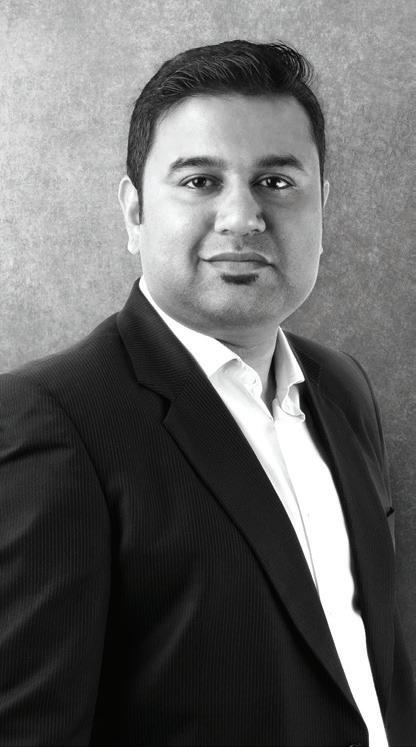
Ryan Garner Chief Activation Officer – MENA, Assembly Global
Boardroom and bottom-line impatience are something that can inhibit brand building and long-term sales growth. The immediacy and measurability of performance activity sees many advertisers overlook brand health and nurturing. Equilibrium is more accessible than most think. Rapid MMM, awareness tracking and perception analysis – among others – are critical tools that surface not only campaign brand impact but also transformational insight for performance activation. Incorporating deeper brand tracking and wider attribution can supercharge everything from audience to creative to NPS, ultimately providing a balanced scorecard of measures that truly matter to drive more sustainable brand growth as well as influencing all-important immediate returns.
Mitin Chakraborthy Head of Marketing, Babyshop – Landmark Group
The industry is indeed finding a more balanced approach between performance marketing and brand building, driven by substantial progress in the ecosystem. In 2024, we see improved capabilities in data analytics, media optimisation tools and attribution models, along with a culture of better knowledge-sharing. This evolution is certainly allowing marketers to execute more informed, impactful strategies that bridge top-and-bottom-funnel objectives seamlessly. While business pressures continue to demand ROI through bottom-funnel campaigns, even these have seen a shift. Execution standards and user experience are being prioritised more than ever, contributing positively to brand perception even during conversion-focused activities.
Another critical factor driving this balance is the evolving consumer expectations in the Middle East. Customers now demand cohesive and authentic brand experiences, making it essential for even performance-driven campaigns to align with brand values, especially for omnichannel businesses such as ours.
And finally, marketers have come to understand that long-term brand equity and short-term sales are not mutually exclusive but inherently complementary. Ultimately, the industry realises that a brand is only as strong as its business performance, and vice versa. There’s no sustainable brand without consistent business growth and no sustainable business without a resilient brand.




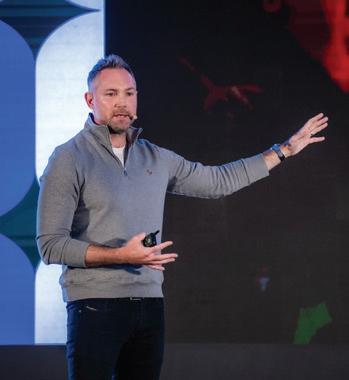

Athar – Saudi Festival of Creativity, the Kingdom’s largest gathering of the creative marketing industry, made its highly anticipated return to Riyadh with its second edition. Held at Crowne Plaza Riyadh RDC, activities kicked off on 3 November with the Young Talent Academies, followed by the main two-day festival lineup of sessions from 5 to 6 November that culminated with the prestigious Athar Awards on the evening of 6 November 2024.
Building on the success of last year’s inaugural edition, Athar Festival attracted more than 1,700 industry professionals, including a stellar lineup of 100+ regional and international speakers engaging in discussions across two content stages.
From nurturing emerging talent through the four Young Talent Academies to exclusive C-suite roundtable discussions and bespoke masterclasses with industry experts, Athar provided a diverse range of learning and networking opportunities. In an activation area featuring 31 engaging showcases, brands and agencies were also given the chance to highlight their unique capabilities, fostering community and collaboration across the region’s vibrant creative industry.
Athar Festival’s multifaceted programme offered participants an inside look at the creative industry’s most exciting trends and opportunities, from storytelling’s
evolving role in building unbreakable brand connections to the transformative impact of AI on creative processes and marketing innovation.
Sessions also explored strategies for nation-branding, the potential of tourism to showcase local culture, the integration of technology in creative practices, and the power of creativity to reshape Saudi Arabia’s urban landscape and connect with diverse audiences.
A highlight of the two-day festival was a keynote delivered by Matt McKie, a renowned sports marketer known for his work with prominent brands such as Manchester United, the International Olympic Committee, Nike and EA Sports, titled ‘Cultural Connection, Unbreakable Bonds and the Power of Stories: Lessons Learnt from a Career in Sports Marketing’. Drawing from more than two decades of global industry experience, McKie demonstrated how creative narrative building can forge the strongest bonds with audiences.
Sir Martin Sorrell, Founder and Executive Chairman, S4 Capital, shared his thoughts in another important session on what it takes to succeed in today’s fast-paced and highly competitive market. In his fireside chat, ‘Navigating the Creative Landscape in the Age of Artificial Intelligence (AI)’, Sorrell highlighted AI’s practical impact on creative processes and the innovative opportunities at the intersection of creativity and technology.
2 content stages
4 Young Talent Academies
4 bespoke masterclasses
2 C-suite round tables
1,700+ attendees
100+ content hours
100+ speakers – local, regional and global
20+ networking opportunities
24 awards categories
51 winners – 26 gold trophies and 25 highly commended
70 partners
90 per cent of the attendees are decision makers
Kicking off on 3 November, Athar Festival hosted four academies for students and young professionals aged 30 and under from across Saudi Arabia.
These academies offered 70+ young Saudi residents the opportunity to learn from industry leaders, develop their skills, and network with professionals across four specialised programmes: the Student Creative Academy in partnership with MCN; the Student Marketers Academy in partnership with UTURN; and the NextGen Creative Academy and the NextGen Marketers Academy in partnership with Saudi Tourism Authority.
With the aim of empowering the next generation of creative talent, participants experienced a rich blend of keynote sessions, interactive panels, mentorship sessions and career-development sessions, all led by industry experts.
Notable speakers included Tarek Miknas, CEO of FP7 McCann MENAT; Serfi Altun, Founder of Idea Bakery and

Dean of the Cannes Lions Roger Hatchuel Student Academy; and Firas Ghannam, Executive Creative Director at VML.
Additionally, Angelique Fin du Croisy, Chief People Officer, and Andy Nicholson, Chief Experience Officer at BLR World, delivered sessions focused on advancing careers in the creative advertising sector.
A highlight of the academies was the 24-hour hack, where participants tackled real client briefs, pushing their strategic and creative boundaries. Industry leaders served as mentors, providing invaluable guidance as participants developed their projects, which culminated in presentations to a fourmember jury panel. The winners were then honoured at Athar Awards.
This immersive experience not only fostered creativity and innovation but also equipped participants with essential skills and insights to thrive in the marketing and advertising landscape. Participants were also able to experience Athar Festival and its programme first-hand, allowing them to build on their academy learnings and pursue a diversity of networking opportunities.



Athar Festival collaborated with Google to host an exclusive one-day workshop titled ‘Global Saudi: An AI-Powered Global Marketing Summit’ for marketing and brand leaders from some of Saudi Arabia’s top brands along with their respective agency partners. As part of the workshop, held on 4 November, leading Google experts conducted sessions on global advertising best practices and strategies.
The workshop featured a fireside chat between Sir Martin Sorrell, Founder of WPP Group and Chairman of S4 Capital, and Charbel Sarkis, Google’s Country Director for Saudi Arabia. Together, Sorrell and Sarkis discussed the evolution of marketing throughout the years and the implications of AI on the ecosystem. Sorrell, a longstanding leader in global advertising, emphasised the essential shift AI brings to brand storytelling and customer interaction, making

hyper-personalisation possible on a massive scale.
This workshop overview provided a comprehensive overview of AI’s potential and delved into how AI can transform brand, marketing, and creative strategy.
In her session on Brand Strategy in an AI World, Debra Ladd, Strategy Lead at Google Brand Studio (EMEA), emphasised the importance of brand strategy in an AI world, focusing on the nuances and intricacies in balancing global and local strategy.
Basel Hijazi, Google’s Marketing Lead for Saudi Arabia, explored the essential skills of an AI marketer and empowered each attendee to become one by introducing cutting-edge AI tools. Hijazi highlighted how AI is disrupting traditional marketing, encouraging a fresh perspective on marketing strategy.
The session then delved into how AI can revolutionise segmentation, targeting and positioning. In the hands-on Creative Workshop, Ali Cheikhali, Google’s Creative Strategy Lead in MENA, guided participants in a session on how to leverage the latest Google AI tools to boost creativity throughout the marketing process. From insights, to ideation, creation, testing and measurement, Ali worked with the participants on AI tools to help them achieve unprecedented speed, scale and effectiveness across brand campaigns.
The one-day workshop was attended by senior leaders from prominent organisations and their agency partners, including Saudi Tourism Authority, Qiddiya, Essence Mediacom, Red Sea Global, New Murabba, Mindshare, The Saudi Investment Bank, Impact BBDO, Sports Boulevard Foundation, and Jarir Bookstore.

Powered by Omnicom Media Group, Impact BBDO and TBWA\RAAD, the Future CMO Academy aimed to empower Saudi Arabia’s emerging marketing leaders with the skills, insights and tools needed to excel in their careers. The full-day, immersive programme took place on 4 November and brought together seasoned marketing professionals for a dynamic experience filled with expert-led discussions, hands-on learning and networking opportunities.
By uniting the expertise of Omnicom Media Group (OMD, PHD and Hearts & Science), Impact BBDO, and TBWA\ RAAD, the Future CMO Academy targeted senior marketing professionals in key strategic roles within Saudi brands. Attendees included senior marketing managers, brand managers and marketing directors – professionals responsible for both strategic implementation and driving marketing initiatives forward within their respective organisations.
With the Future CMO Academy, Athar Festival and its partners aimed to foster an environment of collaborative learning and professional development. Participants were provided exclusive insights into modern marketing approaches, actionable strategies for creative excellence, and practical tools for leading bold campaigns in an increasingly competitive and dynamic market. Each participant also received a pass to Athar Festival itself, giving them further exposure to the festival’s diverse programme and networking opportunities.
The day was structured to maximise engagement and learning through a mix of keynote sessions, panel discussions and a fireside chat, with key insights shared by industry leaders, including Elda Choucair, Chief Executive Officer, Omnicom Media Group (MENA), Reda Raad, Group CEO, TBWA\RAAD and Dani Richa, Chairman, BBDO EMEA and CEO, Impact BBDO Group. Each component of the programme offered practical, high-value takeaways aimed at preparing attendees for CMO-level roles.
Topics covered were particularly relevant to the rapidly evolving Saudi market, where consumer expectations and digital landscapes are advancing at a rapid pace.
The Future CMO Academy focused on four critical themes. Under the ‘Crafting Bold Campaigns’ theme, attendees explored how to design and execute innovative marketing campaigns that resonate with audiences. This session encouraged participants to think creatively, challenging conventional approaches and embracing bold, boundary-pushing ideas that stand out in a crowded media landscape. Under the ‘CreAItivity’ theme, participants learned how artificial
looking to drive their brands forward and stay competitive.
The Future CMO Academy brought together top talent from leading Saudi organisations across various industries, including hospitality, retail, tourism, finance and government. Some participants represented notable brands such as Saudi Tourism Authority, ALAT, Diriyah Company, ACWA Power, ALBAIK Food Systems Co. Ltd, King Salman International Airport, Ithra, Qiddiya, Almarai, McDonald’s KSA and the Ministry of Culture.

intelligence is transforming creativity in marketing. The concept of ‘CreAItivity’ emphasised how AI can support and augment creative efforts, helping marketers optimise campaign effectiveness and tailor messaging with precision. With AI becoming a foundational tool in marketing, understanding its capabilities and applications is increasingly essential. Under the ‘Navigating Modern Marketing’ theme, the final session of the Academy offered a broader perspective on the future of marketing, exploring trends like digital transformation, data-driven strategies and shifting consumer behaviours. As marketing continues to evolve, adapting to these changes is key for professionals


Maheerah is an acceleration initiative, powered by Publicis Groupe, designed for women pursuing greater career advancement within Saudi Arabia’s marketing and communications industry. The latest iteration of the programme, building on the success of its first edition in 2023, took place once again during Athar Festival.
The accelerator programme is part of a growing wave of women-centric empowerment, education, and professional development opportunities that recognise the abundance of talented women professionals within the Kingdom’s workforce.
The creative marketing field is no exception, and by bringing together 15 participants who have already begun their journey towards successful careers within their respective domains, Maheerah serves as a self-sustaining bridge that enables mid- to senior-level professionals to empower and inspire one another as they rise through the ranks and take on leadership roles.
This year’s Maheerah Women’s Empowerment Programme participants represented diverse sectors from companies such as Leo Burnett MEA, ABB, Wetheloft, Whizz Film, Taglime, Saudi Tourism Authority, Told, BLÓMI, Nestlé, QSAS PIF Projects, Burson, Treehaus Design Studio, ROSHN and KAFD.
Participants attended workshops and tailored mentoring sessions, and networked with top industry leaders. Covering a range of topics such as leadership, personal branding, confidence, and creativity, among others, the accelerator programme was led by esteemed women in the field, who moderated sessions and provided participants with invaluable support and career advice.
Leading the 2024 edition was Ashwaq Alshathri, GVP General Management MD Country Lead Riyadh, KSA Publicis Sapient, who served as the ambassador for the Programme; Nada Hakeem, Founder at Wetheloft; Marie Claire Maalouf, Chief Creative Officer EMEA at Edelman; and Lucy Harvey, Chief Growth Officer for the Middle East, Turkey and Africa at Burson, who were the Programme Leads. Participants were also invited to attend Athar Awards on the final day of the festival for their official graduation.


Athar Festival 2024’s line-up of initiatives was meticulously curated to cater to various segments of the industry, including four masterclasses designed to provide targeted learning for a wide range of creative professionals. Each masterclass catered to a specific field, allowing participants to connect with peers who shared a similar focus on growth and selfimprovement. These sessions aimed to bridge brands and agencies with subject-matter experts to deliver curated insights on key topics.
Vamp’s ‘Influencer Impact Masterclass’ offered a deep dive into the evolving world of influencer marketing, tailored for brands, marketers, and influencers alike. Participants explored emerging trends and learned how to develop compelling, authentic content that elevates brand visibility and meets business objectives.
Featuring insights from Vamp’s successful campaigns with major brands like NEOM and Nike, the session provided strategic tips and tools for content creation and campaign success, alongside valuable networking opportunities with industry leaders.
Led by Thea Skelton, VP Festivals at LIONS, the ‘Official Cannes Lions Festival Digest 2024

Masterclass’ brought the highlights of the Cannes Lions Festival 2024 to Athar attendees. Participants gained insight into the core trends, themes, and award-winning case studies shaping global creativity.
This masterclass offered hands-on inspiration from real-world examples, equipping participants with actionable strategies to create impactful work in their own fields, driven by the same principles that define Cannes Lions-winning campaigns.
The ‘Concept to Launch: Build Impactful Products Masterclass’ by Tajalla Creative
Agency introduced their ‘4 T’s’ approach (Think – Twist – Test – Transfer) to guide attendees from concept to market-ready product. Covering ideation, creative merging of concepts, and rigorous prototyping, the session enabled participants to transform innovative ideas into culturally relevant, consumer-ready products. With hands-on exercises, attendees mastered each stage of development, gaining confidence in creating products that appeal to today’s evolving markets.
Hosted by Warner Bros. Discovery, the ‘Power of Storytelling: Cultural Narratives in Media Masterclass’ offered an in-depth look at using storytelling to create meaningful audience connections.
Participants learned how to balance global standards with cultural sensitivity to resonate locally, drawing on case studies from Discovery, TLC, and Fatafeat. The session emphasised the impact of working with regional creators and using purpose-driven storytelling to engage audiences, turning passive viewers into engaged participants with lasting impact.





















4 WINS AT ATHAR FESTIVAL
INCLUDING BUSINESS GROWTH TEAM OF THE YEAR
Webelieve … in the power of ideas that transform brands and create impact.
Webegin … with insights that connect hearts, spark conversations and drive results.
Webehave … like partners, not vendors - always purposeful, always curious.
Webecome ... an engine of growth for our clients.
Webelong … to a community that delivers groundbreaking work, with every win starting with “We”.






They also said that the performing arts sector would benefit from a greater variety of genres and more frequency.
Key leaders from across the art and culture sector in Saudi Arabia shared their insights during a roundtable discussion powered by BLR World at the Athar Festival in Riyadh.
By Anup Oommen
The arts and culture industry in the Kingdom of Saudi Arabia has grown in leaps and bounds over the past few years, with several projects showcasing the rich traditions, culture, heritage, archeology, art and creativity of its people through the coming together of historic and contemporary poetry, performances, calligraphy, art forms, comedy, film, theatre, museums and much more.
These projects, large and small, have had an incredible impact on emerging Saudi creative sectors, playing a critical role in nurturing creative expression, with a tangible and transformative effect on local love for culture and the arts.
To discuss the current value being delivered from such arts and culture projects, how to amplify it to create sustainable value, and how to ensure a lasting appreciation for artistic innovation, a few key industry players gathered for an Arts and Culture Roundtable – powered by BLR World – as part of the fringe content at the Athar Festival in Riyadh.
Conversations at the roundtable revolved around awareness and access ot the arts; developing a true understanding of audiences across Saudi Arabia; the responsibility to reach the full demographic spectrum in the Kingdom; and the need for a larger and broader offering within the arts.
The high-level roundtable discussion, held under the Chatham House Rules, also touched upon the need for greater efficiencies, better funding, long-term sustainable models, capacity building, coordination between various entities and organisations, and untapped benefits of a more robust private sector.
Leaders at the roundtable talked about the importance of raising awareness about the importance of art and culture, its effect on quality of life, and how it instills a sense of identity and purpose among people within the Kingdom, and contributes to the vibrancy of society, education as well as talent development.
At the outset, the leaders called for a better understanding of audience behaviour and demographics, as well as a vigorous move towards better research and actionable data on audience preferences.

Addressing pain points within Saudi Arabia’s arts and culture industry, one of the leaders said, “The train has left the station and we are running behind. The communities in Saudi Arabia are so dynamic and so creative that our ways of working or the way we’re doing things is not keeping up with the pace of culture and change.”
The consensus at the discussion was not only to improve efficiencies within the industries, but also to make arts and culture more sustainable.
Speaking to the skills gap within the industry, a leader said that upskilling is a need, but it is subject to the speed of delivery of projects.
“It’s a game of: what do you want? If you want the quick wins, it comes at the price of quality or sustainability, but if you want quality, it’s going to take time. If the client says, we want both, I tell them that they can’t have both,” a leader said.
Another leader added, “If you’ve got a project, but then have to parachute in a load of consultants from wherever they are in the world, this is not a sustainable model for the Kingdom, so we need to focus on capacity building.”
Some leaders discussed pain points around procurement and finances, while others called for a a balance between a rigid structure based on reliable policies and procedures, while still maintaining the flexibility to innovate.
Experts also called for stakeholders within the arts and culture sector to work on their long-term and the short-term vision in parallel to achieve the KPIs that the country has set for Vision 2030 and Expo 2030, while simultaneously “hitting the targets that we’ve set for tomorrow morning”.
“I think Expo 2030 is fantastic for the private sector,” a leader said. “It is an opportunity for private sector companies to get involved and, even more so, the opportunity for Saudi Arabia to see what’s possible locally and internationally as a result of what happens in the six months of Expo 2030.”
Leaders also discussed the potential benefits of a more robust private sector, including automatic efficiencies in certain areas, a more varied range of content, as well as audience development to an extent that has not yet been achieved.
This will need a transformation approach from both sides: investors, entrepreneurs and business leaders will need to take a risk to enter a market where they are competing with government and semi-government entities, but at the same time governments will need to subsidise the associated risk to a certain extent.
Looking to the future, one of the leaders at the Arts and Culture roundtable called for “policy circles” to find solutions to pain points, while another called for the “formalisation of such informal forums”. Another leader called for an ecosystem that allows more community-led projects to thrive.
Finally, leaders discussed the benefits that could come out of lowering regulation around marketing.
“I think we all make fantastic projects and products, but we don’t always make the most of social media or marketing tools; certainly not to the best of our ability. There is scope for more creativity in how we communicate what we’re doing, so we can attract audiences and build a better future,” the leader concluded.


The Athar Awards honoured winners across 24 categories who highlighted exceptional achievements within Saudi Arabia’s creative, marketing and communications sector. Recognising excellence specifically in the Kingdom, the Awards celebrate the best in creative marketing efforts that help further the pillars of Vision 2030. For the full list of winners, visit awards.atharfestival.com.
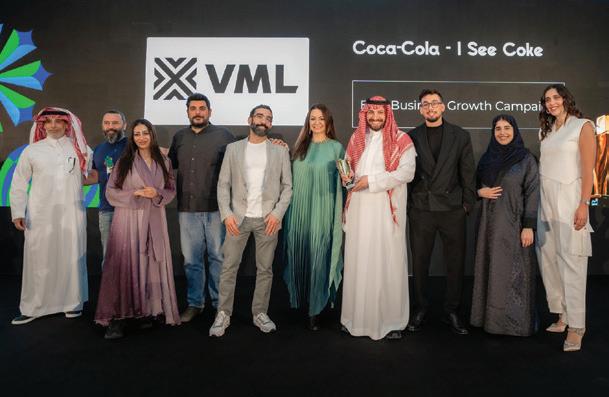


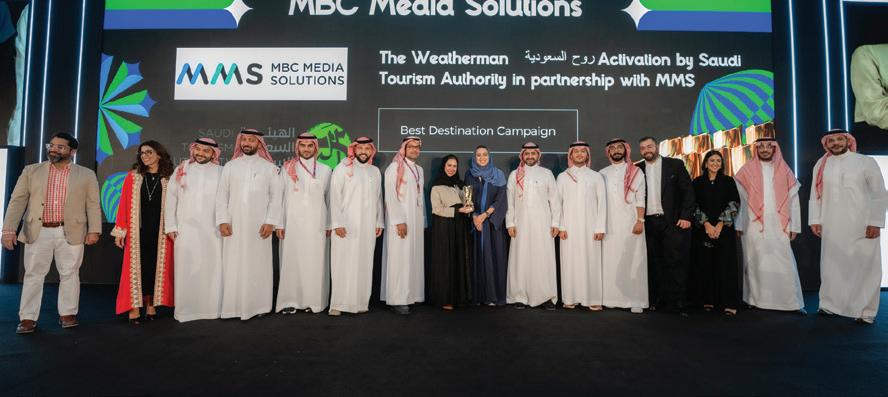


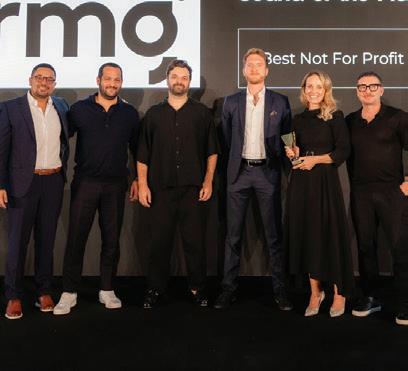
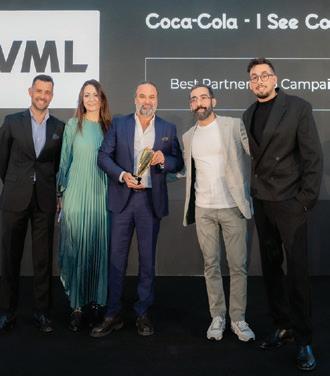
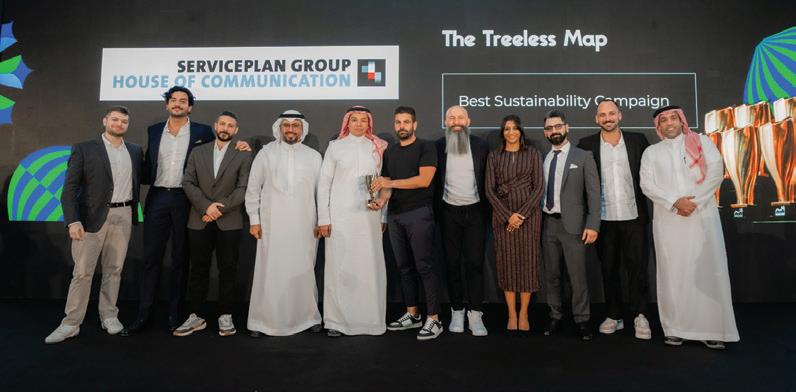
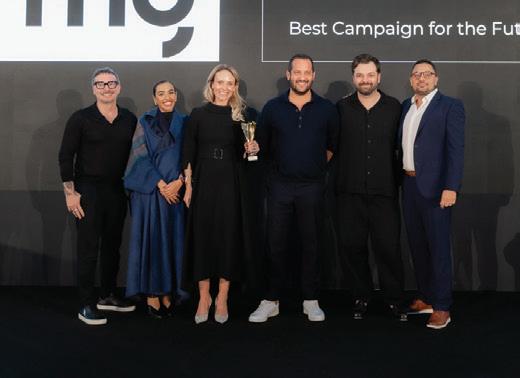














A panel at the Strategic Stage of Athar comprising of Lara Arbid, CEO MENAT, Initiative (moderator); Gilbert Rustom, Marketing Director, New Murabba Development Company; Arcan Murshid, VP Global Marketing Campaigns, Saudi Tourism Authority; Abdulrahman Aljefri, Destination Senior Director, Diriyah Company; Waleed Bashawri, Senior Marketing Director, Almosafer; and Ramzi Ghanem - Client Growth Lead, MBC Media Solutions.

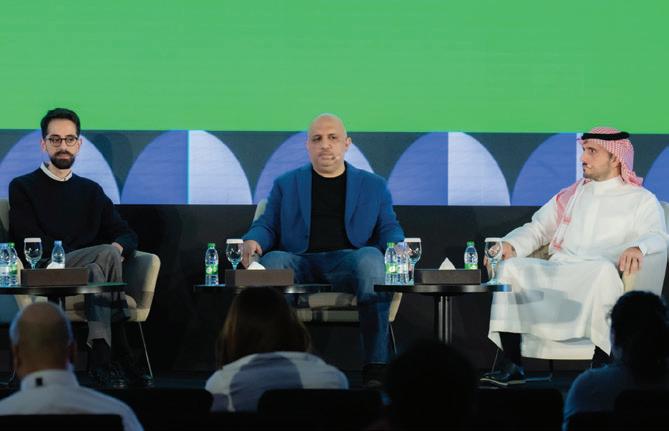



































Campaign Middle East moderated a ‘boxing match’ at Athar Festival in Riyadh with Boopin’s Razmik Kalaidjian in the blue corner representing local agencies and TBWA\RAAD’s Dan Leach in the red corner representing global agencies.
By Anup Oommen
One of the most heavily debated topics in Saudi Arabia at the moment is whether clients and brands should pick local or global agencies to meet their brand, creative, marketing and communication needs.
There is a perception that local agencies best understand local consumer behaviour, local culture, jokes and humour, the local Arabic dialects, traditions, partnerships and connections, local talent such as influencers, producers and celebrities, and can solve for local problems better.
The prevalent perception – which some call prejudice – also states that global agencies bring to the table the best of global technologies, best practices, international benchmarks, a network of talent and influential celebrities, and globally recognised marketing veterans. With competition higher than ever before and with procurement problems being discussed in the market, with pricing, margins, and deadlines getting
tighter, the animosity around local or global agencies has risen.
To address this issue out in the open, Campaign Middle East editor Anup Oommen moderated a debate at the Athar – Saudi Festival of Creativity akin to a ‘boxing match’ with Razmik Kalaidjian, the Regional Managing Director of Boopin, in the ‘blue corner’ representing local agencies, and Dan Leach, Managing Director for Saudi Arabia at TBWA\RAAD, in the ‘red corner’ representing global agencies.
THE WEIGH IN
The debate, titled ‘Contrasting Perspectives: Local Agency vs Global Agency’, began with a ‘weigh-in’ of opening arguments from Leach and Kalaidjan, before the fighters touched gloves and threw punches on creativity, technology and a path forward.
Making the case for global agencies in his opening statement, Leach said, “There are three great reasons to go the global way. Firstly, we all know that global agencies are a great hub for talent. We have 13,000
employees, and while there are specific talents allocated to specific brand teams, clients can also tap into any of our other talent at any time.
Secondly, we also have scale in terms of campaigns and creativity. This doesn’t mean that we create only global campaigns, but rather that we create targeted local campaigns and then take them out to the world. And, finally, I think we have unrivalled access to data, technology and innovation. This is not merely a reference to third-party tools, but also includes access to in-house tools that we have invested in globally.”
Commenting on the benefits of local agencies, Kalaidjan said, “Local agencies are very quick on their feet. We’re nimble, agile and fast. We can U-turn quickly whenever we need to, based on the data, without the red-tape or the time it takes for global agencies to do so. In this fast-paced market, the speed to market and the speed of how quickly decisions can be actioned are a crucial differentiator. Secondly, it’s not just
about hiring people who can do the job. It actually involves having people who live and breathe the local culture. They understand every aspect of their audience because they are a part of that audience. And thirdly, for local agencies, any client is a huge client. Every client is a core part of their business. Every client has to get the utmost attention for that agency to survive – and the clients know that. We live and die to ensure that the clients’ businesses are heading in the right direction.”
Following the preliminary ‘weigh-ins’, we entered Round 1 of the ‘boxing bout’, which centred around creativity.
Over the past few months, the big ask from clients in Saudi Arabia has been about highlighting the most creative and eyecatching solution to the problem they’re looking to solve. Brands have made it clear that creative campaigns for the sake of awards or for the sake of coming across as creative aren’t good anymore. They need to prove their value within success metrics, whether these objectives are awareness, consideration or conversions.
Rallying energy for the first punch, Kalaidjan said, “Fundamentally, what we follow closely within local agencies is ‘pragmatic creativity’. We are not here to overcomplicate the marketing problem; we are not here to reinvent the wheel. Our job is to answer a very specific inquiry from the clients with a very nuanced solution.”
Kalaidjan then shared an example of how his agency handled a very simple one-line brief from a client that read, “I want more footfall.”
“That’s what global agencies can’t do that we can,” Kalaidjan said. “It is allowing the clients to go straight to the point; understanding their needs without further explanations; not complicating or dissecting the problem further; solving it on the spot, giving them a solution, and being very pragmatic in driving the client’s business.”
Countering with the fact that both global agencies and local agencies are measured based on the same effectiveness metrics, Leach said, “I think where we can take things to another level is offering a certain guarantee of effectiveness – as much as people can guarantee anything within this industry. We use a lot of predictive technology to not just give a point of view on whether a campaign will be successful or not, but to offer recommendations on how to elevate the campaign. So, when it comes to creative effectiveness, it’s one thing to analyse results of a campaign afterwards, and completely another to analyse effectiveness on the go before a single riyal is spent.”
The debate then entered Round 2, which delved into the competitive advantages that global and local agencies can claim in terms of innovation and the use of cutting-edge technology to ensure speed to market and to meet the increasing expectations of clients and consumers alike.
Taking the example of Omnicom and TBWA, Leach said, “As a global agency, we’ve got access to not only a huge trove of global
‘‘IT’S TIME TO THINK SAUDI-FIRST. WE NEED TO CREATE CAMPAIGNS THAT RESONATE LOCALLY AND MAKE A MARK GLOBALLY.’’
knowledge, experience, and expertise, but also 50 years’ worth of disruptive ideas and the strategic thought behind how these ideas have to life. With AI and our own internal co-pilot, which is so different from a generic ChatGPT, this becomes superpowered to achieve disruption.”
He went on to explain how TBWA’s in-house Collective AI learns from the extensive archives of more than 11,000 creative minds across 300 offices in 40 countries, accessing more than 50 years’ worth of disruptive ideas as well as the extensive archives powered by Omnicom Group’s partnerships with Adobe, Microsoft, Google and DALL-E.
“This accelerates the creative strategic process, while staying true to who we are as an agency, and it gives our clients and partners faster and better solutions,” Leach added.
Adding a local layer to the discussion, Kalaidjan said, “Local players and agencies are also able to advise on technology and innovation, but we have a slightly different take on it. We believe that we need to build our own local solutions. Technology can be very easily built, especially if it already exists within
the market. We can very easily find technology that is relevant to clients, customisable to their needs, and then build from within the local market’s requirements to be truly effective within the market.”
Before the panel concluded, Campaign Middle East reiterated the benefits of both local and global agencies.
The question was raised about whether the time has come for agencies, brands and public entities to consider a more collaborative approach instead of mere cut-throat competition.
“The short answer is yes,” Kalaidjan said. “There are several recent examples of multinationals collaborating with local agencies. Fundamentally, clients are the ones who enable an ecosystem of collaboration, as they can truly benefit from the inputs of both global and local agencies. We are absolutely open to being a part of such an ecosystem. Every agency – whether local or global –needs to understand that our individual business success or awards are not the end goal. The clients and the Kingdom of Saudi Arabia come first.”
Leach said, “The whole me-versus-you debate, although prevalent in our competitive industry, feels a bit old. I agree 100 per cent in the fact that there are huge benefits from being a local agency and from being a global agency here in the region. That is why we made a conscious effort to hire in the region as a Saudi-first agency, because we see ourselves as a local unit that is empowered to take decisions within a global organisation.”
Leach added, “It’s time to think Saudi-first. We need to create campaigns that resonate locally and make a mark globally. Creating campaigns that win awards are great, but true success lies in delivering real business results for clients. We all know our priorities and we all share one goal: drive growth for clients and contribute to the Kingdom’s Vision 2030.”
Who won the ‘boxing match’? Looks like the Kingdom of Saudi Arabia did.

































Homegrown businesses, regional players and global brands have turned their faces to the Middle East region, with a keen eye on Saudi Arabia, but the message from the Kingdom is clear: The local market has evolved. It’s not what it used to be, so there’s a need to learn the local nuances, understand local audiences better, and truly experience what the nation has to offer.
Amidst a growing focus on culture, creativity, communities and conveniences, brands in Saudi Arabia have also begun to find the balance between marketing to local and global audiences; tech-savvy youth and deep-pocketed older audiences; technology adoption and customer experience; datadriven decisions and privacy concerns; as well as short-term KPI-focused marketing and long-term value-based brand building efforts.
In an in-depth interview with Campaign Middle East, Kiran Jay Haslam, the Chief Marketing Officer of Diriyah Company, a Public Investment Fund (PIF) company, shares his viewpoints on the coming together of contextual and culturally relevant storytelling; carefully tailored marketing campaigns; levers such as sustainability, authenticity, and heritage; as well as some of the challenges facing marketers and agencies in Saudi Arabia.

Kiran Jay Haslam, the Chief Marketing Officer of Diriyah Company, speaks to Campaign Middle East about building a brand that leaves footprints in the sand for others to follow.
By Anup Oommen
narratives reflect within campaigns and resonate with local audiences.
‘HIGHLIGHTING THE RICH TAPESTRY OF SAUDI CULTURE AND HERITAGE’
Calling for “immediate attention” to certain challenges, Haslam says, “Firstly, there is a need to shift perceptions and build a robust understanding of Saudi Arabia as a diverse and welcoming destination, moving beyond traditional narratives. Secondly, addressing the growing demand for sustainable practices within marketing strategies is crucial, as consumers increasingly seek brands that prioritise environmental responsibility.”
He adds, “Furthermore, enhancing digital literacy and capabilities within the marketing workforce is vital to effectively leverage emerging technologies and data analytics. Lastly, fostering genuine engagement with local communities while ensuring global relevance will be essential for brands to thrive in a rapidly changing market. By prioritising these challenges, marketers can position themselves for success in the evolving landscape.”
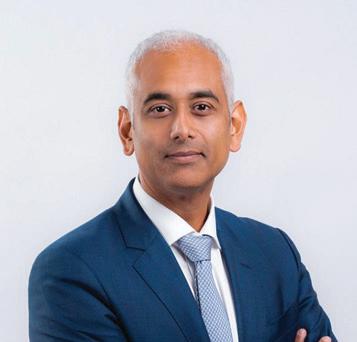
Haslam says, “To tailor our marketing campaigns effectively, we leverage immersive experiences that highlight the rich tapestry of Saudi culture and heritage, as seen in our recent exhibitions at both Harrods and Outernet London.” At Harrods, Diriyah Company’s pop-up display showcased the $63.2bn Diriyah development and received 450,000 visitors. The exhibit featured 350 residences crafted by renowned brands such as Ritz Carlton, Baccarat and Corinthia, with each brand highlighting a unique offering. Baccarat residences fuse modern luxury with classic French elegance, incorporating opulent materials and crystal accents, while Corinthia offers a family-focused, homely atmosphere. The Ritz Carlton units emphasise exceptional services for residents.
Discussing what made the Outernet London campaign stand out, Haslam says that it “brought Diriyah’s heritage, culture, and modern lifestyle to life through dynamic displays and interactive elements, allowing visitors to experience its charm and legacy first-hand. This included traditional Najdi music, dancing, calligraphy and coffee, creating a truly sensory journey that reflects Diriyah’s blend of historical richness with sustainable, forwardthinking design.”
He goes on to explain how campaigns such as Harrods and Outernet London offer experiences that elevate Diriyah’s profile on the global stage, with future exhibitions planned in other major cities.
Delving into each of these facets a little deeper, Campaign Middle East questions Haslam about how to ensure that these traditional
“These initiatives, alongside strategic partnerships with prestigious brands, create a strong emotional connection with both local and global audiences. By using traditional Najdi architectural elements and warm colour palettes, we resonate with local audiences, while






appealing to international visitors through luxury and sophistication.”
Haslam’s answer perfectly echoes conversations at the recent Athar Festival, held in Riyadh, which turned the spotlight on a Kingdom that perfectly amalgamates history, tradition and heritage with modern convenience, experiences, sports and entertainment.
‘PRIORITISING ETHICS, PROVIDING IMMERSIVE EXPERIENCES’
Leaders building experiences within the Kingdom and marketing Saudi tourism to the world have previously shared the need to weave an authentic narrative that is both contextual and culturally relevant.
Speaking to the effectiveness of this approach Haslam says, “By weaving rich narratives rooted in the nation’s heritage and culture into contemporary attractions, brands can create memorable and immersive experiences. This approach not only captivates local and international visitors but also fosters a deeper emotional connection with the destination. This blend of tradition and innovation has proven successful.”
Saudi Arabia welcomed more than 100 million visits in 2023, surpassing its 2030 target seven years early, with Diriyah contributing to these numbers.
Since opening in December 2022, the restaurants and cafés of Bujairi Terrace and the UNESCO World Heritage Site of At-Turaif have welcomed more than 2 million visits.
“This momentum showcases the Kingdom’s growing appeal as a vibrant and evolving tourism hub, ultimately leading to increased brand loyalty and visitor engagement,” Haslam adds.
Yet, building brand loyalty and a long-term credible brand requires more than just authentic storytelling. It requires brands that resonate with the core values of the customers – including sustainability – with a clear and consistent demonstration of such practices. Over the last year, consumers have vocalised demands for greater authenticity, sustainability, and personalised interactions.
Haslam says, “Visitors now expect brands to prioritise ethical practices and provide immersive, culturally enriching experiences. This evolution has prompted Diriyah to














access to their first-party data to trusted and transparent brands with the caveat that it leads to more personalised and better customer experiences (CX).


“By leveraging AI and machine learning, Diriyah can analyse visitor data and preferences, enabling personalised marketing efforts that cater to individual needs. Overall, understanding changing preferences has allowed Diriyah to refine its approach and strengthen its brand appeal,” Haslam explains.

Speaking about the impact of leveraging technology to enhance CX, he adds, “Augmented reality (AR) enhances visitor experiences by providing interactive tours that bring the rich history of Diriyah to life. Furthermore, large language models (LLMs) assist in crafting compelling narratives and engaging content that resonates with diverse audiences.
These technologies empower Diriyah to optimise its marketing campaigns, improve customer engagement, and make informed decisions that align with consumer
‘‘Visitors now expect brands to prioritise ethical practices and provide immersive, culturally enriching experiences.”
adapt its marketing strategies by emphasising its sustainable initiatives and heritage-rich offerings.”
“Marketing efforts have shifted from traditional advertising to creating engaging, narrative-driven content that highlights the unique experiences available at Diriyah,” he adds. “Consumers increasingly prioritise brands that align with their values, and Diriyah’s commitment to sustainable development and cultural preservation is a testament to this trend.”

Walking the talk, the first phase of Diriyah’s masterplan earned the Platinum Level LEED for Cities Certification by the US Green Building Council (USGBC) – the first time a project in the Middle East has received the accolade. Beyond planting trees, plants and shrubs, Diriyah has used local building materials and created a car-free, pedestrianised environment.
“Diriyah not only enhances its environmental footprint but reinforces its dedication to authenticity. This approach builds trust and loyalty among customers who value ethical practices and will help Diriyah achieve 50 million annual visits by 2030,” Haslam adds.
The conversation gradually moves into the realm of data-led decisions in an increasingly digital-first world where consumers have made their demands clear: They want brands to engage with them digitally on the social media and online platforms where they are at. They have shared their willingness to offer
expectations, ultimately elevating the brand’s presence both locally and globally.” Diriyah’s focus on digital transformation and sustainability further aligns the destination with the objectives of Saudi Arabia’s comprehensive Vision 2030, which also calls for inclusion within society – both in terms of gender and people with disabilities. It calls for brands to take inclusion beyond buzzwords and tokenism to move the needle on the ground.
“Initiatives aimed at enhancing accessibility for the specially abled are integrated into the design of public spaces, ensuring that everyone can enjoy the attractions,” Haslam says.
“Additionally, Diriyah promotes gender inclusivity by empowering women through employment and leadership opportunities within the tourism and hospitality sectors. A key initiative in this effort is our Women’s Empowerment Programme, designed to support the training and development of our remarkable team of talented Saudi women,” he adds.
Currently, women make up 36 per cent of Diriyah’s workforce, with 16 per cent holding senior positions, highlighting a positive march towards its long-term goals.
“These efforts not only align with national goals but also resonate with local audiences, creating a sense of belonging and representation. By actively fostering an inclusive environment, Diriyah strengthens its connection with diverse communities and sets a standard for other brands to follow,” Haslam concludes.
















































Welcome to the sixth edition of our annual Marketing Game Changers, which aims to recognise and celebrate those client-side marketing leaders whose actions and insights have made the greatest impact on their brands, their industries and the region’s marketing community over the past 12 months . The list profiles the men and women we feel have shaped our industry in many ways, and offers insights into what they do, how they do it, why they do it and what it means for the rest of us. Congratulations to all the Game Changers on the 2024 list.



Executive Director – Strategic Marketing and Communications Sector, Department of Culture and Tourism – Abu Dhabi
YEARS IN CURRENT POSITION : 3 years
YEARS IN THE INDUSTRY : 15 years
SIZE OF TEAM : 100
SIZE OF DEPARTMENT : 100
Patou Nuytemans, Ogilvy Chief Executive Europe, Middle East and Africa
Working with Nouf is an experience that is as stimulating as it is rewarding. She redefines the client-agency dynamic – treating us as equal partners with a seat at the table. As a client, she constantly raises the bar, inspiring us to reach for new heights and think outside the box.
“Creativity is modern-day magic,” she told me. “In the world of marketing and business, I believe creativity is a force for good that resets expectations and has the power to excite minds, shift perceptions, change behaviours and drive both imaginable and, at times, unimaginable growth.” It’s thanks to Nouf’s fierce and fearless championship of creativity that our team has created globally acclaimed campaigns – from the Penalty Itinerary activation in New York to 20 Summers, One Abu Dhabi.
Nouf’s understanding of the traveller experience and Abu Dhabi’s offerings infuses the passion that shines through in all of DCT’s campaigns. She is as insightful as she is meticulous about the details, assuring no one ever loses sight of the big picture while driving excellence in execution. A strategic thinker with exceptional communication skills, her guidance transforms campaigns from mere ideas to impactful realities – keeping heart, community and culture at the centre of it all.
She’s a key player in bringing world-class events, personalities and experiences to Abu Dhabi. I’ve known Nouf for nearly 10 years and yet, somehow, she continues to surprise and inspire me week after week. Beyond being the formidable professional I learn from, she is an exceptional human – humble, passionately authentic, with smart wit and genuine appreciation for others – I couldn’t feel luckier about our partnership.


What would you place at the top of your brand and marketing priority list in 2025?
Remaining genuine and authentic so that our brand captures an ownable place in hearts and minds.
What is the one thing you would change about the industry if you had a magic wand?
We must preserve the creative process and take time to appreciate and respect the journey to unlock great ideas.
Are we using the latest technologies optimally to enhance the brand’s overall customer experience?
I think we’d all like to think that we are. Or at least that we’re doing our best. The reality is technology is changing at a rate that is unprecedented. So ‘controlled’ adaptation is key while ensuring the customer always remains at the forefront of our minds.
Is there a say-do gap and a green skills gap within sustainability that need to be addressed?
There have been a lot of initiatives directly focused on worldwide climate challenges, and the UAE leadership cemented their priority on this with Cop28 last year. My belief is in order to have true impact, an organisation’s sustainability strategy needs to form a critical part of its business’ DNA.
What is the top challenge facing brand safety and reputation management?
I firmly believe all that touch the brand are stewards of the brand. As such, we all have a shared responsibility to nurture and grow the brand. So, ensuring there is a shared understanding from all is critical to ensuring a consistent brand experience.
What were the top demands and expectations of consumers in 2025? Consistent and ‘real’ experiences that enrich lives.
How can marketers be a better voice of customers in the boardrooms or on the executive committee?
They must take on a market orientation mindset that is grounded in customer data – at all times. Facts speak volumes and remove unconscious bias.
Next destination on your bucketlist? Japan.
Go-to cheat meal? Sushi.
Advice to the newest member on your team?
Lean in. Collaborate. Don’t be afraid to take
on challenges. And don’t be limited by the title to grow. The role is yours to own.
Most thought-provoking quote you’ve heard in 2024?
The biggest ideas are always the simplest.
Your favourite place in the Middle East?
Has to be Abu Dhabi.
A personal goal you want to achieve?
More moments to slow down and be present.
The first thing you do when you get to work?
Switch on the music.
The person who has influenced you most in 2024?
My son, Fahad.
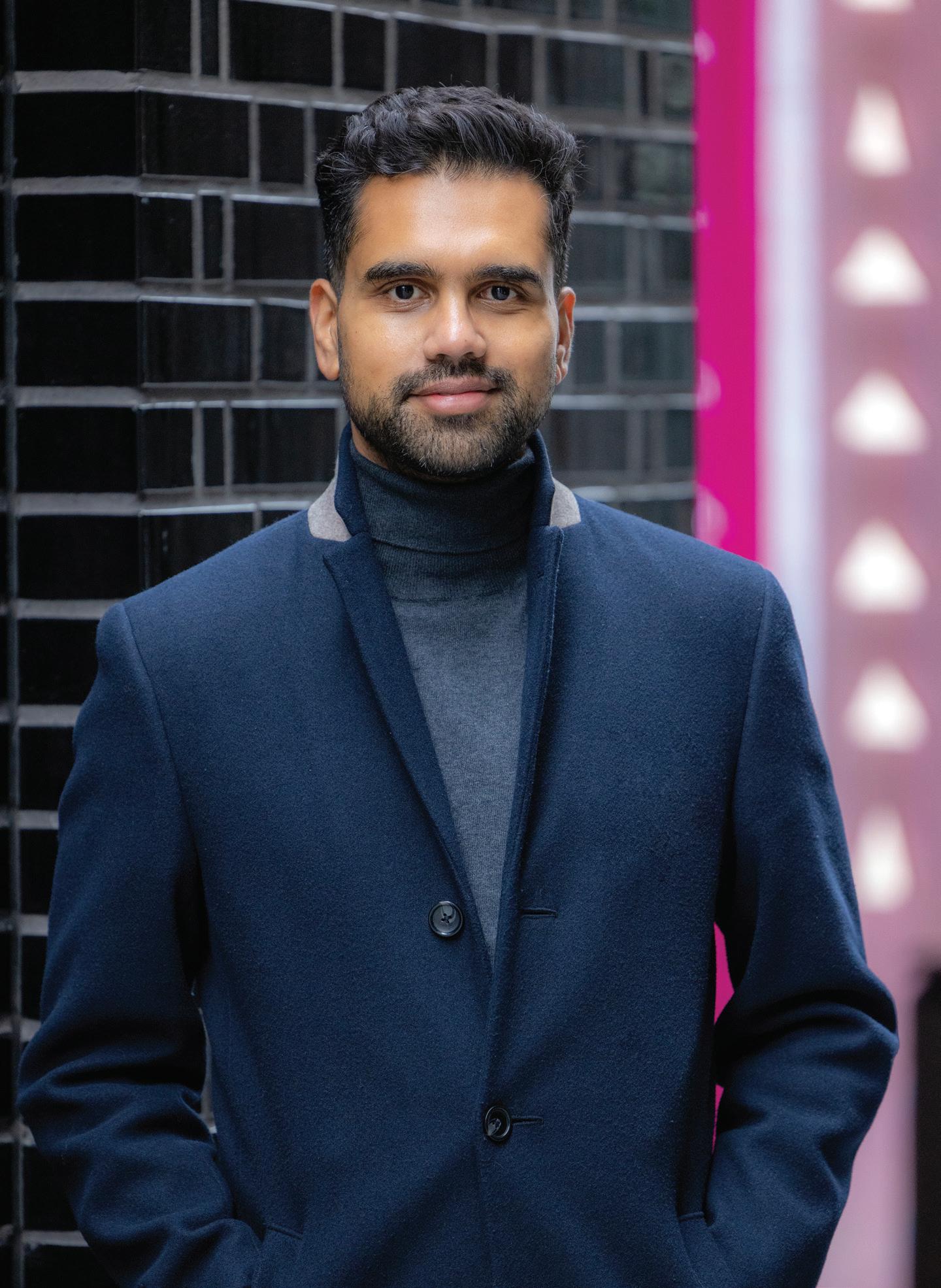

& Product Placement Associate Director, Diriyah
YEARS IN CURRENT POSITION : 2
YEARS IN THE COMPANY : 7
YEARS IN THE INDUSTRY : 15
SIZE OF TEAM : 4
SIZE OF DEPARTMENT : 300+
Next destination on your bucketlist? Japan.
Go-to cheat meal? Always a good burger.
Advice to the newest member on your team?
Welcome to a once-in-a-lifetime opportunity. At Diriyah, we’re not just building a city; we’re shaping a home for 100,000 lives and a culture and heritage destination for 50 million annual visitors by 2030. We are redefining the future of a country.
Practise gratitude for being part of this incredible journey – and bring your best every day. Together, we’re creating history and a legacy the world will never forget.
Most thought-provoking quote you’ve heard in 2024?
The only people who will remember you working late are your children.
Your favourite place in the Middle East? Oman.
A personal goal you want to achieve? Get my coaching license and coach a junior football (soccer) team.
The first thing you do when you get to work?
Try and not get overwhelmed with the amount of unread emails.
The person who has influenced you most in 2024?
My wife, who is also a life coach, and my children inspire me to be better every day.


What would you place at the top of your brand and marketing priority list in 2025?
In 2025, our top priority is mastering the dual mandate that defines Diriyah’s journey: driving commercial success while igniting global fascination for ‘The City of Earth’. As developers, we’ll accelerate leasing and sales across our world-class asset portfolio – hotels, residences, museums, academies, retail, and more – delivering tangible value. Simultaneously, we’ll continue to amplify demand for Diriyah as a must-visit destination, seamlessly merging its cultural heritage with its modern allure.
The challenge isn’t just balancing these objectives; it’s intertwining them so every commercial success fuels the global recognition of Diriyah, and every captivated visitor reinforces its commercial appeal. 2025 will be the year we solidify Diriyah’s position as not just a development, but a phenomenon that resonates across Saudi Arabia and the world.
What is the one thing you would change about the industry if you had a magic wand? If I had a magic wand, I’d transform the industry’s approach to measurement into a seamless, real-time system that tracks the total impact of every initiative – beyond traditional KPIs, beyond timelines, and beyond channels. Imagine the ability to instantly map how a single campaign sparks conversations, shapes perceptions, and strengthens brand equity long after its initial run.
This isn’t just about numbers; it’s about understanding the ripple effects of every action. From digital impressions to cultural impressions, from one-time activations to enduring brand loyalty, we’d have a holistic view of how every touchpoint, story and experience contributes to the brand’s essence. With this capability, we wouldn’t just measure success – we’d predict and optimise it, ensuring every move fuels sustained growth, relevance and resonance. It’s about moving from fleeting metrics to building timeless, measurable legacies.
Are we using the latest technologies optimally to enhance the brand’s overall customer experience?
Optimising technology to enhance the brand’s customer experience isn’t a one-and-done; it’s a perpetual evolution. We are in a transformative era when mature technologies are refining their capabilities, and emerging innovations are redefining the way societies – and customers – engage with brands.
The real challenge lies in balancing tech-savvy with human insight. While today’s customer evolves rapidly – becoming more informed, discerning, and digitally empowered – the answer isn’t just in adopting every shiny new tool. It’s in strategically leveraging technology to amplify our unique strengths, create resonant, relevant content, and build authentic connections.
Being data-informed rather than data-led is key. Data can guide us, but it shouldn’t dictate to us; people are more than metrics. At the end of the day, it’s not about chasing trends but about using technology to foster trust, relevance, and emotional impact – because no innovation can replace the power of genuine human connection.
Is there a say-do gap and a green skills gap within sustainability that need to be addressed? Absolutely! The say-do gap in sustainability? It’s a canyon – and social media’s built a lovely suspension bridge for performative activists to stroll across. According to a recent global study, 64 per cent of consumers say they want brands to take a stand on sustainability, but when it comes to their own actions? Only 26 per cent actually make environmentally conscious choices consistently.
And then there’s the green skills gap. Here’s the kicker: the World Economic Forum reports that only 10 per cent of workers globally are equipped with the green skills required to support the transition to a sustainable economy. Translation? While we’re all busy preaching, the workforce isn’t ready to do the heavy lifting needed to tackle climate challenges at scale.
The fix? Cut the carbon hypocrisy. If you’re going to hashtag #ClimateAction, make sure your own emissions aren’t the size of a small nation’s. And let’s close the skills gap by investing in real training, upskilling and education. Because saving the planet isn’t about talking the talk – it’s about having the skills (and the guts) to actually walk it.
Ali Ashraf certainly lives up to being named as a Gamechanger in the marketing and media scene, not only in the MENA region, but also in the world. Scaling up Diriyah, The City of Earth, for the world to see, Ali is shaking things up in
KSA’s media landscape. From media buying to product placement and advertising, he’s been at the heart of putting Diriyah on the global map. Ali’s fearless approach has driven growth, making moves that bring Diriyah’s vision to life.


Destination Marketing Executive Director, AlUla
YEARS IN CURRENT POSITION : 5
YEARS IN THE INDUSTRY : 30+
SIZE OF TEAM : 7 direct reports.
SIZE OF DEPARTMENT : 24 (excluding contractors)
Next destination on your bucketlist? Antarctica.
Go-to cheat meal? Stir-frys.
Advice to the newest member on your team?
Your skills and experience have got you here. Bravo and a warm welcome. You join a talented group where teamwork is valued above all else.
Most thought-provoking quote you’ve heard in 2024? “Well done is better than well.” – Benjamin Franklin. I believe in ‘doers’, as we live in a better world because of them.
Your favourite place in the Middle East? AlUla … and yes, I am guilty of bias. A personal goal you want to achieve?
Continue mentoring young Saudis, recognising that the world is their oyster … and by so doing, in some small way, give back to a place that has provided me the most fulfilling five years of my career.
The first thing you do when you get to work? Get a caffeine fix.
The person who has influenced you most in 2024? Throughout my life – my beloved mum.
Melanie’s hands-on approach, clear vision and innovative strategies have set new benchmarks in destination branding. Her commitment to community engagement, authentic storytelling and impactful growth makes her a true trailblazer. Melanie’s dedication to excellence and ability to blend history with innovation place her among the most influential leaders in marketing.


What would you place at the top of your brand and marketing priority list in 2025?
Sustainability underpins our brand promise and place-making. Earlier this year, we launched our global brand platform ‘forever revitalising’, underpinned by new digital experiences on our website and mobile app and a focused approach to social media. In 2025 we will drive speed and efficiencies in our content supply chain, and enable data-driven experiences and personalisation at scale across our digital channels. As brand custodians, we are firm advocates that we ‘walk the talk’ and champion delivering customer experiences that align with our brand promise at every touch point.
What is the one thing you would change about the industry if you had a magic wand?
In our current social media-centric world, the shrinking attention spans of our audiences put pressure on marketers to prioritise short-term paid-media metrics, sometimes at the expense of consistent brand messaging and positioning. Connecting with customers emotionally and meaningfully surely has to be the focus. Also, in an age when usergenerated content (UGC) and qualified advocacy are increasingly important, I would love to see improved tools that can effectively measure the impact of the plethora of selfconfessed content creators and influencers.
Are you using the latest technologies optimally to enhance the brand’s overall customer experience?
We have chosen leading technologies like Adobe and are making good progress to digitally enable the end-to-end experience. We try to keep pace with innovation, regularly updating our clear roadmap of enhancements so our technology solutions can best complement our campaigns. Technology has to be an enabler and, as marketers, we need to have clarity of ambition on the relevance of embracing the newest, shiniest technology to realise these ambitions – and indeed if we are to embrace it at all.
Is there a say-do gap and a green skills gap within sustainability that need to be addressed?
As a relatively new entrant to international tourism, Saudi Arabia and AlUla can learn from destinations that have got it right and are successful. AlUla is diligent about enforcing measures to qualify and quantify efforts to conserve our natural environment alongside stringent policies for the built environment. We prioritise the quality of the visitor experience by controlling visitor numbers and restricting visitor volumes at key sites at any point in time. Customers witness sustainability in action through the jobs created for locals, the revival of traditional arts and crafts and the restoration and rewilding of nature reserves, including the ultimate ambition to reintroduce the Arabian Leopard.
What is the top challenge facing brand safety and reputation management?
As storytellers in today’s rapidly evolving digital landscape, we need to embrace new technology carefully. When destination content is democratised and tools like ChatGPT and Gen AI are gaining traction exponentially, ensuring the brand narrative is authentic, on message and consistent is challenging.
What were the top demands and expectations of consumers in 2024?
Our customers are increasingly concerned about the environment and want to make responsible tourism choices. They demand immersive experiences, engagement with the local community and enhanced understanding of our deep heritage and culture. Our research suggests that once-in-a-lifetime and unique holiday experiences are often prioritised over luxury commodity purchases, with time to connect with oneself and those closest to us being highly valued. Given the fragmentation of media, which is at an all-time high, it is critical for us to adopt omnichannel strategies to ensure we effectively communicate how well AlUla delivers in this context.
How can marketers be a better voice of customers in the boardrooms or on the executive committee?
Data insights and robust customer, industry and competitor research need to form the basis of boardroom discussion and debate and be used to inform strategy. By being customer-centric and ensuring decisions are made through a customer lens, commercial ambitions can be better realised and results validated. Today the financial values of brands are listed on balance sheets and I am pleased to say AlUla’s brand, according to Brand Finance, has grown by double digits in percentage terms year-on-year. In just five years, AlUla has emerged as one of KSA’s top 20 brands according to the same source.


Vice President, Marketing, Arla Foods, MENA
YEARS IN CURRENT POSITION : 2
YEARS IN THE COMPANY : 12
YEARS IN THE INDUSTRY : 25
SIZE OF TEAM : 35 direct reports
Next destination on your bucketlist? Lead a whole business or global position in marketing. Go-to cheat meal?
Chocolate solves many problems.
Advice to the newest member on your team?
Brand yourself well. Perception is a vital key to success.
Most thought-provoking quote you’ve heard in 2024?
People who wonder if the glass is half empty or half full miss the point. The glass is refillable.
Favourite place in the Middle East? North coast of Egypt, specifically Sahel.
A personal goal you want to achieve?
Help young women to become strong leaders.
The first thing you do when you get to work?
Coffee.
The person who has inspired you most in 2024?
My daughter. I learn a lot from her. She’s very determined and inspirational. She managed to run half a marathon this month.


What would you place at the top of your brand and marketing priority list in 2025?
Purpose-led communication always wins hearts. Innovation is a must-have in such a fast-paced era. Most importantly, continue to build capability of the team to excel and grow.
What would you change about the industry if you had a magic wand?
1. I wish we could get an accurate ROI on every single activity we do.
2. A love-metre from consumers towards our brands.
3. Read our target audiences’ minds to uncover the say-do gap.
Are we using the latest technologies optimally to enhance brands’ overall customer experience?
All brands are opting to integrate the latest tech, but in such a fast-paced world, things develop much faster than our capabilities. Some marketers and agencies are reluctant to fully integrate tech as this might mean that some jobs will be deemed redundant. But nothing will ever replace the human brain.
What is the top challenge facing brand safety and reputation management? The influencer marketing hype is only going higher. This is always a double-edged sword. It could raise brands or ruin brands. There’s no clear manual for using influencers effectively. If marketers stick to brand values, the risk of brand safety is reduced immensely.
What were the top demands and expectations of consumers in 2024? Consumers are always asking for more. Rightly so. They want better products, lower prices and don’t want us to tell them what to do. In one in-home visit, an Arab woman said, “I’m the real chef here, I know what I’m doing and I don’t need brands to tell me how to do things.” This is a true insight indeed.
How can marketers be a better voice of customers in the boardrooms or on the executive committee?
Consumers should always have a seat at the table. If marketers are not meeting consumers or shoppers frequently, then they should know that they’re half blind. All the answers lie there. The secret of the success of any campaign, product launch or promo is identifying the right insight that comes from your target audience. My advice would be to get up from your desk and go to sit with them and bring their thoughts and ideas to the boardroom.
Mahitab has reshaped the cheese category and turned Puck into a household name in the region. Her approach? Bold ideas and fearless execution. What sets her apart is her ability to push boundaries and make bold storytelling the cornerstone of
success. For nearly a decade, she’s been more than a partner; she’s been a gamechanger. The kind of marketer who doesn’t just follow trends but sets them, proving that creativity, strategy and results don’t just coexist – they thrive together.


Marketing Director, Lipton Teas and Infusions Arabia
YEARS IN CURRENT POSITION : 2.5 years
YEARS IN THE INDUSTRY : 13
SIZE OF TEAM : 15
SIZE OF DEPARTMENT : 15
Next destination on your bucketlist? Iceland.
Go-to cheat meal?
High Joint burger.
Advice to the newest member on your team? Fail fast, learn faster.
Most thought-provoking quote you’ve heard in 2024?
“Set your life on fire. Seek those who fan your flames” – Rumi Favourite place in the Middle East? Dubai, always.
A personal goal you want to achieve?
Publish an article in Harvard Business Review
The first thing you do when you get to work?
Prepare my morning tea – a cup of delicate and aromatic Lipton Earl Grey.
The person who has influenced you most in 2024? My unborn baby (I’m pregnant ). It is a miracle to see how someone you’ve not even met can put so much love in your heart.
Reham Mufleh, Managing Director, Horizon FCB
Ozge is a highly experienced marketing professional with 13 years of industry expertise. As an ideal partner for any agency, she collaborates seamlessly with our team, considering Horizon FCB an integral extension of her marketing department. Ozge’s bold, brave approach and forward-thinking mindset inspire those around her, challenging both her team and the agency to deliver work that is not only locally relevant but also exceptionally insightful. It is refreshing to work with someone like Ozge who consistently pushes the boundaries with us to elevate our marketing initiatives and achieve extraordinary business results.


What would you place at the top of your brand and marketing priority list in 2025?
All our brand and marketing plans revolve around one big objective: to get consumers in the region to fall in love with our brands – Lipton, Brooke Bond Red Label, and Pukka – again and again at every touchpoint. Over the past years, we’ve embarked on a journey to invest significantly in innovation, great product quality and experience to offer the best cup of tea. In 2025, our priority will be to delight tea lovers with bold and memorable communication and activations, while exciting the tea category with new breakthrough innovations.
What is the one thing you would change about the industry if you had a magic wand?
If I had a magic wand to change one thing about the FMCG industry, it would be to make the entire supply and consumption chain completely sustainable and waste-free, without compromising the consumer experience.
Are we using the latest technologies optimally to enhance brands’ overall customer experience?
I see that many brands have started experimenting with cutting-edge technologies like AI, AR, voice recognition, IoT and big data analytics in various ways. However, they often utilise them in isolated, short-term applications rather than integrating these technologies into a holistic strategy and everyday operations. Therefore, I don’t believe we are close to achieving that optimal stage yet.
Is there a say-do gap and a green skills gap within sustainability that need to be addressed?
The gaps arise when sustainability is not fully ingrained in an organisation’s strategy; this is when companies tend to prioritise short-term gains over long-term sustainability. At Lipton Teas and Infusions, sustainability is central to our strategy. Our Lipton Jebel Ali factory in Dubai has been a zero-waste-to-landfill site since 2014, being the first in the UAE to achieve this. Additionally, our factory is set to use 100 per cent of its rooftop space for solar power, reinforcing our commitment to net-zero targets and environmental sustainability.
What is the top challenge facing brand safety and reputation management?
During periods of uncertainty and conflict, the spread of misinformation increases, particularly on digital platforms where individuals have the freedom to share and disseminate unverified information. This poses a significant challenge for brands, as they must navigate the complexities of managing their reputation and ensuring the accuracy of the information related to their products and services.
What were the top demands and expectations of consumers in 2024?
I’d highlight a few key points:
Experience versus physical goods: Consumers seek more emotional and memorable engagements from brands than just physical products.
Personalisation: Consumers expect brands to understand them better and deliver more relevant messaging and offers based on their preferences and behaviours.
Convenience: In our region, while e-commerce is experiencing huge growth, consumers still value in-store experiences. Seamlessly integrating online and offline experiences is essential.
Value hacking: Economic uncertainty is driving consumers to be more priceconscious, seeking greater value for money without compromising on quality, to make the most of their money.
How can marketers be a better voice of customers in the boardrooms or on the executive committee?
I refer to marketers as the ‘spider-in-the-web’ of an organisation, as they connect all functions to guide the brand strategy, grounded in a deep understanding of the consumer. Marketers must be data experts, continuously analysing consumer and market data to make informed, data-driven decisions. Additionally, they should pair this analytical approach with a genuine curiosity to understand deep consumer motivations and why consumers behave the way they behave. By integrating both, effective marketers can craft compelling, consumer-centric stories that drive brand success.


YEARS IN CURRENT POSITION : 4 years
YEARS IN THE INDUSTRY : 20 years
SIZE OF TEAM : 7
SIZE OF DEPARTMENT : 550 (Marketing + CX)
Next destination on your bucketlist? Japan, got to love them blossoms.
Go-to cheat meal?
Dark chocolate. Shhhhhhh, don’t tell my wife.
Advice to the newest member on your team? Always be curious.
Most thought-provoking quote you’ve heard in 2024? “Your brand is what other people say about you when you’re not in the room.” – Jeff Bezos.
Your favourite place in the Middle East? Jordan. Amazing people, and don’t get me started on the knafeh.
A personal goal you want to achieve? Retire early.
The first thing you do when you get to work? High five everyone.
The person who has influenced you most in 2024? Steven Bartlett, his ability to get the most influential people in the world to open up and share their stories is truly inspirational.
Kathleen Burbridge, Senior Account Director, Gambit Communications AGENCY REFERENCE
Mike is a passionate client, and it shines through the work we get to do for him at Aramex. His human-centric and candid approach as a marketer is what makes his work not only great but inspiring. He doesn’t see marketing and communications as just a function in the business, but as truly central to how people see and engage with a brand to build trust. Mike is willing to take risks and go beyond what people expect from a logistics company.


What would you place at the top of your brand and marketing priority list in 2025?
My marketing priorities will centre on two main goals. First, driving revenue by exploring new, innovative streams. Expanding beyond traditional approaches is key to finding fresh avenues for growth. Second, leveraging AI even more deeply within the marketing team, not just to cut costs, but to boost productivity and amplify output. From enhancing content creation to automating customer insights, tracking live customer sentiments, voice bots, dynamic personalised emails, video in email, gen bots, route optimisations, tracking… the list is endless.
What is the one thing you would change about the industry if you had a magic wand? I’d transform the outdated perception of marketing as just a ‘cost centre’. It’s time for the industry to fully recognise that modern marketing is a powerful revenue driver. Over the past decade, marketing has evolved into a strategic commercial powerhouse focused on growth, customer engagement and delivering measurable ROI. Marketing today is far from a cost line item; it’s a core engine that fuels business success. Let’s make that shift happen. No magic required.
Are we using the latest technologies optimally to enhance the brand’s overall customer experience?
At Aramex, we’re all in on leveraging the latest tech to elevate our customer experience. In 2024, we doubled down on AI across marketing and customer experience, and the investment is only growing for 2025. We’re rolling out some truly game-changing projects, from live package tracking and autonomous bot deliveries to personalised messages from our CEO for every new Aramex account holder. And that’s just the beginning. We’re committed to making Aramex the best in the business by putting cutting-edge tech at the heart of everything we do, creating seamless, personalised experiences for our customers worldwide.
Is there a say-do gap and a green skills gap within sustainability that needs to be addressed? 100 per cent. Absolutely, there’s both a ‘say-do’ gap and a green skills gap in sustainability, and they need serious attention. Many companies are big on promises but fall short when it comes to action. We all need to embrace a ‘now’ mindset of less talk, more action. At Aramex, sustainability isn’t just a buzzword, it’s core to our mission. We published a sustainability report, and every decision since has been made with sustainability in mind. Aramex’s mission statement is: To connect people and businesses reliably and responsibly. To truly achieve this, we need the right expertise in-house, which is why we have a chief sustainability officer on our leadership team. This ensures we’re not just making promises but actively delivering on them. We need to hold each other accountable and not be scared to challenge when needed.
What is the top challenge facing brand safety and reputation management?
Connectivity, while incredible, brings its own serious challenges. We’re constantly navigating a world where every action is closely scrutinised. From how we conduct ourselves to how we present our brand, mindfulness is essential. For a global, publicly listed company like ours, this responsibility is even greater. We carefully consider how each campaign will resonate across diverse audiences and cultures. Unfortunately, we’ve all seen brands stumble with campaigns that unintentionally offend, and in today’s connected world, those missteps can leave a lasting impact. The stakes are high, and every message matters, so we’re committed to keeping our brand reputation strong and respectful.
What were the top demands and expectations of consumers in 2024?
In 2024, consumers wanted everything “right now”. Instant gratification was king. They expected lightning-fast delivery, rapid-fire customer service, and seamless experiences all around. But that wasn’t the whole story. More and more people started choosing brands based on their carbon footprint, showing a real shift toward eco-conscious buying. This, of course, creates a new challenge. Instant gratification often comes with higher carbon emissions, as in the case of rush deliveries versus consolidated ones. This trend isn’t going anywhere, so businesses need to keep up. Meeting today’s demands for both speed and sustainability isn’t just nice to have, it’s the new loyalty driver.
How can marketers be a better voice of customers in the boardrooms or on the ExCo? With endless data at our fingertips, marketing is more than ever a catalyst for understanding and visualising the customer experience. It’s essential that marketing and CX are fully intertwined to make sure customer insights don’t just sit in reports but are shared regularly with the board and, most importantly, acted upon. Turning these insights into compelling stories makes them easier for leaders to grasp and more powerful in shaping strategy. Equally important is keeping the board in the loop on any changes made and their measurable impact on revenue, growth and brand loyalty. After all, customer insights drive business success, so let’s make sure they have a seat at the table.


Managing Director - EMEA, Perfe i Van Melle
YEARS IN CURRENT POSITION : 3 years
YEARS IN THE INDUSTRY : 25 years
SIZE OF YOUR TEAM : 45
SIZE OF YOUR DEPARTMENT : 45
Next destination on your bucket list? Switzerland.
Go-to cheat meal?
Home-made hamburger.
Advice to the newest member on your team? Before making any decision, imagine the company is your own.
Most thought-provoking quote you’ve heard in 2024?
“The future depends on what you do today.” – Mahatma Gandhi. Your favourite place in the Middle East? UAE and, specifically, Dubai. A personal goal you want to achieve?
Establish a thought leadership platform that inspires and mentors the next generation of leaders across the MEA region.
The first thing you do when you get to work? Review key priorities and align with my team on any changes and requirements.
The person who has influenced you most in 2024?
Jensen Huang, the CEO of Nvidia.


What would you place at the top of your brand and marketing priority list in 2025? Leverage data analytics and artificial intelligence to create personalised marketing messages and product recommendations that match individual consumer preferences and behaviours. This tailored approach enhances customer satisfaction and strengthens brand loyalty while driving sales growth. By adopting this strategy, businesses can gain a competitive advantage in the marketplace, ensuring they meet the unique needs of their customers and stand out among competitors.
What is the one thing you would change about the industry if you had a magic wand? I would accelerate the FMCG industry’s shift toward even deeper consumer engagement through enhanced transparency and sustainable practices. By fostering a closer alignment between consumer expectations and brand actions, we can strengthen trust and loyalty, creating a more meaningful connection. This evolution would position FMCG brands not only as providers of quality products but also as proactive partners in a more sustainable, values-driven future for the MEA region and beyond
Are you using the latest technologies optimally to enhance the brand’s overall customer experience? Advancements like artificial intelligence, chatbots and personalised marketing tools can enhance customer engagement and convenience, but not all brands fully utilise them. Challenges such as integration and data analysis may hinder their effectiveness. To fully benefit from these technologies, brands should focus on training, aligning tools with customer needs and actively seeking feedback. This strategy can create a seamless experience, leading to increased customer loyalty and satisfaction.
Is there a say-do gap and a green skills gap within sustainability that needs to be addressed?
Addressing the ‘say-do gap’ and ‘green skills gap’ in sustainability is crucial for meaningful progress. While many businesses are actively pursuing positive change, there is still significant work to be done, especially within the MENA region. Building the skills and cultivating the actions needed to achieve sustainable goals is essential – and it starts at home. Unlike past generations, for whom environmental concerns were not a primary focus, today we are all more aware and committed to making a difference. Collective effort and continuous learning will be key to driving genuine impact and creating a sustainable future.
What is the top challenge facing brand safety and reputation management?
The top challenge in brand safety and reputation management is navigating the fast-paced digital landscape, where brands risk exposure to misinformation and misalignment. Ensuring messages reach the right audiences safely requires vigilant monitoring and agile reputation strategies that build trust and maintain brand integrity amid rising consumer demands for transparency.
What were the top demands and expectations of consumers in 2024?
Consumers in the Middle East are increasingly prioritising creativity, sustainability, transparency and personalisation from brands. They expect companies to adopt eco-friendly practices and demonstrate social responsibility, reflecting a heightened awareness of environmental issues. Transparency in sourcing and production is essential for ensuring product authenticity and ethical practices, while personalised marketing caters to individual preferences, indicating a shift toward conscious consumption and deeper brand connections.
How can marketers be a better voice of customers in boardrooms or on the executive committee? Marketers can strengthen their role as the voice of the customer by gathering and presenting feedback through tools like surveys and social media listening. Clear articulation of customer needs and collaboration with other departments ensures a unified customer-centric approach. Sharing relatable customer stories helps humanise data and fosters a culture of empathy in strategic discussions.
Milad Rouhana is a true game changer. He is a visionary marketing leader who delivers innovative, high-impact campaigns, and never wavers on his commitment to marketing excellence. We’ve been privileged to work alongside Milad and his team. His data-driven approach, combined with his deep consumer understanding and ‘positively provocative’ attitude, has consistently driven growth for
Perfetti Van Melle brands like Mentos and Chupa Chups. Milad encourages his team to employ forward-thinking strategies, such as integrating Mentos into esports, demonstrating his commitment to delivering unforgettable media activations. He empowers his team to go above and beyond and take risks. As a result, he has driven unparalleled business growth.


YEARS IN CURRENT POSITION : 8
YEARS IN THE INDUSTRY : 13
SIZE OF TEAM : 18
SIZE OF DEPARTMENT: 18


What would you place at the top of your brand and marketing priority list in 2025? Deliveroo has never been a brand that does what everyone else does, and I’m excited to continue innovating throughout 2025. We’re still scratching the surface of creative excellence and what we can learn from our media mix.
What is the one thing you would change about the industry if you had a magic wand? There is a general lack of creativity in marketing today. The way I see it, the industry has pivoted to overly functional, bottom-of-the-funnel creative and media and it has really made marketing bland and boring. I don’t hear people talking about marketing the way they used to in the 90s.
Are we using the latest technologies optimally to enhance the brand’s overall customer experience? We’ll always try to be the best in class when it comes to extracting the maximum value across all the platforms and technology that we have available to us. The challenge that marketing leaders face is balancing budget and workload, which goes hand-in-hand with extracting the maximum impact from these channels and technologies.
Is there a say-do gap and a green skills gap within sustainability that need to be addressed? What I’ve come to realise is that there might be all the intent in the world to be more sustainable and implement more regenerative practices, but if the technology and infrastructure don’t exist, or the cost doesn’t outweigh the benefit, you won’t get companies or the general public to adopt sustainable practices. We’re all excited for the day when sustainability becomes more attainable and accessible.
Next destination on your bucket list? I cannot wait to go hiking in Uganda. While I am there, I’d love to see the gorillas.
Go-to cheat meal? Give me pizza.
Advice to the newest member on your team?
Mistakes are OK. You’ll learn as we go.
Most thought-provoking quote you’ve heard in 2024?
“The world suffers a lot. Not because of the violence of bad people, but because of the silence of good people.” – Unknown.
Your favourite place in the Middle East?
Oman for scuba diving. A personal goal you want to achieve? Invest in a piece of land.
The first thing you do when you get to work?
Coffee, and make a to-do list.
The person who has influenced you most in 2024?
Taghrid Oraibi, Deliveroo Head of Comms. Incredibly creative and a total perfectionist.
What is the top challenge facing brand safety and reputation management?
The UAE is an incredible place with so many people from all over the world residing here. The challenge is balancing marketing efforts while also being sensitive to the cultural nuances from so many countries, and the tragedy that so many people are facing due to disasters in their home countries. There is a lot going on in the world right now and it’s becoming increasingly easy to alienate our audiences.
What were the top demands and expectations of consumers in 2024?
Consumers have started expecting more from brands in the last year. Prices of goods and services are increasing across the board, and consumers want to see and feel more value from the money that they’re parting with for products and services. The brands that will win are brands that can help customers feel that they are getting the same value for money despite rising prices.
How can marketers be a better voice of customers in the boardrooms or on the executive committee? A challenge for marketers will always be to communicate creative and emotional concepts in rational and quantifiable terms. The board and executive committee care about the bottom line, and as a cost centre, the marketing team’s challenge is to quantify our spend and the contribution to the bottom line. I believe in setting aside a budget for a decent data science team or paying an agency to support developing a media mix model against marketing spend so that you can quantify the in-year impact and long-term impact, which is typically where marketing moves from being a cost centre to a profit driver.
Fadi Yaish, Group CEO and Chief Creative Officer, And Us Group
George Schempers is the best example of an aspirational marketer; I have only met a handful in my more than three decades of career. George would do what makes most marketers uncomfortable. He understands the impact of great ideas, and how they are essential to his business. He never turns down a good idea and trusts his agency. I believe George really loves what he is doing and has fun doing it.
This shows in every meeting. It’s always a great pleasure listening to him talk about his marketing strategies and plans, and how he is planning to do better for his customers while contributing to the bottom line. In advertising, and marketing at large, it is very difficult to find people like George, and those who do are very lucky.


Vice President, Destination Marketing and Communications, Ras Al Khaimah Tourism Development Authority
YEARS IN CURRENT POSITION : 4.5 years
YEARS IN THE INDUSTRY : 18
SIZE OF TEAM : 11 (in-house)
Next destination on your bucketlist? Svalbad, Norway to see the Northern Lights. Go-to cheat meal?
Magnum classic ice cream (the 440ml tub is a meal in itself for me).
Advice to the newest member on your team?
Listen more, learn on-the-go, and try not to be everything to everyone.
Most thought-provoking quote you’ve heard in 2024? Be tough on the work but kind to the people.
Your favourite place in the Middle East?
Jebel Jais in Ras Al Khaimah. It’s not just a nod to my work, but I genuinely feel rooted there.
A personal goal you want to achieve?
More patience. As a mother, friend and leader.
The first thing you do when you get to work? Hydrate (my commute is just over an hour).
The person who has influenced you most in 2024? Raki Phillips, my boss and friend who has deep reservoirs of both enthusiasm and problem-solving ability – a killer combo.
Joanna Agnew, General Manager, Tales & Heads
Alka is a natural leader whose professionalism and vision have inspired not only me but the teams around her. She consistently remains calm under pressure. Alka is proactive in assessing evolving needs, building her team and agency network, and implementing key changes. She delivers strategic, data-driven work with clear direction that empowers those who work with her. Alka is not just a brilliant professional, but also a valued collaborator and friend. She is exceptionally smart and detail-oriented, and is relentless in achieving excellence.


What would you place at the top of your brand and marketing priority list in 2025?
Becoming a better behavioural scientist. Looking at genuine insights, both quantitative and qualitative, on consumer motivation when it comes to travel. This may sound obvious, but in tourism, it is a never-ending pursuit of trying to understand when travellers start dreaming, considering and booking travel and how this could lead – we hope – to customer loyalty and lifetime value. While data sets and reports are aplenty, doubling down on key stats and variables, combined with field work and figuring out the right omnichannel mix, is sound decision-making with some alchemy thrown in.
What is the one thing you would change about the industry if you had a magic wand?
To invest more time, energy and money in culture. Forming teams with diverse backgrounds, opinions and different skills sets is critical, and welcoming a multi-generational workforce is key. But really, it goes beyond that. Our industry should embrace disruption and borrow from other industries on how to approach challenges, draw inferences and take on a true multisector approach.
Are we using the latest technologies optimally to enhance brands’ overall customer experience?
I think we are doing the best we can with the level of technology we have. Brian Chesky, the CEO of Airbnb, said it best: “No one will deliver on the promise of AI this year”, as the technology is constantly upgrading and getting better. Our job as marketers is to really stay on top of technological advances, incorporate AI in processes and optimisations, pitches and final products – if not too over-manufactured and relevant for the brand. One area where I’ve seen immediate gains is working with our media strategy agency to leverage AI technology in optimising media spend in real-time, resulting in higher ROI for our campaigns. This is certainly an area that all marketers should take advantage of.
Are there a say-do gap and a green skills gap within sustainability that need to be addressed?
I see the response to this question as being two-fold. From an operational perspective, there are very skilled professionals who work with industries such as ours in auditing, collecting clean data and benchmarking against sustainable standards ranging from waste and greenhouse gas emissions all the way to gender parity and inclusion in the workplace. From a communications perspective, there is a noticeable gap in marketing and PR. Given the greater scrutiny in this area, and greenwashing, more work needs to be done in being factual, leading with metrics and tangible proof points and putting this within the context of the industry and the destination in which we work.
What is the top challenge facing brand safety and reputation management?
When it comes to brand safety, the top challenge is preventing the dilution of the brand and its values, which typically happens with management shifts or strategy changes within an organisation. Brand value, safety and affinity are really a long game. Protect them. With regards to reputational management, there still is some hesitation amongst PR practitioners in being upfront and straightforward to media and stakeholders when their brand faces challenges and/or a crisis. However, communicating as quickly as possible, and getting a jump on the narrative instead of being led by it, is the way to get back to business as usual.
What were the top demands and expectations of consumers in 2024?
In the tourism space, it’s a range of consumer expectations, from off-peak travel – meaning that tourists are no longer restricted to traditional holiday periods when travelling – to blended or ‘bleisure’ travel, tacking on some leisure time when visiting a destination on business. We’re also seeing gig-tripping, or the ‘Swift’ effect driving event-led tourism and contributing significantly to GDP. It’s also recognising the shifting patterns of how people become inspired and how they decide where to go. The dreaming phase for millennials and Gen Zs is not where you would typically find it – a destination’s website or an online travel agency, or even on TV or in print; it’s on social. Whether that stays or changes is yet to be seen, with dedicated programmes that incorporate travel and drama, like White Lotus, and new ways of advertising on streaming platforms becoming increasingly influential.
How can marketers be a better voice of customers in the boardrooms or on the ExCo? By demonstrating the value of creativity in marketing and PR and highlighting the price of being dull. This is directly from two seminal marketing leaders, Adam Morgan and Peter Field, who argued that uninspired and dull creative campaigns not only undermine the brand but also its financial performance. This also leads to marketers working more closely with their CFOs to show (and sometimes educate) how their budgets lead consumers down and up the marketing funnel, and finding the right balance between tactical, conversion-led marketing and brand-building awareness campaigns.
Google’s Regional Marketing Director Najeeb Jarrar speaks to Campaign Middle East about the need to combine creativity and AI-driven data models to unlock ‘powerful opportunities for marketing’.
By Anup Oommen

Amidst a growing focus on measurable outcomes and trackable metrics, there’s a debate brewing about whether creativity is taking a toll.
On one hand, the pressure to demonstrate return on investment (ROI), transparency, and accountability within the marketing landscape is higher than it’s ever been.
On the other hand, marketers and agency leaders – who, at times, get dragged into the maelstrom of performance-driven, short-term KPIs and are forced to deliver immediate, quantifiable results – run the risk of sidelining creative endeavours that may not yield easily trackable metrics, but are essential for long-term brand building.
‘BALANCE BETWEEN DATA-DRIVEN OPTIMISATION AND CREATIVE STORYTELLING’
Campaign Middle East spoke to Najeeb Jarrar, Regional Product and Marketing Director at Google, during the Athar Festival in Saudi Arabia. He opened up about the need to curb short-term thinking, encourage creative risk to build sustainable brands, and the role of creativity in an increasingly digital world.
Jarrar said, “While trackable metrics are crucial in digital marketing, an over-reliance on them can sometimes stifle creativity.”
He then went on to make the case for creativity beyond mere metrics. Jarrar explained how creativity remains crucial in the digital world to cut through the noise, build emotional connections with local consumers, shape brand perception and drive innovation.
“With the sheer volume of online content, creativity is crucial for capturing attention and standing out from the competition. Bland, generic ads simply won’t make an impact. Creativity allows brands to tell stories, evoke emotions and build meaningful connections with their audiences. This fosters brand loyalty and drives long-term growth, which direct response can’t always achieve on its own,” Jarrar said.
“While direct response is highly effective for immediate results, creativity fuels long-term brand building and fosters a lasting impression,” Jarrar added.
“Creative campaigns also contribute significantly to brand image and identity. They help shape how consumers perceive a brand and differentiate it in the market. Creativity pushes boundaries and leads to new ideas and formats in digital advertising. This keeps campaigns fresh and engaging, preventing stagnation. The most successful digital marketing strategies find the right balance between data-driven optimisation and creative storytelling.”
Jarrar’s opinions were echoed by several industry leaders attending the Athar Festival who said that creativity shouldn’t be sacrificed at the altar of data; rather, each should enhance the other, with metrics guiding creative decisions and creative insights inspiring innovative metrics-driven strategies.
This balanced approach allows brands to build strong identities and foster customer loyalty while still meeting measurable business goals.
AGE OF AI
To find this balance, leaders at Athar Festival suggested an arranged marriage between creativity and generative AI models.
When questioned about this, Jarrar pointed to Google’s recently introduced Imagen3, its most powerful text-to-image model yet, which helps marketers generate images based on a prompt, and Veo, the platform’s video generation model.
Jarrar said, “We are planning to take Veo across YouTube Shorts soon to help brands scale their assets and experiment with their target audiences.”
He added, “We’re also seeing many such examples of how generative AI can help marketers develop creative assets in seconds, and test multiple versions that suit the different needs of customers. AI-driven assets also make it easier to scale tailored experiences across platforms by continuously optimising creatives, placements and messaging, which helps maintain brand impact while keeping content fresh.”
That said, Google is not new to the analytical and predictive AI game. It has been using predictive AI within its ad products for years, investing
heavily in machine learning and AI to supercharge marketing.
“It’s the addition of Generative AI that’s unlocking even more powerful opportunities for marketing – covering creatives, media activations and real-time measurement,” Jarrar said, “However, balancing precise targeting with user privacy is crucial. Google is focusing on AI-driven solutions that enable marketers to reach the right audiences without relying on third-party cookies, aligning with privacy regulations. With tools like Federated Learning of Cohorts (FLoC), among others, Google aims to refine targeting while safeguarding user data, ensuring marketers can deliver relevant ads responsibly.”
The company’s AI-powered Performance Max tool has also enabled advertisers to automatically adjust ad content in real-time based on user context, increasing relevance and engagement.
“WHILE DIRECT RESPONSE IS HIGHLY EFFECTIVE FOR IMMEDIATE RESULTS, CREATIVITY FUELS LONGTERM BRAND BUILDING AND FOSTERS A LASTING IMPRESSION.”
Jarrar said, “We built Google Ads Data Manager to help companies simplify the importing and activation of first-party data, and to address complexity in sharing the data with point-and-click workflows –all in a secure and privacy-safe way. If the data is sorted efficiently and effectively, marketers can use generative AI in Performance Max to create and scale text and image assets with simple clicks.”
The platform also provides a Product Studio tool, which helps marketers maintain the quality of their assets by
cut-outs. This empowers marketing teams
increasing resolution and creating clean cut-outs. This empowers marketing teams by saving time on daily tasks and creating space and time for strategy, creativity and implementation tactics.
As awareness of the actual on-ground implementation of AI increases within the industry, the expectations of clients, brands and consumers are also growing.
Clients and brands are now expecting much faster speed to market with lower costs and shorter deadlines, while consumers are expecting a level of personalisation, experience and satisfaction that has not been demanded before. Add to the mix an extremely competitive landscape, with very low margins, and we see necessity driving stakeholders toward a better use of data.
“Measurement is more important than ever, and with the integration of AI tools and features, it’s becoming more feasible for marketers to optimise their campaigns according to set objectives, in a timely manner,” Jarrar said.
Marketers are turning to tools such as Google Analytics 4 (GA4), Enhanced Conversions, Consent Mode and Measurement Diagnostics to make use of first-party data and use it effectively to inform future campaigns.
Jarrar added, “AI is transforming how marketers forecast trends and consumer behaviours, enabling proactive rather than reactive marketing. By providing predictive insights, these tools help marketers anticipate shifts in consumer needs, optimise budgets, and better manage inventory in real-time. These insights are especially valuable for emerging and seasonal trends, where rapid adaptation is key.”
When Jarrar discussed other trends that will influence advertising in the near future, he listed mobile marketing, the growth of video content and the rise of social commerce in the MENA region.
target audience effectively on mobile, we will see the rise of new formats and in-app experiences to drive engagement as users adopt new apps and platforms.”
“Video content consumption is exploding, with short video formats becoming more popular, we will see more creators emerging and attracting their own niche audience. Which makes video content for brands a priority. Keep an eye out for the required return of vertical video content,” he added. “Social media is becoming a shopping destination. This will be the next big trend to watch out for in the next two years. Expect seamless integration of shopping features within platforms, and more ad formats that take advantage of the new social media formats and platforms that drive sales directly within social feeds.”

Jarrar said, “High mobile penetration, means mobile-first strategies are key. In the region, mobile marketing will continue its rapid growth due to high smartphone penetration and increasing internet usage. As brands are focused on reaching their

DEC 2024
CAMPAIGN AGENCY OF THE YEAR MIDDLE EAST AWARDS (DUBAI, UAE)
FEB 2025
CAMPAIGN BREAKFAST BRIEFING (DUBAI, UAE)
Ramadan Advertising & The Year Ahead
MAR 2025
CAMPAIGN CMO ROUND TABLE (DUBAI, UAE)
SEPT 2025
CAMPAIGN BREAKFAST BRIEFING (DUBAI, UAE) The Future is Now
MAY 2025
CAMPAIGN
SAUDI BRIEFING (RIYADH, KSA) Strategy & Technology
APR 2025
CAMPAIGN BREAKFAST BRIEFING (DUBAI, UAE) Talent & Technology
OCT 2025
CAMPAIGN
SAUDI BRIEFING (RIYADH, KSA) Media & Marketing
NOV 2025
CAMPAIGN BREAKFAST BRIEFING (DUBAI, UAE) Out of Home
DEC 2025
CAMPAIGN AGENCY OF THE YEAR MIDDLE EAST AWARDS (DUBAI, UAE)







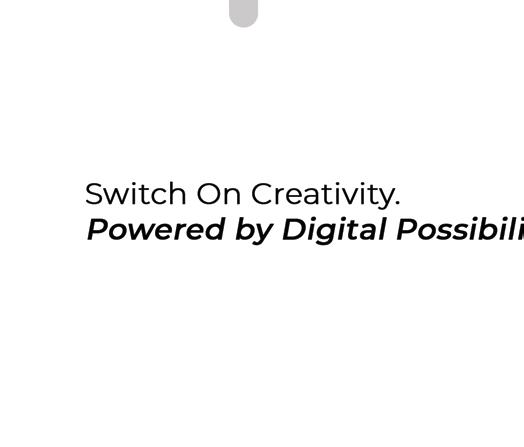






The most powerful campaigns are those that marry the science of data with the art of creativity, says Boopin’s Shadi Abdulhadi.

In today’s competitive digital landscape, creating a successful campaign demands more than just a good idea or creative design. The most effective campaigns are those that blend creativity with data-driven insights to truly engage audiences and deliver measurable results. By understanding both the art and science of digital campaigns, we can develop strategies that are not only memorable, but also impactful. Here is how to achieve this crucial balance between creativity and data:
POWER OF CREATIVITY
Creativity is at the heart of any campaign. It is what captures attention, helps brands stand out, and creates lasting impressions. In today’s digital world, where consumers are constantly bombarded with content, a well-crafted, creative campaign can cut through the noise and resonate with audiences on a personal level. A practice we constantly adopt at Boopin.
We start by grounding our creativity in a deep understanding of the audience. We dive into their
preferences, interests and behaviours, so that every creative element aligns with what truly matters to them. By weaving in stories and visuals that reflect our audience’s own experiences, we create campaigns that not only entertain but also build a genuine connection with the brand.
Choosing the right medium and format is equally important. A brand’s message might be best shared through a captivating video, an Instagram carousel, an interactive game, or even an augmented reality (AR) experience. We consider how audiences interact with each platform, designing creative elements that fit the format seamlessly and enhance engagement and recall.
This is our approach: combining insight-driven creativity with the right channels to deliver campaigns that not only stand out but also stay with the audience.
While creativity sparks engagement, data provides the insights needed to shape and refine that creativity. Data enables us to understand who our audiences are, how they behave online, and what they are likely to respond to. Through data, we can make informed decisions about where and how to allocate resources for maximum impact.
Audience segmentation: One of the primary ways we use data is through audience segmentation. By identifying demographics, psychographics and behavioural patterns, we can create targeted messages tailored to each group. Rather than a one-size-fits-all approach, we design campaigns that feel personalised and relevant, which increases their effectiveness.
Campaign optimisation: Data also allows us to adjust campaigns in real-time. If a particular ad isn’t performing as expected, data analysis can reveal why. We may discover that a certain demographic isn’t engaging, or that one creative element is outperforming another. With these insights, we can optimise campaigns on the go, ensuring they deliver the best possible results without wasting resources.
Return on investment (ROI): For many of our clients, achieving a clear and measurable ROI is a top priority. This is made possible by leveraging data to measure success. By analysing metrics like engagement, click-through rates, conversion rates, and customer acquisition costs, we gain insights
into a campaign’s financial impact. This approach ensures that our campaigns are not only creative but also cost-effective and results-driven, aligning with our clients’ goals for measurable outcomes.
BALANCING CREATIVITY WITH DATA
One of the biggest issues that agencies face is data overload. With so much information at hand, it can be overwhelming to determine which data points are useful. This can lead to analysis paralysis, where the creative process is stalled because there’s too much data to sift through.
On the other hand, overemphasis on data can stifle creativity. When every decision is driven strictly by metrics, campaigns can become formulaic and lose their uniqueness. While data provides valuable insights, it should be a guide rather than a constraint. Successful campaigns often emerge from creative ideas that push boundaries and surprise audiences – something that purely data-driven strategies may miss.
Maintaining a balance requires collaboration between creative and analytical teams. These teams may approach campaigns from different perspectives, with creatives focused on ideas and visuals and analysts focused on numbers and metrics. Ensuring that both teams work together harmoniously is essential but often requires effort and flexibility.
INTEGRATING CREATIVITY AND DATA EFFECTIVELY
To create digital campaigns that are both creative and data-driven, we employ several strategies: Using data as a creative guide, not a rulebook: We see data as a guide that informs our creativity. It tells us what audiences want and need, but it doesn’t define how we tell the story. For example, if data shows that a specific demographic enjoys shortform video, our creative team has the flexibility to experiment with different storylines, visuals, and formats within that medium.
A/B Testing: It allows us to experiment with different creative elements on a smaller scale before a full rollout. For example, we might test two versions of an ad—one with a humorous tone and another with a more emotional angle. By analysing the response, we can determine which resonates best with the audience.
Personalisation: Data-driven personalisation can significantly boost engagement by tailoring messages to specific audience segments. However, it should enhance the brand’s core story, not dilute it. If done correctly, personalisation can make campaigns feel more relevant without losing authenticity.
Balancing creativity and data is essential in the modern digital landscape. Agencies that successfully integrate both elements can create campaigns that are not only visually compelling but also relevant and effective. At Boopin, we understand that data should inform creativity, not limit it, and creativity should leverage data to ensure impact and relevance. This balance allows us to build stronger connections with audiences, delivering campaigns that not only capture attention but also drive real results.
In a world where digital audiences are continually evolving, the most powerful campaigns are those that marry the science of data with the art of creativity. By achieving this balance, brands can stand out, resonate, and ultimately succeed in a crowded digital landscape.
By Shadi Abdulhadi, Founder and CEO, Boopin
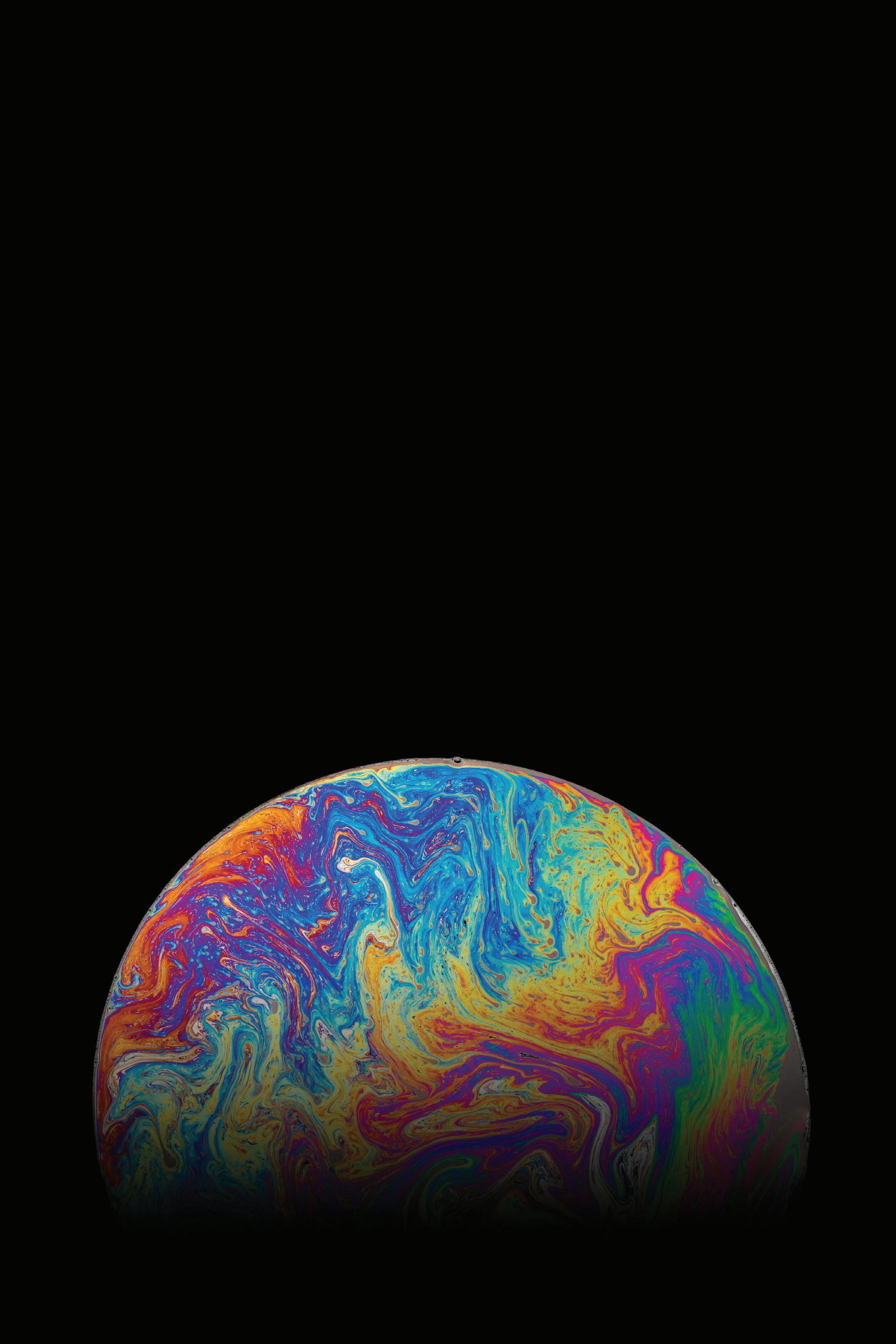
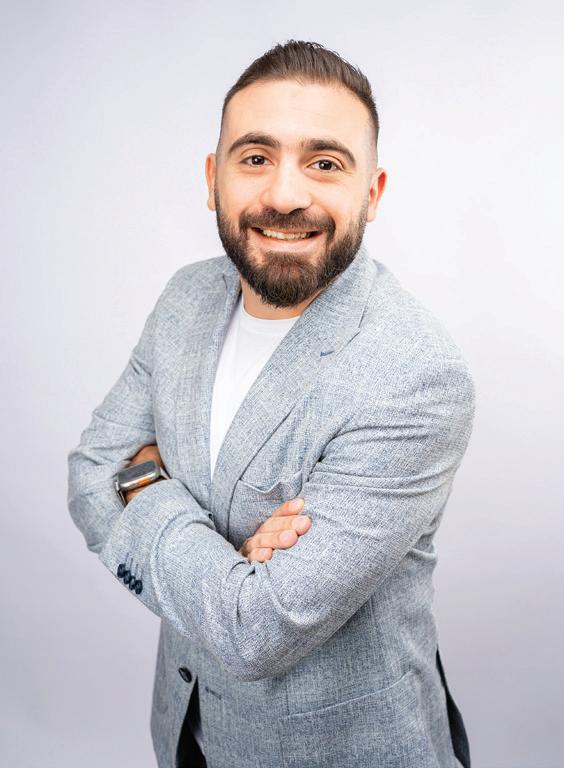
The end of third-party cookies is no longer a question of if, but when. Yet Google’s recent announcement grants cookies a temporary reprieve. This should not mean brands hit pause on preparations for a cookie-less future. Instead, we should use this extension to intensify efforts, evolving our strategies to navigate an increasingly privacy-focused digital landscape.
While Google may delay, other tech leaders – Apple and Firefox – have already moved beyond cookies, and new global privacy laws could accelerate changes in data collection standards at any time. Brands must act now, establishing resilient, long-term data strategies that withstand regulatory changes and tech disruptions alike.
So, how can brands prepare for a world without cookies?
ONBOARDING AND ENRICHING FIRST-PARTY DATA
First-party data is information collected directly from owned channels – websites, apps, CRM systems, or point-of-sale interactions. It offers brands a foundational layer of data they can control and leverage across multiple platforms. However, maximising the utility of first-party data isn’t without challenges.
One common issue is addressability and scalability. Matching the data fields from a brand’s internal systems to online platform signals often results in low match rates. To tackle this, advertisers should work with agency partners to integrate clean room solutions.
Clean rooms are secure environments where advertisers, publishers, and data providers can collaborate on data without risking user privacy. Through anonymisation and data aggregation, clean rooms enable
“PREPARING FOR A COOKIE-LESS WORLD IS ABOUT BUILDING A DATA STRATEGY THAT EMPOWERS BRANDS TO THRIVE.”
From clean rooms to alternative IDs, UM’s Abdelnabi Alaeddine shares strategies brands need to thrive in a privacy-first digital landscape.
advanced analytics and insights while preserving personally identifiable information (PII). They allow brands to combine first-party data with second- and third-party data, pushing enriched segments into online platforms with higher match rates. With clean rooms, brands often see match rate improvements and a 60 per cent increase in available impressions, driving more targeted and efficient ad placements.
LEVERAGING SECOND-PARTY DATA
Second-party data is another powerful tool in a cookie-less strategy. This type of data comes from trusted partners who agree to share their first-party data with you. By tapping into data from partners – like a food brand’s audience of ‘foodies’ or a sports network’s ‘footfall fans’ – brands can target specific audiences with higher relevance.
Second-party data extends the reach of your own insights, enhancing targeting precision. By working with compatible partners, brands can develop a comprehensive understanding of audience behaviours, enabling campaigns that resonate across shared segments.
EXPLORING ALTERNATIVE ID SOLUTIONS
As the era of cookies winds down, alternative ID solutions offer a pathway to maintaining effective ad targeting while respecting user privacy. These solutions effectively replace cookies by working within the browser environment and taking a more privacy-centric approach. There are two primary types of alternative IDs:
Deterministic IDs: Based on user-provided information such as email addresses or customer IDs, deterministic IDs create a secure, encrypted identifier. This approach works well for logged-in users but may have limited reach, as not all users log in or opt in for data sharing.
Probabilistic IDs: Using non-personal identifiers such as device type, screen resolution, or IP address, probabilistic IDs develop a unique ‘fingerprint’ to recognise users. While it doesn’t rely on personal data, this method may have challenges tracking users across devices, as companies like Apple continue to refine their privacy controls to prevent tracking without consent.
Alternative IDs bring promising advancements, yet they face scrutiny from tech giants and privacy advocates. Brands should stay updated on the evolution of these solutions to ensure compliance while making data-driven decisions.
While Google’s recent announcement offers some breathing room, brands should view this as an opportunity to refine their data strategies, not as a chance to delay them. Those that have already embraced cookie-less approaches report improvements in return on investment (ROI) by more than 50 per cent, underscoring the value of privacy-first, data-driven practices.
Now is the time for advertisers to audit existing data assets, build a solid test-and-learn framework, and collaborate closely with partners to ensure readiness for a cookie-less future. By prioritising data transparency and flexibility, brands can forge a sustainable approach that aligns with evolving regulations and consumer expectations.
The takeaway: preparing for a cookie-less world is not just about resilience; it’s about building a data strategy that empowers brands to thrive, even as the digital landscape changes.
By Abdelnabi Alaeddine, Regional Director - Digital & Partnerships, UM MENAT


















































The evolution of technology not only fuels big leaps forward in capabilities, but it also transforms how we manage the fundamentals that drive sales. Here are five key ingredients to supercharge retail media performance.
The retail media landscape is both fragmented and fast-paced, making it harder to stay on top of the latest developments. Rapidly evolving media capabilities, data opportunities, partnerships and audience insights demand agility.
Activating across diverse retailers, from local players such as Noon, to global players like Amazon, presents additional challenges: ad tech, buying models, data-sharing, metrics, and attribution windows will vary significantly from retailer to retailer.
We can now analyse the landscape using multiple sources to classify and prioritise retailers and deliver holistic recommendations for clients. Using WPP Open Media Studio we have automated this crucial step, allowing us to account for even more data points such as traffic spotting and growth potential by retailer. This leads to a more dynamic output that is constantly evolving, like the landscape.

pages to enhance visibility. This is where the beauty of retail media and the use of retailer first-party data comes into play. By mining their first-party audience data and consumer insights, brands can create truly unique and relevant content.
Not every SKU is a hero; Some are category leaders, some are gap fillers, and some have the potential to unlock new subcategories.
A tailored approach is critical for maximising each SKU’s potential and aligning them with overall business objectives. We use proprietary technology to assess performance in real-time against clients’ key KPIs, making portfolio management and KPI-based mapping essential. This empowers informed decisionmaking, leveraging data as signals to drive media optimisations.
Operational health is all about ensuring stock levels are healthy and priced competitively. Manual management of these is nearly impossible in today’s world, especially in large organisations. Even the best strategies can fail if operational health isn’t checked. It’s no good ranking first on an e-commerce platform if a client’s order can’t be fulfilled. Running out of stock or losing the buy box disrupts the optimisation’s momentum, resulting in lost sales and visibility setbacks.
GroupM’s Haneen Aburrubb shares how technology is transforming commerce fundamentals.
AI can now be used to scan product information and make recommendations, which means the quality and relevance of content will impact ranking, visibility and product recommendations like never before.
Consumers are no longer the sole audience; AI algorithms now evaluate content to ensure compliance against necessary standards and score accordingly. Good content alone is not enough. A+ content, comparison tools and enhanced ratings and reviews are now standard practice across stock keeping units (SKU) and are key factors that AI considers when assessing ranking.
To achieve the highest scores, it’s essential to have tools and technology monitoring content scores across brand and competitor
Investing in digital shelf tools can automate stock and pricing checks, providing real-time alerts for operational excellence. Bid automation tools can also address overstock and understock challenges with automated rules.
Keyword optimisation is crucial, especially with the rise of AI as a shopper assistant. Understanding how AI predicts consumer needs; influences search results; and recommends products is fundamental to shaping our search strategies.
A forward-thinking approach that considers both consumer trends and AI algorithms, using digital shelf insights and bid automation tools, should be adopted to ensure market share win.
Having said all the above, I cannot conclude without emphasising the importance of monitoring performance across the full consumer path to purchase, as well as the performance relative to the category using the full technology stack available.
Today, automation and technology are essential for executing the fundamentals of commerce. To stay ahead of the curve, it’s more important than ever to leverage technology to achieve brilliant basics, that in turn will help achieve sustainable growth for business.
By Haneen Aburrubb, E-commerce Lead, GroupM MENA



















The world of media and marketing changes at pace, and this is felt deeply in the digital space. The rapid evolution of technology, innovation and AI is building momentum. As an industry that requires continual upskilling and learning, it’s important to keep sight of what knowledge and skills will drive success.
Equipping your business with digitally skilled talent is and will continue to be, essential for growth. However, a singular focus on these skill sets won’t achieve your marketing and business objectives alone, and siloing your teams will hamstring potential.
So, what can your business do to prepare your people to deliver effective marketing today, tomorrow and beyond?
Marketing teams and agencies are broadly built and structured by function. Often, the objective for individuals is to learn everything about their craft until they’re considered specialists. This is common in digital practices as these roles often require advanced technical skills and niche knowledge.
All of this is important. However, this singular approach to talent development runs the risk of creating chasms of knowledge within teams.
You need I-shaped talent.
GroupM’s Hicham Auajjar shares how digital teams need to think beyond specialisation to drive true business results.

While ordinarily digitally skilled individuals are expected to perform particular functions, businesses are limiting their potential by keeping specialists too focused.
We’ve learnt that by upskilling our digital specialists with a deeper breadth of skills and knowledge, they combine their specialist skills harmoniously with the core knowledge of marketing and other disciplines, bringing unique perspectives that contribute to exceptional work.
HOW TO CREATE I -SHAPED TALENT
The top of your ‘I’ represents breadth. The first layer is a spectrum of marketing knowledge, skills and principles. In our digital world, the next layer is representative of disciplines, from SEO to programmatic to dynamic creative optimisation. No matter what your teams’ core specialisms are, it’s important they understand and upskill in as many, if not all areas. Why? Because breadth breeds collaboration.
The vertical of the I is the depth of the individual’s core expertise. This could be any digital discipline. Just as breadth breeds collaboration, depth strengthens individual contributions.
The foundation is data literacy. This is a non-negotiable, no matter the role. Measurement sits at the heart of everything we do; it informs strategies and business decisions. Ensure your full talent base is data-literate and practiced in the right tools and methodologies.
ONE STEP FURTHER
Imagine your ‘I’ is in a circle; this represents business acumen.
The ultimate goal of your media and marketing teams is to contribute to the delivery of business objectives, not just marketing objectives. It’s crucial your people understand your business and brand inside out; your business model, financial ambitions, competition, category and market. Make time to provide your teams and agencies with the context and information they need to fully understand your business. Transparency, consistency and clarity will accelerate growth even further.
The vastness of tech and rate of change in the digital sphere is decelerating the need for specialisms as we’ve known them. Automation and AI are alleviating time spent in the manual, monotonous tasks of the digital world, allowing us to broaden our horizons, and enhance adjacent skills that contribute to success, including stakeholder management, project management and people skills.
Help your specialists become the best versions of themselves by providing a

framework that codifies the broadness and depth of skillsets needed, something we’ve established at GroupM with tremendous success. Our team diligently mapped skills and competencies against specialisms and built clear career paths enabling our people to accomplish breadth and depth.
We’ve all heard people say, ‘I’m not sure that’s part of my role’, or ‘this isn’t quite my area of expertise’. If you want to stay a step ahead, you need your people
“DATA LITERACY. THIS IS NONNEGOTIABLE, NO MATTER THE ROLE.”
equipped with as many skills and as much knowledge as possible. Transform your talent into I-shaped marketers, and remember, breadth breeds collaboration; depth strengthens contribution. As we enter an era of cross-channel media, breadth of knowledge will equip your people to better understand the big picture and drive true business results.
By
Hicham Auajjar,
Chief Products and Services Officer, GroupM MENA











mena@groupm.com




Four hours and 40 minutes. This is the average amount of time viewers in KSA spend watching television a day, according to KSA TAM’s latest TSV viewers report. Comparatively, people spend just under three hours on social media platforms (GWI).
Despite this, we are still seeing disproportionate media spend on social media platforms, compared to TV, which has been continually underrepresented on media plans in the region for a number of years. In fact, we only see about 12 per cent of media spend going toward TV, versus 35 per cent of the ‘pie’ invested in social. So, why is this the case?
With TV’s immensely positive evolution over the past decade, there’s never been a better time to harness its power, says GroupM’s Clare Fearon.
Prior to the recent update of TAM, there was a lack of transparency and trust in the measurement of linear TV viewership. Additionally, previous buying models were pan-regional. For this reason, many advertisers ruled out TV from their plans, viewing it as an inefficient media investment particularly when their products or services brands. Addressable TV is expected to grow by 50 per cent globally by 2027, and by a whopping 125 per cent in the MENA addressable TV ecosystem by 2027.






weren’t always available in every market, or when the audiences they did seek to target, were more niche.
Whereas, social media has historically provided advertisers the opportunity to target their audiences more efficiently; measure their performance in real-time; and as a result, craft better informed strategies and decisions on their investments.
But with the immensely positive evolution of TV over the last decade, there’s never been a better time to harness the power of TV.
“THERE WILL BE MORE THAN 33 MILLION PAY TV AND STREAMING SUBSCRIPTIONS IN MENA BY 2028.”
RISE OF SUBSCRIPTION STACKING
This trend reflects the ever-increasing diversity in new streaming players entering the market. I, for one, have five subscriptions to OTT platforms – and I’m not alone.
According to Ampere, nearly 40 per cent of households in the region have three or more subscriptions. For now, most of these remain as SVOD, but other markets have seen some of these global players offer AVOD – a sign that they are coming to our region very soon. OSN+, for example, are launching their advertising imminently.

REGIONAL REACH POTENTIAL
It’s also predicted that there will be more than 33 million pay TV and streaming subscriptions in the MENA region by 2028. Additionally, platforms like YouTube have immense reach, currently reaching 2.5 million people in the UAE and more than 12 million people in KSA through CTV alone. These platforms are and will continue to provide immense targeting opportunities for
A CHALLENGING LANDSCAPE
The abundance of platforms, now available at our fingertips, provide consumers with a wealth of content to access at any time, from anywhere. But for advertisers, this presents challenges. While the vast choice of channels is a welcome addition to the lives of consumers, it has created a somewhat fragmented landscape to navigate. Some channels, for example, are only accessible through specific tech partners and walled gardens. Equally, the richness of data now available to us presents its own challenges. So, how can you holistically plan, activate and measure to realise growth for your brand?
We set out to make it as easy as possible for advertisers to access, navigate and invest in this new TV world. Our learnings have led us to create a ‘single point of access’ where the data, technology, media or content, measurement and creative capabilities, are all integrated to make it easy and effective for our clients.
By leveraging our geo-first approach, brands have been able to plan activate and optimise to households that over-index against their target audiences, simultaneously personalising creatives to be truly addressable, resulting in the ability to measure full-funnel campaign objectives. We’ve launched our proprietary product in more than 20 markets, bringing a solution to the MENA region earlier this year, knowing now is a pinnacle moment for our region. The momentum of change in the TV landscape globally and regionally has presented brands with new challenges; but as with all challenges across all channels, the industry in the region is working quickly to ensure brands can conquer and harness this new and exciting potential of TV.
By Clare Fearon, Head of Media Solutions at GroupM MENA

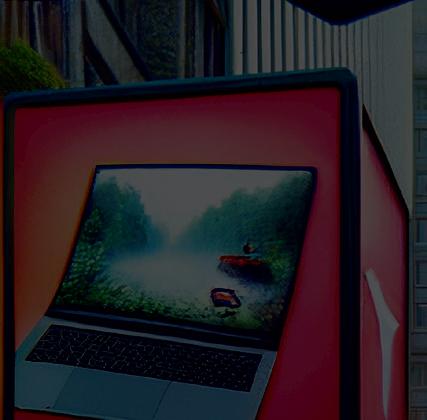
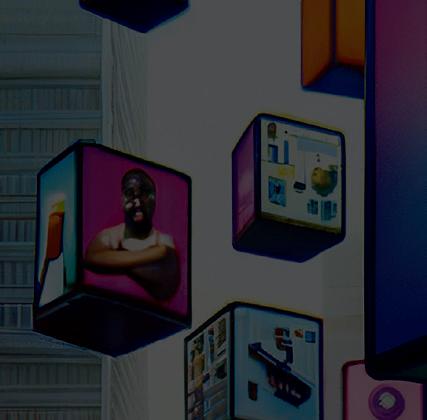
We design smart technology around people with a comprehensive suite of services designed to elevate your business to new heights. DXTA is your go to partner for a complete consumer measurable digital journey.

A Subsidiary Of:


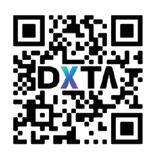

The future of advertising lies in creating experiences that resonate beyond the screen, and gamification is a vital part of that journey, says DXTA’s Ayman Haydar.
Gaming isn’t just play, it’s where consumers live, connect, and create. With a global digital community of 3.2 billion players, brands now have unprecedented access to a deeply engaged audience eager for experiences that resonate.
In a world where attention spans are shrinking, and users are bombarded with ads, the way brands connect with their audiences must evolve. Enter gamification – a powerful blend of play and strategy that captures attention and forges deeper connections between brands and consumers. At DXTA Technology, we’re helping brands make an impact in this dynamic world, turning ads into powerful, immersive moments. Through our SmartGaming solutions, every ad placement becomes a memorable experience, building connections that last long after the game ends.
WHY GAMIFICATION?
Gaming today is no longer a niche pastime; it’s a universal phenomenon with over 3.2 billion active players worldwide. Across all demographics and backgrounds, gaming appeals to people’s intrinsic need for challenge, competition, and accomplishment. Statistics show that 93 per cent of gamers play for fun, creating a positive mindset – a perfect environment for brands to connect. In fact, the undivided attention garnered by in-game ads achieves a remarkable 98 per cent viewability and 92 per cent



completion rate. These figures are simply unprecedented in traditional digital media.
The power of gamification lies in its ability to create moments of active engagement. Unlike passive forms of media, gaming is highly interactive, empowering users to become protagonists in their stories. Through this active participation, gamers develop a unique emotional investment, leading to an impressive 1.9x engagement rate for in-game ads compared to traditional formats.
BEYOND AWARENESS
We’ve redefined brand-consumer interaction with SmartGaming by merging immersive technology and story-driven advertising. When ads are seamlessly integrated into gameplay—through banners, dynamic overlays, or virtual experiences—they don’t disrupt but rather enhance the gaming experience. This approach has been shown to increase brand awareness by 12 per cent, boost brand likeability by 15 per cent, and even lift purchase intent by a staggering 23 per cent. These metrics underscore that, in the gaming world, ads are more than messages; they become part of the experience itself.
Our premium ad network, which spans diverse age groups and gaming genres, offers brands an unparalleled opportunity to tap into a highly engaged and receptive audience. With gamers spending an average of 22 seconds engaged with in-game ads, brands enjoy a rare combination of viewability and interaction that’s difficult to achieve elsewhere.
A DYNAMIC LANDSCAPE
The types of in-game marketing available today are as dynamic as the industry itself. We recommend brands explore several methods to engage with players while respecting the immersive quality of the gaming environment:
Dynamic in-game advertising: This type of advertising operates in real-time, allowing brands to purchase ad space and geotarget specific regions or demographics. It’s similar to real-world billboard advertising, but with the added flexibility of digital immediacy.
Static in-game advertising: Unlike dynamic ads, static ads remain embedded within the game for its entire lifespan. This type of advertising works best when thoughtfully integrated into the game’s storyline, ensuring that the brand becomes a part of the experience.
Advergames: Games created specifically to promote a brand or product, like those by LEGO or certain movie franchises, have seen great success. In these games, players are drawn into an environment built entirely around a brand’s identity, leading to a unique and memorable brand association.
GAME CHANGING EFFECT
The future of advertising lies in creating experiences that resonate beyond the screen, and gamification is a vital part of that journey. As consumer expectations evolve, brands must embrace new methods to connect, inspire, and leave a lasting impact. At DXTA, we’re proud to lead the charge in gamified advertising, helping brands build unforgettable experiences across 150+ countries, uniting creativity with technology to reach the next level of engagement. The message for decision-makers is undeniable: those who harness the power of gamification today will dominate the digital landscape tomorrow. Gamification is not just a trend – it’s a transformative force that redefines how brands connect, engage, and resonate with audiences. In an increasingly competitive market, it’s the game-changer that will shape the future of brand storytelling in ways we’ve only just begun to explore.
By Ayman Haydar, CEO of DXTA Technology


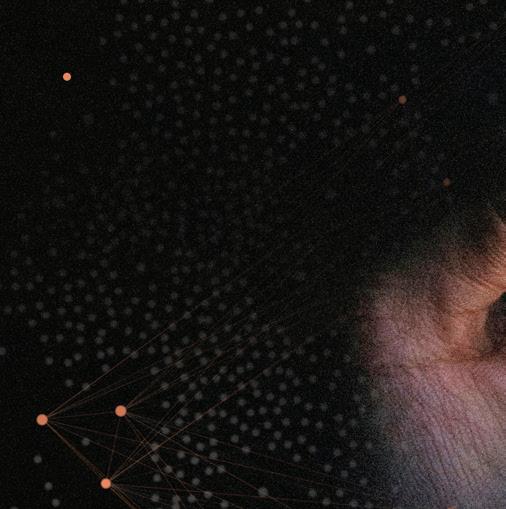










Understanding contextual advertising’s evolution and how to use it effectively is crucial for sustaining industry relevance, says Seedtag’s Sherry Mansour.
As digital advertising has evolved, so too has the concept of contextual advertising. What began as a simple method of placing ads in print media has now transformed into a sophisticated, AI-driven approach in the digital era. Understanding this evolution is key to staying ahead in today’s competitive landscape, where relevance and precision are more critical than ever.
THE ORIGIN OF INTEREST-BASED TARGETING
Contextual advertising originated in print advertising, where ads were placed in newspapers and magazines based on the publication’s content and readership. For example, ads for cars would appear in automotive magazines, ensuring they reached readers with relevant interests. In this way, ads were placed in front of the appropriate audience without knowing any personal information about them.
Contextual advertising retained its privacy-first approach when it moved into the digital space. The earliest versions of contextual advertising on the Internet primarily relied on signals like keywords present in the content of a webpage. Ads were placed based on matching keywords or phrases that aligned with the topic of the page. For example, if a webpage contained content about cars, the system would display car-related ads.
THE REVIVAL OF PRIVACY-FOCUSED STRATEGIES
As cookies began to appear, many advertisers shifted to a demographic-based approach, leading to a temporary decline in contextual strategies. However, growing concerns over privacy have led to new regulations and prompted users to turn to VPNs, privacyfocused browsers and ad blockers to safeguard their online activities. As a result, there has been a revival of interest in contextual advertising over the past few years, particularly because the world has become more privacy conscious.
AI’S TRANSFORMATION OF CONTEXTUAL
Today, contextual advertising has evolved significantly with advancements in technology and AI. Thanks to contextual AI, advanced contextual advertising has the ability to understand millions of articles in a day. By analysing keywords, phrases, images, videos, sentiment and the overall semantic meaning of the content, it gets a human-like
understanding of the article. This deeper understanding allows ads to be placed on pages that best align with their message, ensuring they reach users genuinely interested in the product or service, all while maintaining a privacy-focused approach. Going beyond isolated articles, contextual AI can comprehend the connections between articles and understand where users’ true interests lie within this complex content universe. For example, it can determine whether electric car buyers are also into luxury travel. This allows brands to target precise interests in real-time rather than broad stereotypes, capturing their target audience’s attention at scale and engaging them at the optimal moment.
Not only is contextual advertising privacy-friendly, but it can also be more effective than standard advertising formats. We tested the effectiveness of contextual advertising in Arabic language environments by partnering with global media agency Omnicom Media Group (OMG) and attention measurement company Lumen Research.
The study found contextual ads generated around 3.5x more attention per 1,000 rendered impressions than standard IAB formats.
GETTING THE MOST OUT OF CONTEXTUAL ADS
According to Statista, global contextual ad spend is forecast to grow by 13.8 per cent year on year between 2022 and 2030. While this rising interest is promising, it has led many companies to claim they offer advanced contextual advertising, making it challenging for brands to identify the best options and ensure they are maximising the benefits of this innovative solution.
“AS THE SAYING GOES: ‘GARBAGE IN, GARBAGE OUT’; WITHOUT THE RIGHT DATA, YOU WON’T GET THE DESIRED RESULTS.”


To get the most out of contextual advertising, partner with a company with significant industry experience that offers in-house contextual AI technology. Some providers depend on external data, which can limit effectiveness. AI models require time to train, and newer ones may not produce the desired results. Additionally, look for companies that use high-quality, diverse data for accurate targeting. As the saying goes: ‘garbage in, garbage out’; without the right data, you won’t get the desired results. Further, ensure you’re working with a company that offers clear reporting on campaign performance, incorporating third-party measurement for unbiased results. Lastly, work with a contextual provider that offers customised solutions to fit your specific advertising goals.
By incorporating these recommendations for your next partnership with a contextual advertising company, you will ensure your ads are effective, relevant, and scalable, reaching your audience when they are most interested in your offerings while respecting their privacy.
By Sherry Mansour, Managing Director at

Hashtag’s Amer Massimi writes why the share button–not awards–is the true measure of creative effectiveness.
There’s a lot of talk in the industry about what makes a creative campaign truly effective. While brands and agencies work hard to capture attention, the real question is: what impact does that creativity have on audience engagement, specifically in terms of sharing? After all, isn’t sharing a sign that people were not just entertained or informed, but that they were compelled enough to spread the message? Yet, despite the tangible influence of shares, we rarely see this metric emphasised when celebrating campaign success.
Creative effectiveness is typically evaluated by panels of ‘experts’ and marketers at major award shows. The biggest stages of advertising are marked by glitzy awards and recognition, with campaigns lauded for originality, visuals, and storytelling. But how is effectiveness truly measured? Are we defining success based on what experts think will resonate with consumers, or on the actual impact these campaigns have in real-world conversations and reach? Many awards still rely on subjective interpretations rather than concrete data to assess creativity, often rewarding the most polished productions; ultimately deciding whether a campaign is
“UNLIKE TRADITIONAL METRICS, THE SHARE BUTTON IS A DIRECT REPRESENTATION OF CONSUMER ENDORSEMENT.”
memorable, compelling, and worthy of sharing with their friends and family. In an era dominated by digital experiences, the setup of judging creativity needs to evolve. The audience, more than any panel, should hold the reins of determining which ads are deemed effective and successful.
The digital age has made this possible, shifting the power of judgment from a few experts to millions of viewers worldwide. Today, social media platforms provide an unprecedented level of visibility into consumer behaviour. And with this shift came a powerful metric that captures audience approval instantly: the share button. Unlike traditional metrics, which can sometimes feel vague or disconnected, the share button is a direct representation of consumer endorsement.
The beauty of using shares as a measure of creative effectiveness is its simplicity.

Any ad can be judged based on how many people felt it was good enough to share. It’s a fair and democratic metric that leaves no room for subjective interpretation; it’s not about who thought it was clever or well-designed—it’s about how many people cared enough to pass it along. In this sense, the share button cuts through the noise and provides an honest look at the ad’s true impact on its audience.
Shares represent popularity and interest in a straightforward way. They’re essentially the modern-day word of mouth, a digital nod from one person to another saying, ‘You need to see this.’ And the more shares an ad gets, the more it spreads, becoming a measure of cultural penetration and relevance. Social sharing offers a unique view into how effective a commercial is in generating interest and engaging its audience in an authentic, impactful way.
Of course, this metric can be both fair and harsh. Some ads that are highly praised by industry insiders might fall flat when presented to the public, leading to few shares. Conversely, a campaign that might not meet traditional ‘awardwinning standards could achieve viral status purely because of its relatability, humour or emotional impact. In the end, the number of shares an ad garners reflects its true effectiveness. It’s a measure that doesn’t discriminate; it simply reveals what the audience thinks. Shares, in this way, become the ultimate judge of creativity, showing what truly resonates with people and what doesn’t.
So, as we navigate the evolving landscape of digital marketing, it’s time to shift our focus. Let’s allow the share button to play a larger role in determining which campaigns deserve recognition, moving beyond industry insiders to embrace the audience’s voice. This approach doesn’t just add a layer of authenticity to our measures of success; it reflects the reality that creativity, at its best, is defined by the people it aims to reach.
By Amer Massimi, CEO, Hashtag





























Digital marketing has always been about adapting to change – whether in technology, consumer behaviour, or measurement techniques. While tools and platforms continue to evolve, many concepts remain rooted in principles developed decades ago. Today, performance remains the gold standard of success in digital marketing but achieving it has become more nuanced. Let’s explore the current landscape – where we stand and where we might be headed.
Attention metrics are a hot topic in marketing. Marketers are focused on measuring how long and how deeply consumers engage with content. For veterans, though, this isn’t a new concept. In the 1980s, advertisers in Europe and the US used memorisation coefficients to measure media effectiveness. The principle was simple: an ad’s value wasn’t just about being seen but about whether it made a lasting impression.
Today, we’re seeing this idea reborn with advanced tools. Attention metrics now provide real-time data, allowing advertisers to optimise campaigns faster. It’s a testament to how revisiting tried-and-true principles, paired with modern technology, can create effective solutions for new challenges.
When Google announced plans to phase out third-party cookies, the industry scrambled. Millions were spent on finding replacements. Solutions like syndicated ID models and contextual targeting – focusing on the content of a webpage instead of user data – were developed, with mixed results.
But Google recently delayed the removal of cookies, offering marketers more time. While cookies remain for now, the lessons learned in exploring alternatives will shape privacy-friendly strategies for the future. This reprieve won’t last forever; innovation in targeting and measurement will remain critical.
BEYOND THE LAST CLICK
For years, marketers over-relied on last-click attribution, crediting the final user action before a purchase. This approach ignores the complexity of the modern customer journey, which can involve multiple touchpoints across devices and platforms.
Advertisers now realise the importance of post-click and post-view interactions. Display ads or videos might not lead to immediate sales but play crucial roles in building awareness or guiding decisions. By understanding how every touchpoint contributes, marketers can optimise campaigns more effectively and gain a clearer picture of ROI.
Google has long been the dominant platform for search, but its monopoly is slipping. Gen Z increasingly bypasses traditional search engines, favouring platforms like TikTok or Instagram for restaurant reviews, product recommendations and travel tips.
Additionally, AI-driven tools, such as OpenAI’s ChatGPT and emerging competitors like Mistral, are redefining search. Instead of browsing endless links, users receive direct, contextual answers. For marketers, this represents both a challenge and an opportunity. It’s no longer enough to rank on
The future of digital marketing will be shaped by AI, privacy regulations and deeper insights into the customer journey, says Gamned’s Yves Michel–Gabay.

Google; brands must adapt to AI and social search trends to remain visible.
SOCIAL MEDIA AS A CONVERSION ENGINE
Social media has traditionally been seen as a space for engagement and brand awareness, with conversion viewed as secondary. However, platforms like TikTok are proving that social media can drive direct sales when paired with engaging, platform-specific content.
TikTok’s algorithm, for example, can turn a single creative video into significant ROI. However, success depends on adapting content to each platform’s culture and audience. What works on TikTok might fail on Instagram or Facebook. By tailoring content to feel authentic and native, marketers can maximise the conversion potential of social media.
WHAT DOES THE FUTURE HOLD?
The future of digital marketing will be shaped by AI, privacy regulations and deeper insights into the customer journey. Here are key trends to watch: Attention metrics take priority: Marketers will focus on quality over quantity, using attention metrics to measure the power of big ideas.
AI personalisation: Tools like generative AI will help brands create hyper-targeted content, increasing engagement and loyalty.
Growth of social commerce: Platforms will integrate e-commerce more seamlessly, turning
“THE KEY TO SUCCESS LIES IN BEING FLEXIBLE AND ALWAYS KEEPING THE CONSUMER EXPERIENCE IN FOCUS.”




engagement into purchases.
Evolution of search: Social platforms and AI will redefine search habits, forcing search engines to innovate.
Privacy-first strategies: Even with cookies remaining temporarily, privacy-friendly solutions will dominate the future.
Digital marketing is dynamic and challenging, requiring creativity and a strong understanding of changing technologies and consumer behaviours. By combining established principles with modern innovations, marketers can achieve performance in a complex landscape.
At Gamned-Biggie, we embrace this approach, supporting advertisers to navigate the evolving digital marketing world. Whether through harnessing attention metrics, optimising conversion paths, or adapting to AI and social trends, the key to success lies in being flexible –and always keeping the consumer experience in focus.
By Yves-Michel Gabay, Managing Director MEA, Gamned























It has never been a better time to work in the creative industries. We have a screen in every pocket with every tech we need to create magic. We have instant connection to the internet and can interact with the real world around us. We have an explosion in extended and mixed reality. We have social platforms and creators pushing boundaries. We have a myriad of non-traditional entertainment formats taking over our spare time. We have a canvas like no other generation of creative people, we should be thriving.
ARE WE RUNNING AWAY FROM OUR AUDIENCE?
The accepted wisdom among the marketers and agency folk is that our audience is running away from us, avoiding ads, streaming, blocking etc. I have a different perspective; I think we are running away from them.
Whether we want to admit it or not, our audience, as well as our own media habits, has changed and will continue to change. We have an explosion in gamers and gamer mindsets; millions of people watching series that are only 90-second episodes; more streaming options than ever; and virtual and mixed reality experiences that are visited by tens of millions.
Maybe the simple fact is that we have a curious and experimental audience, but we are stuck. In most cases, we are focusing on the things we have always done and doing them faster, with more automation and less soul. We are less experimental, less curious and running in the opposite direction to the people we need to reach.
So, how did we get here as an industry? A global problem but exacerbated here in MENA. It’s a simple formula. An over-reliance on mostly pointless data-driven thinking; the chase of personalisation at the expense of surprise; pressure to fill all channels all the time; growing risk aversion; shrinking budgets and teams; agency consolidations; and an increasing loss of talent on both the agency and marketing side. It’s the perfect storm of focusing on the wrong things while doing the wrong things faster and more often, running deep into the wilderness.
THE WILDERNESS
Most content exists in the wilderness, where average ideas vanish into an overwhelming sea of generic nothingness. Carefully planned social calendars, mediocre ideas and second-rate content
survive this oversaturated wilderness. We must learn to excite and captivate again.
EXCITE THE ALGORITHM, CAPTIVE OUR AUDIENCE
Brands and agencies need to move towards exciting the algorithms, captivating them under our creative spell. We must focus on high-quality content crafted for impact, rather than simply increasing output. By creating less frequent but more powerful ideas, we can focus on what genuinely engages humans: storytelling, surprise and emotion. This high-impact content stands out in a sea of sameness, breaking through algorithmic filters that prioritise relevance and viewer interest over quantity.
Let’s not kid ourselves, we live in a pay-to-play world, but we must strive to maximise our impact whether supported by media or not.

We must abandon formulaic content, and embrace creativity and craft to survive oversaturation, says Dentsu Creative’s Jon Holloway.
“WE ARE TRAINING OUR AUDIENCE AND ALGORITHMS TO IGNORE US.”
‘go to die’ here. With brands churning out material to keep pace with platforms, the flood of bland, uninspired content quickly drowns out any chance for impact. The relentless volume creates a landscape where only the truly exceptional and meaningful stand a chance, we as brands and agencies are training algorithms to ignore us, we are training our audience to ignore us, we are running headlong into the wilderness.
To escape we must abandon formulaic content and embrace creativity and craft to
THUMB-STOPPING CREATIVITY
Most of us connect with the wider world through our ‘life feed’, the screen in our pocket gives us access to a non-stop scroll of everything, instantly. From apps to social networks to websites. As marketers, we are competing to get into that feed and more importantly cut through and be remarkable.
Interrupt the scroll with thumbstopping creativity. This means crafting bold, unexpected ideas that immediately pique curiosity and evoke emotion. Whether our ideas are made for TV, built for OOH or crafted to be content-first, the problem is the same, most likely your idea will be experienced on that screen, in their pocket.
To do this, we need a few things, a simple formula: creativity + craft +time + bravery. Anything else and we are doomed to stay stuck, unremarkable and forgettable.
By Jon Holloway, Regional Managing Director, Dentsu Creative MENA
Inflation’s got businesses in a pinch, and some are turning to skimpflation – shrinkflation’s sneakier, meaner cousin – by slashing service quality instead of product size. Restaurants swap in lower-quality ingredients; airlines drop perks; and banks replace staff with chatbots, hoping you won’t notice. The gamble? That you’re too distracted to realise the missing peanuts on your flight or too worn out by the hassle of switching brands.
But here’s the catch: while customers stick around out of inertia, their basket sizes, share of wallet and lifetime value quietly shrink – churn is only delayed, not prevented. One juicy competitor, and boom – they’re out.
Cutting CX might save a few bucks upfront, but here’s the rub: As the Customer Service Skimpflation report by UJET (2022) highlights, 66 per cent of consumers report dissatisfaction with wait times, ineffective agents and impersonal automation. 87 per cent say they’d stop spending with brands that skimp. In Skimpflation Outrage, Evangelidis (2024) notes that customers feel more betrayed by declining quality than price hikes, risking emotional connections and market position. Regulators are catching on – France and Germany are considering bans on service downgrades, raising reputational risks.
Companies engage in skimpflation by over-automating services, cutting staff or training, replacing personalised touchpoints with AI, and scaling back perks. Opaque communication about these downgrades frustrates customers further.
The real solution to inflation isn’t cutting CX – it’s investing in smarter CX that balances cost-cutting with customer satisfaction. Here’s how:
AVOID DEATH BY KPI OVERLOAD Companies stuck in skimpflation obsess over KPIs, which measure how customers perform for the company (like conversion rates) rather than how the company performs for customers. As Christensen (2016) explains in The Innovator’s Dilemma, customers care more about circumstances than features – like caring less about an airline app’s bells and whistles when rushing to catch a flight for a medical emergency.
The focus should shift to the job-to-be-done, helping customers navigate through a struggling circumstance by designing for real circumstances through ethnographic research. This means moving from KPIs to CPIs (customer performance indicators). For example, ‘Nothing broke’ would be a CPI for grocery retail, while airlines might track ‘flight delay compensation efficiency’ and ‘travel purpose satisfaction’, based on
trip context (e.g. emergency versus business travel).
AVOID FEATURE SHOCK AND FOCUS ON WHAT CUSTOMERS WOULD PAY FOR Restructuring services to offer flexible options helps align resources with customer demand—like offering Wi-Fi only on flights where passengers value it.
À la carte upgrades or subscriptions prevent the waste of bundling unwanted services, reducing operational overhead. Lower-tier customers can choose self-service, while premium services –like personalised assistance – could be reserved for high-value customers.
A willingness-to-pay (WTP) exercise, as outlined by Ramanujam and Tacke
(2016) in Monetizing Innovation, fine-tunes this approach. WTP identifies what features customers value most by asking directly – through focus groups or conversations – how much they’d pay for specific options. This prevents feature shock, ensuring customers get exactly what they need without excess.
AVOID LETTING AI AND TECHNOLOGY BREAK YOUR CX
Technology can balance cost-cutting with CX – if applied correctly. But 30 per cent of generative AI projects fail (Lee, 2024, Training your own AI model probably won’t help win customers, but data will, Salesforce), often due to poor data quality. Custom Large Language
Digitas’ Elie Bassil explores balancing cost-cutting with customer experience.
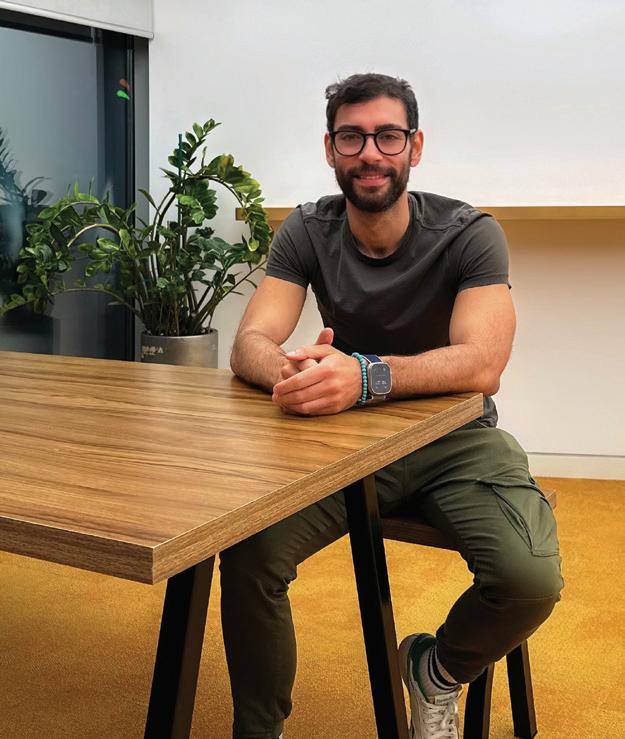
Models (LLMs) come with cost, governance, and accuracy headaches.
A smarter approach is pairing pre-trained LLMs with a solid data warehouse – aggregated, not monolithic – and using a strategy to add use cases gradually.
For example, a bank could start by improving digital loan applications instead of overhauling its entire customer service system. Focusing on high-impact areas ensures quick wins without overspending.
The AI rush, combined with layoffs, has backfired – automation alone won’t save CX. A hybrid model works better: automation handles routine tasks, while humans manage complex or emotional interactions, maintaining the personal touch customers value.
Companies can strategically incentivise behaviours that lower expenses and offer perks in return, aligning cost-saving measures with personalised rewards to create a win-win.
As Deneffe and Vantrappen (2021) suggest in How Airlines Can Cut Costs – Without Annoying Customers, airlines can reward passengers with miles for opting out of perks like lounge access, in-flight meals or Wi-Fi. Offering miles for early check-ins reduces staffing costs, while off-peak travel rewards or sustainable choices – like carrying less luggage – encourage behaviours that lower operational expenses.
To master the yin-yang of costcutting and CX, companies must avoid drowning in KPIs. Focus instead on CPIs that reflect real customer needs. Invest in what customers value most, using
“THE SOLUTION TO INFLATION ISN’T CUTTING CX – IT’S INVESTING IN SMARTER CX.”

willingness-to-pay insights to guide decisions. Apply AI strategically, with automation handling routine tasks and humans stepping in for hightouch interactions. Finally, align cost-saving initiatives with personalised rewards. Done right, this approach trims the fat without cutting into trust, keeping customers loyal even in tight times.
By Elie Bassil, Business Lead, Digitas

The programmatic digital out of home (DOOH) landscape has undergone an exciting and important transformation in recent years. What was once a static medium dominated by billboards has evolved into a dynamic and data-driven channel, empowered by the rise of programmatic technology.
Programmatic DOOH seamlessly bridges digital behaviours with offline experiences by using dynamic, locationbased ads that align with real-time factors like weather or events. It expands touchpoints across various environments, allowing brands to engage consumers throughout their day with highly personalised and contextually relevant messaging. This channel also enables agile, data-driven optimisation similar to digital campaigns, enhancing efficiency and performance. By creating memorable, impactful interactions, programmatic DOOH elevates brand recall and drives a cohesive omnichannel customer journey.
Programmatic DOOH leverages real-time data to deliver highly contextual ads, capturing consumer attention at the most relevant moments based on factors like location or weather. By seamlessly integrating online behaviour data with offline touchpoints, it bridges the digital-physical gap, reinforcing brand messages in high-traffic areas. The impact of large, vibrant screens in public spaces amplifies brand recall, while omnichannel reach ensures brands stay top-of-mind across the consumer’s day. Additionally, its data-driven, agile optimisation allows for quick adjustments, combining the strengths of traditional outdoor advertising with the precision of digital, transforming the customer journey.
Programmatic DOOH can be applied at every stage of the customer journey. It can create awareness through visually striking campaigns and brand recognition, drive consideration with targeted messaging based on location and audience demographics, influence purchase decisions with proximity-based offers, and foster loyalty with personalised content and rewards.
To illustrate the power of programmatic DOOH, consider the strategies employed by brands in automotive and retail/FMCG sectors. These companies leverage real-time, location-based ads to drive foot traffic to nearby stores and showrooms.
One notable example is the collaboration between Publicis Groupe and Hypermedia which showcases how brands in the Middle East are harnessing
Publicis Groupe’s Mazen Mroueh and Karthikeyan Palani share how programmtic prDOOH is making outdoor advertising more impactful.
the power of programmatic DOOH. The collaboration leverages data-driven insights and advanced technology to deliver highly contextual and impactful campaigns, ensuring brands reach their audience at the most relevant moments. By combining Hypermedia’s extensive DOOH network with Publicis Groupe’s strategic expertise, the clients can seamlessly integrate dynamic, locationbased ads into their broader marketing strategies, driving real engagement and measurable results.
Challenges with programmatic DOOH include fragmented inventory, making campaign management complex, and inconsistent measurement standards for




tracking ROI. Privacy regulations limit access to real-time data, reducing targeting precision, while high costs for premium locations and creative constraints further restrict flexibility.
Marketers can overcome these challenges by leveraging unified measurement tools to track both online and offline conversions, ensuring consistent attribution. Utilising dynamic creative optimisation (DCO) allows for real-time adjustments based on performance data. Collaborating with trusted DOOH networks and tech partners can streamline campaign management and reporting.
To get started with programmatic DOOH, choose a reliable DSP and tech vendor that offers strong inventory access and data integration. Focus on securing high-impact screens in locations that match your target audience. Utilise precise targeting based on demographics, location, audiences and real-time triggers like weather. Adapt creatives for large screens and leverage dynamic content for real-time updates. Establish clear KPIs, such as brand lift or footfall attribution, and track performance using measurement tools. Finally, run pilot campaigns to gather insights and optimise future strategies.
Future trends in programmatic DOOH include greater integration with AI and real-time data, enabling more precise targeting and personalised ads based on real-world conditions. Advanced attribution models will improve the measurement of offline conversions, bridging the gap between digital and physical channels.
By Mazen Mroueh, Head of Performance and Operations, and Karthikeyan Palani, Business Director – Precision at Publicis Groupe Middle East.


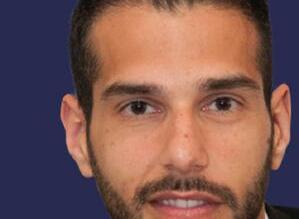











In recent years, the technological landscape has seen numerous evolutions. Yet, none compare to the current shift driven by the plummeting cost of artificial intelligence (AI). Dane Vahey of OpenAI recently highlighted that the cost per million tokens, a unit measuring AI language processing, has plunged from $36 to a mere $0.25 in the past 18 months. The staggering 99.3 per cent reduction positions AI as perhaps one of the greatest cost-depreciating technologies ever invented. Such a dramatic decline doesn’t just make AI more accessible; it fundamentally transforms the playing field for the media industry.
A COST REVOLUTION OUTPACING MOORE’S LAW
To grasp the magnitude, consider that this cost reduction eclipses the pace of Moore’s Law, which predicts the doubling of computing power approximately every

Fusion5’s Natale Panella shares how the recent plunge in AI costs could reshape the media industry landscape.
two years. The drop from $36 to $0.25 per million tokens compresses what might have been a decade of advancement into less than two years. This isn’t incremental change, it’s exponential. Barriers that once confined advanced AI capabilities to tech giants are dissolving, granting unprecedented access to businesses of all sizes.
UNLOCKING PERSONALISATION:
THE AGE OF CUSTOMISED MEDIA
Agencies can leverage AI to create thousands of versions of a single campaign, and have the freedom to query, segment and transform data at scale as they have never done before, at a fraction of the cost. This hyper-personalisation doesn’t just benefit advertisers. Audiences are becoming increasingly resistant to generic content, craving relevance and resonance in what they consume. By feeding this demand, we can build deeper connections with consumers, increasing loyalty in an era where audience attention spans are fleeting. This level of automation and adaptation was once the exclusive domain of corporate giants with

complex and costly tech stacks. Now, independent groups can afford to run the same experiments to stimulate their growth initiatives. The efficiencies gained here mean reduced wasted expenditure and the opportunity to direct budgets where they will have the most impact. But as more players gain access to these tools, what will set agencies apart? Will this democratisation lead to a vibrant and varied media landscape, or simply create an echo chamber of algorithmdriven content?
THE RISKS OF MASS ACCESSIBILITY: QUALITY OR QUANTITY?
While AI’s lower costs have unlocked potential across the industry, the
“THE FUTURE MEDIA LANDSCAPE WILL HINGE ON THOSE WHO CAN HARNESS AI WITHOUT SACRIFICING ORIGINALITY.”
accessibility of powerful generative tools raises a difficult challenge: As these tools become ubiquitous, will they contribute to the media ecosystem’s quality or dilute it? Tools that automate content generation have enabled smaller players to produce high volumes of content quickly. While this has democratised the process, it also risks reducing the uniqueness of what’s produced. Moreover, while these tools enable precision and efficiency, they lack the human discernment that often catches tones algorithms miss. Automated content lacks the spontaneity and instinctive flair that characterises groundbreaking campaigns. As AIgenerated content proliferates, there’s a risk that audiences become desensitised, disengaging from repetitive, algorithmdriven narratives.
NAVIGATING ETHICAL CHALLENGES IN AI-DRIVEN MEDIA
With accessibility comes responsibility. AI’s ability to create persuasive, humanlike content at scale introduces ethical concerns, especially in an era of misinformation. As generative AI tools become available to nearly anyone, we face potential misuse – from producing deepfakes to creating deceptive content. Media agencies and platforms must navigate these risks carefully, ensuring their use of AI upholds integrity, transparency and accountability. Without stringent safeguards, the democratisation of AI could erode public trust and degrade media quality.
A NEW MEDIA PARADIGM: THE ROLE OF HUMAN CREATIVITY

As we embrace this AI-driven transformation, we must ask ourselves what role human creativity will play. AI is exceptional at scaling, optimising and predicting, but true creative leaps often come from human intuition, insight and inspiration. The future media landscape will likely hinge on those who can harness AI without sacrificing originality. As the cost of AI continues to fall, we may find the greatest value in AI lies not in replacing human creativity, but in enhancing it. This will allow teams to explore uncharted realms of innovation, blending data with art to capture audiences in new, unexpected ways. In the end, the falling cost of AI is a tool, a powerful, transformative tool, but it is not the answer in and of itself. The future of media lies not solely in technology but in how we, as an industry, choose to use it. Will we chase efficiency at the expense of authenticity? Or will we use this newfound power to push the boundaries of creativity, reshaping media into something that resonates more deeply, speaks more truthfully, and engages more meaningfully with the audiences we serve?
By Natale Panella, Head of Digital, Fusion5


What happens when you combine Brains and Brawn?
Hearts & Science MENA is leading the charge across the region, earning global awards and securing the 2nd largest new business total in the GCC according to Comvergence.
We don’t just analyze; we take action, fueled by passion. Come for the science. Stay for the heart.
Recognized for our growth and innovation by











In an era where banking and entertainment are fully digital, it’s puzzling that some agencies still treat ‘digital’ like a quirky cousin at a family reunion—isolated and sidelined. Back in the early 2000s, when brands were cautiously entering the digital space, having specialised digital teams made sense. However, as consumer behaviour has evolved, this outdated separation is holding agencies back from meeting clients’ needs in a fast-paced environment.
Digital media entered the advertising scene as a novelty, leading agencies to form specialised teams focused on websites, banner ads, and early search engine marketing. But now, this distinction hinders agency efficiency. Integrating all channels into agency operations is crucial for streamlining processes and fostering collaboration. The days of viewing ‘digital’ and ‘traditional’ marketing as separate factions are long gone – it’s all just marketing magic! Embracing a unified approach is not merely a trend; it’s the future where all elements work together seamlessly.
As we dismantle digital silos, every channel and message becomes an essential part of the marketing ecosystem. The only thing that should be siloed is that dusty old trophy from the ‘Best Campaign of 2005’!
THE PROBLEM WITH LEGACY THINKING
The notion of digital as a separate unit is an outdated concept agencies need to discard. Alarmingly, 60 per cent of marketers still maintain distinct ‘digital’ teams, creating barriers that hinder cohesive strategies. This siloed approach is increasingly harmful, as 70 per cent of consumers seek consistent brand experiences across all platforms. Companies with integrated digital strategies are three times more likely to see significant performance improvements. Yet, over 75 per cent of marketers believe their organisations lack the agility to adapt to rapid changes. In a landscape where 80 per cent of marketers agree that integrated marketing is essential for growth, the failure to provide holistic solutions jeopardises client satisfaction and leads to fragmented campaigns.
CONSUMERS DON’T DIFFERENTIATE BETWEEN DIGITAL AND TRADITIONAL
The MENA population is rapidly adopting new content and messaging formats, influenced by cultural nuances and technology. Social commerce is thriving, with 67 per cent of UAE consumers shopping via social platforms, while 40 per cent of GCC users spend over an hour daily on short-form videos like TikTok and Instagram Reels. Voice search usage is increasing, with 43 per cent of people regularly using voice
The days of viewing digital and traditional marketing as separate factions are long gone, writes Hearts & Science’s Rasha Rteil.

assistants, and 71 per cent of millennials favouring influencer recommendations over traditional ads. Augmented reality experiences also engage users, particularly in Saudi Arabia, where 47 per cent of Snapchat users explore products via AR.
Culturally localised content drives engagement, with 63 per cent preferring regionally tailored ads. Agencies that silo digital miss the bigger picture of consumer interactions across multiple touchpoints. An unintegrated campaign can feel disjointed, leading to reduced effectiveness.
DIGITAL EXPERTISE SHOULD BE NIMBLE AND EVERYWHERE
The old model’s flaw lies in assuming that digital expertise belongs to a single team. Today’s landscape requires digital fluency across all departments. Whether it’s programmatic media, TikTok’s fast-paced auction model or real-time optimisation, agility is crucial. Siloed digital expertise delays execution and misses immediate opportunities. Instead, digital should inform everything – from strategy to creative to media planning – fuelling decisions with real-time data. The rapid pace of platforms like TikTok demands instant responsiveness. An integrated approach eliminates bottlenecks, allowing agencies to keep up with trends and client expectations.
Clients today require comprehensive solutions, not fragmented services. For instance, a retail client with separate TV and social media campaigns risks missing amplification opportunities. Integrated campaigns are shown to be 31 per cent more effective at driving brand effectiveness compared to siloed efforts. When media and creative align across platforms, the synergy enhances efficiency and effectiveness, boosting ROI by up to 20 per cent. Unified measurement is equally critical;
tracking TV and digital performance separately leads to disjointed insights. Integrated data reveals clearer optimisation paths, increasing overall campaign effectiveness by 35 per cent. Educating legacy clients on these benefits is vital for their evolution.
CROSS-FUNCTIONAL KPIS AND TEAMS ARE NON-NEGOTIABLE
If teams aren’t integrating business, creative and media KPIs, they are missing out. Brands and agencies must unite expertise from the outset – before a campaign even launches. Digital expertise should permeate every team, from account managers to creatives. This approach yields significant outcomes: companies that align cross-functional KPIs have seen a 20 per cent increase in revenue growth. Thus, dismantling silos isn’t just about efficiency; it’s about driving real business results.


In conclusion, treating digital as an isolated, specialised unit is outdated. In today’s hyper-connected world, clinging to this model is a fast track to irrelevance. In the MENA region, agencies should recognise that clients want seamless, integrated strategies reflecting how consumers navigate across platforms. The future belongs to those who dare to abandon silos, embrace total integration, and redefine possibilities. Stay rooted in the past or evolve and lead – there’s no in-between.
By Rasha Rteil, Managing Director, Hearts & Science MENA

9 in 10 of our GA audits in 2024 show that marketers' approach to measurement is a total
Don’t be a statistic. To future-proof your data collection and strengthen your measurement framework, talk to the GMP Certified experts.




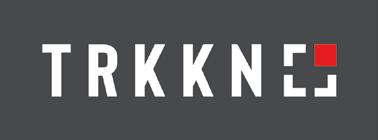
info mena@trkkn com
There’s a growing issue in the Middle East’s marketing industry. It’s something we see worldwide, but here, it’s particularly problematic: marketers are prioritising short-term metrics, especially digital performance, over long-term brand building. In the rush to secure quick wins – clicks, conversions, and short-term sales – marketers are missing out on what truly drives sustainable growth.
The irony? Decades of research from the Ehrenberg-Bass Institute, How Brands Grow, The Long and Short of It by Binet and Field, and countless other studies and research have already laid out the roadmap. However, too many marketers ignore these evidence-based principles and instead chase the next shiny digital object.
One of the biggest misconceptions we hear all the time is ‘I don’t want to do branding, I just want leads and sales’. This shows a fundamental misunderstanding of how marketing works. Leads and sales are outcomes, but they are not strategies. You can’t achieve sustainable sales growth by focusing exclusively on short-term sales activation or digital performance marketing. If you want long-term success, you need to build mental availability, targeting all buyers of your category, both present and future, making your brand easy to recall when customers are ready to buy.
Binet and Field’s 60:40 Rule is often cited as a solution to this, suggesting that 60 per cent of your marketing budget should be spent on long-term brand building, while 40 per cent goes to short-term sales activation. But this isn’t a rigid formula. It’s a general observation. Context matters, category matters and the ideal balance varies depending on your brand’s size, category and market conditions. Some marketers misinterpret this and apply it universally, which leads to misguided strategies but, more often than not, most are totally unaware of The Long and Short of It findings entirely.
NOT ONE-SIZE-FITS-ALL
Grace Kite’s research adds an important layer to this conversation: as businesses grow, the balance between brand building and performance marketing must shift. For smaller companies or startups, performance marketing makes sense –they need to see immediate returns, and their focus is survival. But as a company scales, brand building becomes increasingly crucial. Larger brands should focus on building mental availability ensuring that when customers are ready to buy, they remember your brand.
The data is clear. Brands grow by increasing both mental and physical availability. That means reaching more people, more often, across more buying situations. Sacrificing either is leaving present and future sales on the table.
Ehrenberg-Bass research has shown that brands grow by acquiring light buyers, people who buy infrequently or only occasionally. These buyers are essential to growth, yet many marketers remain fixated on loyalty and retention. In reality, loyalty is weak albeit slightly higher the larger your brand is, yet people switch between brands all the time. Your goal should be to increase your reach and ensure your brand is available and memorable when these light buyers are in the market. And this universally applies to all categories including ones you might intuitively think are not so, such as luxury.

look at their digital dashboards, see metrics like click-through rates or ROAS, and believe these numbers offer an exact reflection of reality. They don’t. Marketing is not like engineering or physics. Human behaviour is complex and unpredictable. Just because your analytics tool gives you metrics down to three decimal points doesn’t mean those numbers are precise or meaningful in the grand scheme of things. Marketers often fall into the trap of thinking that because they can measure something, it’s accurate. But in reality, these metrics are directional at best. They give you a rough sense of what’s happening, but they are not definitive truths.
More importantly, many of these short-term metrics don’t tell you anything about long-term brand health. You can track clicks, conversions, and immediate sales all you like, but if you’re not measuring brand awareness, mental availability, or emotional connection, you’re missing the bigger picture. You need to focus on the metrics that matter for both short-term sales and long-term growth.
LARGE PLAYS FOR LARGE BRANDS
If you’re managing a large brand, you need to stop playing small. The strategies that work for startups and small businesses don’t necessarily apply to bigger companies. Large brands should be focused on a broad reach, increasing mental availability, and growing physical availability across all channels.
OMG’s Chris Solomi weighs in on what Middle East’s marketers are getting wrong and what can be done about it.
The marketing funnel is one of the most misinterpreted concepts out there. It’s a useful framework for understanding how people move from awareness to purchase, but it’s often taken too literally. Many marketers seem to think they can pull consumers down the funnel by showing them a series of carefully timed ads, as though they’re engineering some kind of advertising conveyor belt. That’s not how it works.
Consumers don’t move down the funnel just because you’ve shown them a few ads. They move when they’re ready, which is often determined by life events or category entry points – situations like moving house, having children, or starting a new job. Your job as a marketer is not to ‘push’ consumers down the funnel. It’s to ensure that when they reach these moments, your brand is mentally available. It’s about making your brand easy to recall and easy to buy.
There’s another common misconception that marketers need to address – the idea that marketing is a precise, deterministic science. Many marketers

Too many big brands in the Middle East are applying the wrong tactics – hyper-targeted, short-term digital strategies that might drive quick wins but won’t contribute to long-term growth. The truth is, big brands need to reach as many consumers as possible, not narrow their focus. If you want to stay relevant, you need to be in front of more people, in more buying situations, more often.
The solution is simple, but it requires a shift in mindset. Here’s what marketers in the Middle East need to do:
1. Shift your focus: Stop obsessing over short-term digital metrics. As your brand grows, so should your focus on brand building.
2. Embrace sophisticated mass marketing: Your brand needs to be mentally available to a broad audience of everyone who buys your category. Stop relying on hyper-targeted campaigns that only speak to a niche group.
3. Use the funnel as a guide to diagnose but don’t take the concept too far: Consumers move through the funnel on their terms, not because of your ad sequence. Ensure your brand dollars are spent to address issues you have diagnosed in the funnel.
4. Understand metrics’ limitations: Just because you can measure something doesn’t mean it’s accurate, meaningful or represents any form of insight. Treat digital metrics as directional, not definitive, and make sure you’re measuring what matters for long-term growth.
The bottom line? Long-term brand building and short-term activation aren’t opposing forces. They need to work together, but the balance depends on your brand’s size, category, and market context.
When you get this right, you’ll stop chasing short-term wins and start driving real, sustainable growth.
By Chris Solomi, Chief Digital Officer, Omnicom


Cheil’s Tyler Yeom explores digital experiences that move beyond metrics to meaningful memories.
n a world inundated with digital noise, capturing and holding the attention of consumers has become increasingly challenging. While technology has revolutionised the way we communicate and consume, it’s the human element that truly resonates. As marketers, we must shift our focus from mere digital presence to creating meaningful connections that leave a lasting impression.
“THE TRUE VALUE OF TECHNOLOGY LIES IN ITS ABILITY TO AMPLIFY HUMAN CREATIVITY AND EMPATHY.” that
The digital revolution has irrevocably transformed the marketing landscape. We’ve moved beyond the mere adoption of digital tools to an era where technology is deeply ingrained in every aspect of our lives. Yet, amidst this technological advancement, a fundamental truth remains; human connection is the heart of all effective marketing.
While AI, machine learning and big data continue to shape the industry, it’s crucial to remember that true impact stems from emotional resonance. As marketers, we must strive to create experiences that not only inform but also inspire, engage, and ultimately, move people.


At Cheil, we believe in the power of humancentric marketing. We call this the Cheil Connec+ approach, where we leverage technology and data-driven insights as tools to craft solutions that not only capture attention but also forge deep, emotional connections between brands and consumers.
We’ve brought this philosophy to life through innovative campaigns.



During Ramadan, we used AI to generate personalised messages that reconnected families and friends, fostering deeper human connections. Our real-time data centre, Cheil Optimizer, has allowed us to gain profound insights into consumer behaviour, enabling us to connect with them on a more meaningful level.
During Ramadan, we used AI to friends, fostering deeper human connections. Our real-time data centre, Cheil Optimizer, has allowed us to gain profound enabling us to connect with them on a more meaningful level.

of AI in creative ways. Our Breakup Edit campaign showcased the turning heartbreak into hope and glimpse into the Galaxy experience with
We’ve also explored the potential of AI in creative ways. Our Breakup Edit campaign showcased the power of AI photo editing, helping people reframe their past and turning heartbreak into hope and nostalgia. To blur the lines between platforms, we offered iPhone users a glimpse into the Galaxy experience with our Try Galaxy campaign, fostering curiosity and engagement.













For the younger generation, we immersed Gen Z gamers in a virtual tournament with our Space Cup, creating a shared experience that transcended physical boundaries. These campaigns exemplify our commitment to human-centric marketing, where technology serves as a catalyst for emotional connection. By prioritising empathy, creativity, and innovation, we strive to create marketing experiences that leave a lasting impact.
In the early days of digital marketing, the focus was on reaching a mass audience through online advertising and social media. However, as the digital landscape has matured, marketers have realised that quantity is not always quality. Today, it’s about quality connections, not just quantity of clicks.
Human-centric marketing is the next evolution of digital marketing. It’s about understanding the nuances of human behaviour, tapping into emotions and creating experiences that resonate on a personal level. By leveraging technology to enhance human interaction, we can forge deeper and more meaningful connections with our audience.

Technology, when used thoughtfully, can be a powerful tool for human connection. AI, for example, can be used to personalise experiences, anticipate needs, and create tailored content. However, it’s important to remember that technology is a means to an end, not an end in itself.
example, can be used to personalise end, not an end in itself.
The true value of technology lies in its ability to amplify human creativity and empathy. By using technology to augment human capabilities, we can create more impactful and memorable experiences.
empathy. By using technology to augment more impactful and memorable

To succeed in this new era, marketers must prioritise empathy, embrace creativity, leverage technology, and measure what truly matters. By following these principles, we can create marketing campaigns that not only drive results but also leave a lasting impact.
To succeed in this new era, marketers must prioritise empathy, embrace creativity, leverage matters. By following these principles, we can create marketing campaigns leave a lasting impact.
Let’s embrace the future of enhances human creativity and empathy. After all, in today’s digital what we say or do, but how we make
Let’s embrace the future of marketing, where technology enhances human creativity and empathy. After all, in today’s digital world, what truly matters is not just what we say or do, but how we make people feel.
Tyler Yeom, Group Director, Cheil MEA
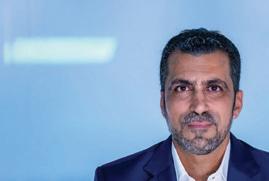


Brand mascots are making a comeback, blending nostalgia with reinvention to capture cross-generational appeal. Once static symbols, today, they embody humour, empathy and quirkiness, acting as relatable ambassadors in the digital space for younger audiences, and evoke positive memories for older consumers.
41%
Duo, Duolingo’s iconic green owl, has become a staple and cultural symbol among younger audiences, thanks to the clever content involving Duo. From witty tweets to immersive storytelling, mascots are versatile tools for PR and marketing, capable of bridging the gap between tradition and modernity.
Customers favour brands with mascots, boosting profitability.
3 out of 10
Consumers recall brands better due to mascots, enhancing recognition.


YouTube’s new feature lets Shorts creators request brand partnerships directly, streamlining collaboration and monetisation. With Shorts’ rapid growth, brands can tap into trending content while creators gain access to lucrative opportunities. By leveraging data-driven insights, YouTube fosters mutually beneficial collaborations, reinforcing its role as a platform where creators and brands thrive together.
As brands seek fresh ways to connect in a crowded market, investing in memorable mascot-driven campaigns, that can become cultural lightning rods, o ers a unique chance to stand out. By embracing this approach, brands can create enduring identities transcending fads and foster lasting emotional bonds with the consumer.
37%
Likelihood of market share expansion for brands with mascots.
24%
Higher consumer engagement achieved by companies using mascots.

Netflix’s foray into live sports is making waves, with 65 million households tuning in to the Mike Tyson vs Jake Paul fight and 50 million watching Katie Taylor’s record-breaking bout for a women’s sporting event on the same night. Expanding further, Netflix will stream two NFL games on Christmas, featuring Beyoncé at halftime, with these initiatives signalling a shift towards a holistic content strategy to captivate diverse global audiences.

Red Card-ed Branding
BOS Nation FC’s debut campaign, featuring the tagline ‘Too Many Balls’ faced backlash for insensitivity and male-oriented messaging. Critics also noted the omission of Boston’s female teams, sparking public outrage. This misstep highlights the importance of thoughtful, inclusive branding in sports, ensuring campaigns resonate with and reflect the diverse communities they represent.




AI remains a key pillar behind the new features in this month's social media updates. Here are the key highlights:
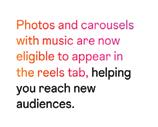

Brings carousels to the Reels tab
Photos and carousels with music are now eligible to appear in the Reels tab, extending your reach beyond just your followers.
Introduces "Profile Card"
It's a new two-sided digital business card that simplifies the sharing of profiles, replacing the clunky process of usernames and stickers.
Launches ‘automatic adjustments’
Meta has quietly introduced "automatic adjustments" for ad accounts, allowing its AI system to tweak campaigns, budgets, and audiences without advertiser approval.
Announces new AI video ad tools
Among these tools are "Video Expansion," which adapts video assets for different screen sizes, and "Image Animation" that turns static images into dynamic videos.







Rolls out "Radar"
It's a real-time trend analysis tool for Premium+ subscribers that allows them to track niche keywords and spot emerging trends as they unfold.
Revamps its ads platform
AI will be doing the heavy lifting with X's upgraded ads platform! The overhaul includes automated targeting, flexible cost-per-action settings, and one-click direct message support.


Adds more features to Shorts
Shorts now have extended video lengths, templates for easier content creation, and a dedicated trends page to keep users informed about viral content.
Enables real-time filtering by format
Creators can now filter real-time analytics by format, allowing them to track views separately for Shorts, long-form videos, and live streams.
Tests breaking news banner
LinkedIn is testing a curated news banner at the top of user feeds that will highlight developing professional stories selected by its editorial team.
Improves ad transparency
It’s expanding its partnership with DoubleVerify for independent video ad verification, providing marketers a third-party outlook on campaign impact and viewability.
Debuts new search ads
TikTok is challenging Google’s search ads dominance, now enabling brands to target users through keywords and control ad placement on its search results page.
Adds new automated ad tools
TikTok has rolled out new automated ad tools for optimisation and enhanced measurement, namely 'Smart+' and 'Conversion Lift Study’.



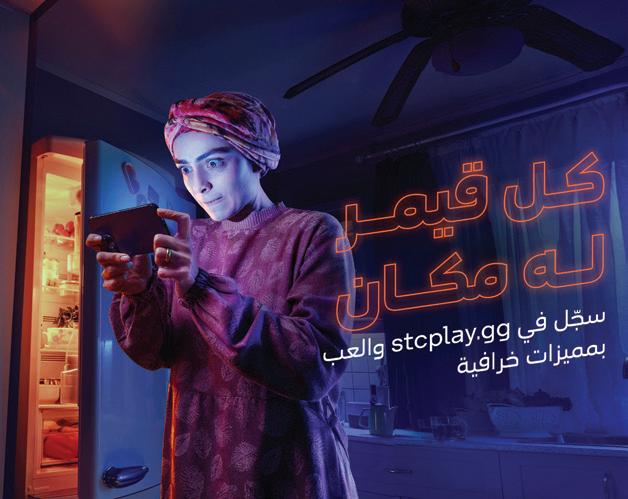




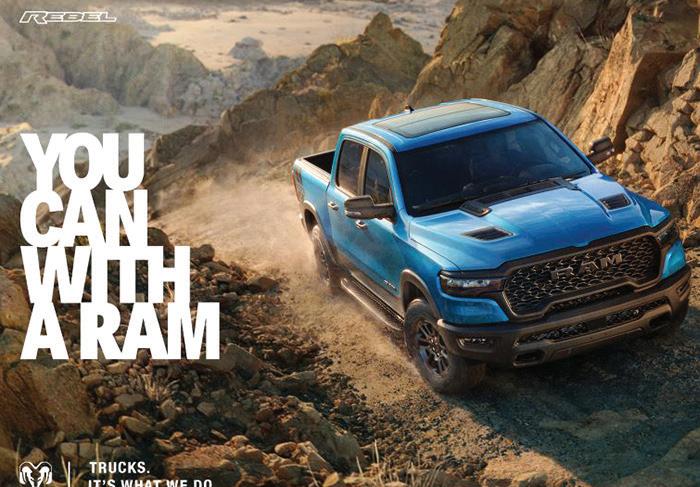


Regional Marketing Manager, BFL Group

UAE GOVERNMENT MEDIA OFFICE (1):

Dropping a flying taxi right into London’s bustling streets is audacious, but it’s hard not to grin when you see the futuristic UAE taxi parked among the old-school icons of London. After all, the UAE is always at the forefront of technology, always working towards the future, proving once again that it’s not just ahead of the curve; it’s redefining it. Bold move, but maybe keep a parachute handy, just in case.
STC PLAY (2):
This campaign successfully highlighted the diversity of today’s gaming community. However, for the campaign to be more impactful, it would benefit from more contextdriven storytelling, showcasing how these individuals really integrate gaming into their lives or careers. The campaign could also use a stronger call to action by offering exclusive games or special offers to encourage people to engage more with the platform and connect with other gamers.
PUCK (3):
A simple yet impactful approach to promote family bonding through the combination of food and play. The initiative showcases the pleasure of playing Monopoly, combined with the comfort of enjoying a tasty cheesy snack. This relatable connection resonates well with the experience of family bonding over a game. A job well done on highlighting how Puck can be part of those precious moments, making them even more delightful.
RAM (4):
The strategic humour and the innovative brand positioning approach made Ram’s campaign a success. The notable move from the typically serious and powerdriven tone of truck ads redefines the consumer’s perception towards the brand. The idea is refreshing, and I can see how it would resonate well with a younger and more diverse consumer base, especially with its ‘can-do’ attitude that empowers its owners to break barriers.
PUMA (5):
I appreciate the culturally driven initiative that showcases grassroots street cricket players in the UAE. It focuses on giving recognition to the unsung heroes of the sport, who are generally labour workers with limited access to proper cricket grounds. The spot creates a meaningful emotional connection that captures the audience’s attention. Aligning with Puma’s global sports ethos, the campaign empowers and honours the dedication of these everyday athletes.
Creative Director, Tarek Nour Communications


UAE GOVERNMENT MEDIA OFFICE (1):
This work replaces the ordinary with the extraordinary: a vivid yellow flying taxi. This was more than an installation; it was an unforgettable encounter with the future. By juxtaposing London’s legacy of tradition with the UAE’s forward-looking ambition, the campaign sets a striking tone. It brilliantly married physical presence with social virality. A futuristic marvel in my opinion.
STC PLAY (2):
It’s refreshing to see the breaking of old stereotypes around gamers and a celebration of gaming’s true diversity. The execution brings this message to life through playful, unexpected visuals that keep viewers engaged, showcasing unique styles and personalities within the gaming community. The message is clear: gaming is for everyone.
PUCK (3):
The campaign picks the perfect setting against everyday moments, showcasing how moments like breakfast or snack time can become opportunities for fun and connection. This family-style spot puts a heartwarming yet fun spin on sharing core family moments together. With playful social media films, limited-edition packaging and immersive 3D experiences, Puck and Monopoly position themselves as creators of joyful family moments.
RAM (4):
I really appreciate how the brand went all the way bold to shake up the perception of trucks in the Middle East. It challenges the conventional and makes you feel empowered to drive a Ram truck. The spot does a great job of showcasing the truck’s power and versatility while still gripping the viewer’s attention.
PUMA (5):
This is an honourable representation of how local athletes are the heroes of their sport within their local communities. These stories are real, they’re authentic and they celebrate the ones who don’t get to feel like champions every day. The offering of custom jerseys and mapping their pitches on Google Street View is an admirable way of recognising these admirable athletes, without the fluff.
UAE Government Media Office
Title: Bring Your Impossible Agencies: Impact BBDO and The Experiential Group Production house: Omnicom Productions
Title:
Ram Title: You Can With a Ram Agency: Publicis Middle East Production house: Moreish
Puma Title: Play The City Agency: M&C Saatchi Production house: Tomorrow Film Agency

CFI Financial Group has appointed ZIAD MELHEM as Chief Marketing Officer (CMO). Melhem brings extensive expertise in financial markets to the role, having successfully built brand identities that resonate with clients across diverse regions. As Chief Marketing Officer, Melhem will lead CFI’s global marketing vision, amplifying the brand’s reach.
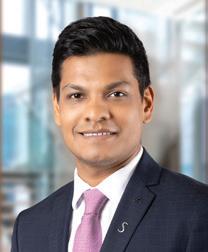

Sobha Realty has promoted ASHISH PARAKH to the position of Chief Sales and Marketing Officer. Parakh began his journey at Sobha Realty as a management trainee and has steadily risen through the ranks to lead a team of more than 700 professionals across key functions, including sales, marketing, channel relations, sales operations and hospitality. The appointment also highlights Sobha Realty’s brand belief in nurturing talent from within. empowering individuals who demonstrate grit, potential and dedication to excellence.

With more than 17 years of experience across diverse industries, DIAB NASSAR has rejoined Golin MENA in Saudi Arabia. The agency said that the move aligns with its aim to
strengthen the agency’s presence in the Kingdom, supporting both its regional client portfolio and its many Saudi-based clients.

UM MENAT has promoted JAD DAOU to Deputy General Manager for the UAE, where he will lead the agency’s newly launched HighGrowth Unit. The unit is a pivotal component of UM’s growth strategy, focusing on driving substantial business impact for clients with high-growth potential. Daou brings more than 15 years of experience and a track record that includes leading key accounts such as McDonald’s, Dyson and Modon.

M&C Saatchi Sport & Entertainment has appointed ROSS WATSON as Managing Partner to lead its entrance into the UAE market. Watson intends to bring his extensive experience in multi-market campaigns for brands based in the Middle East. He plans on combining his global knowledge and expertise of the agency’s London HQ with local market expertise to bring clients in the region global thinking with a local nuance.
Big Kahuna Films has appointed FIRAS MEDROWS as the Chief Operating Officer at Vibe Content Creators,
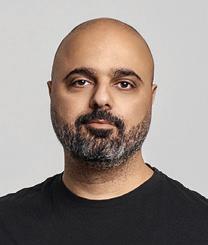
which it established as an entity to meet the demand for low-cost, small-to-medium-scale productions. ASHISH VARGHESE has also joined the team as Director and Executive Producer. The production house claims that partnering with Firas and Ashish was a pivotal decision for Vibe’s success. Big Kahuna Films also claims the two additions bring a wealth of expertise, from production and creative direction into its workflow, enhancing both quality and efficiency.

MSL Group Middle East, an agency that is a part of Publicis Groupe Middle East, has appointed NADIN AL-ALAMI to spearhead the agency’s operations in Saudi Arabia, focusing on driving business growth, enhancing client relationships and exploring new opportunities in the market.
As the new Business Lead for Saudi Arabia, Al-Alami will lead with a keen focus on driving business growth, enhancing client relationships and exploring new opportunities in the market.
Her role will also involve advancing the Groupe’s ‘Power of One’ model, which integrates various capabilities within Publicis Groupe to deliver comprehensive solutions for clients. The appointment comes as MSL Group continues to focus on delivering tailored, marketrelevant solutions to meet the evolving needs of clients and bolster its presence in Saudi Arabia.


This month, The Spin received half a dozen fun submissions, adding to the assortment of photographs that we have been discreetly collecting.
The first one was captured while enjoying the wonderful hospitality of a hotel in Saudi Arabia. During their stay, The Spin was greeted at their room by the hotel’s housekeeping attendants, who asked whether The Spin would like any “irony”. “Would we like some what?” The Spin asked. After requesting the housekeeping staff to repeat themselves for clarity a couple of times (read: “Huh?”), The Spin’s confusion became evident to the staff. They asked whether they could “show” what they meant instead of repeating the word ‘irony’ at varying speeds. They slid open a cupboard within the hotel room and pointed to the laundry bags, which had us laughing out loud. The eco-friendly laundry bags had a call to action that read, “Let us do the dirty work, so you don’t have
Nemo movie was never released and the halal family movie night was just meant to be a wild goose chase, which makes the phrase “Inshallah they find him” much funnier, especially for people who searched Finding Nemo 2 online to see whether it was childfriendly, only to find out that they, indeed, couldn’t find him.
Speaking of chasing wild geese, The Spin received an email submission from customers of a vexed restaurant owner who believed that geese were getting

into his yard because his customers failed to close the front gate. The

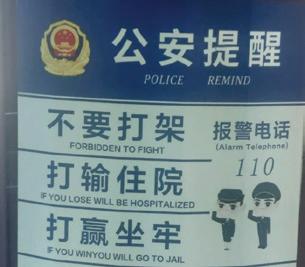


Another submission had The Spin thinking out loud, “Po-ta-toes! Boil them, mash them, stick them in a stew.” When The Spin voiced this out loud, a colleague from across the newsroom retorted, “Potato-pot-ahto, tomato, tom-ahto”, responding to a Lord of the Rings reference with one from When Harry Met Sally. What prompted this exchange? A photograph of a misspelt sign at a grocery store that read “Pototo”. We guess that’s one way to distract


